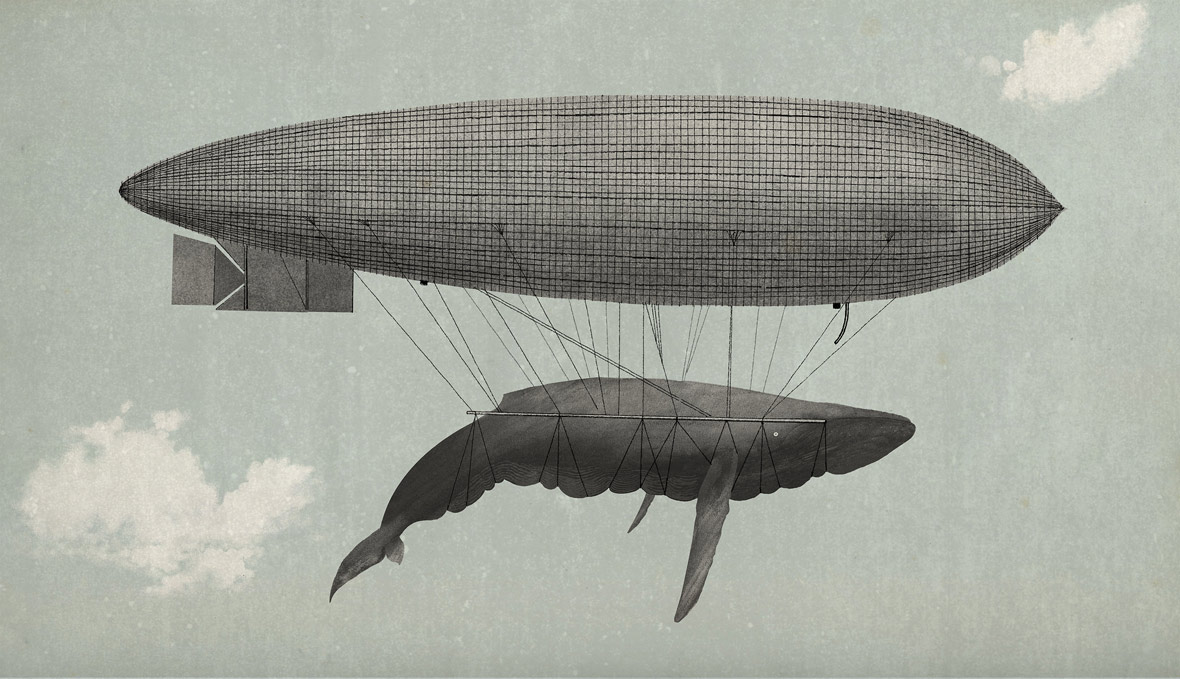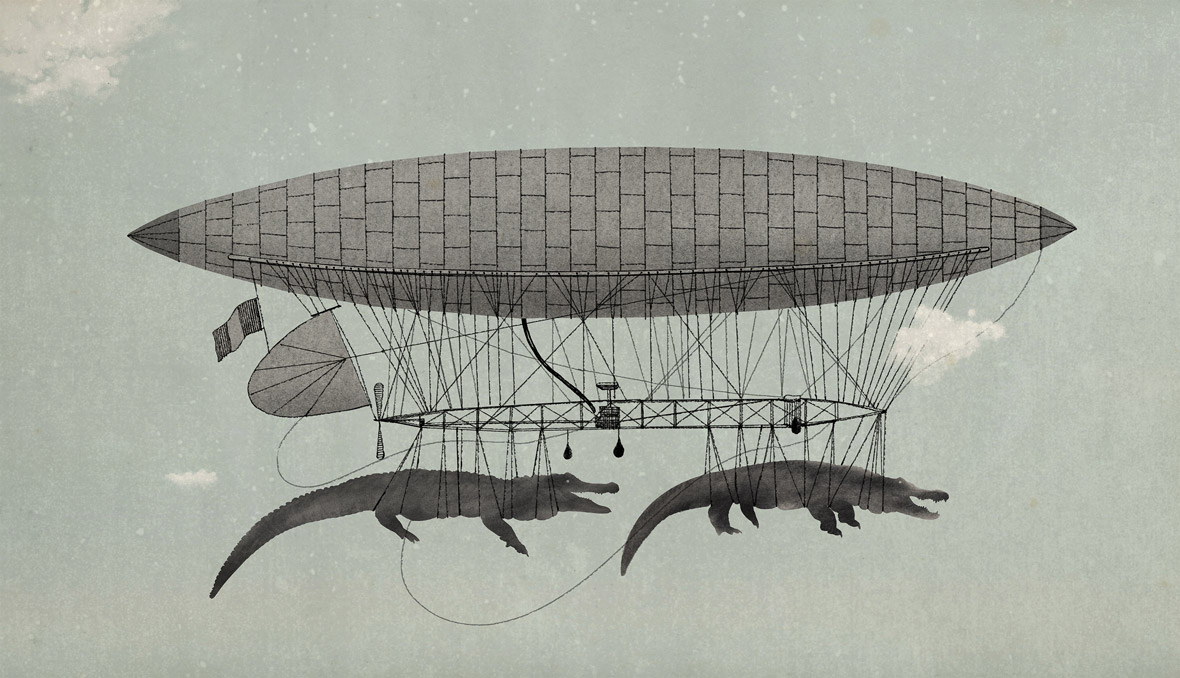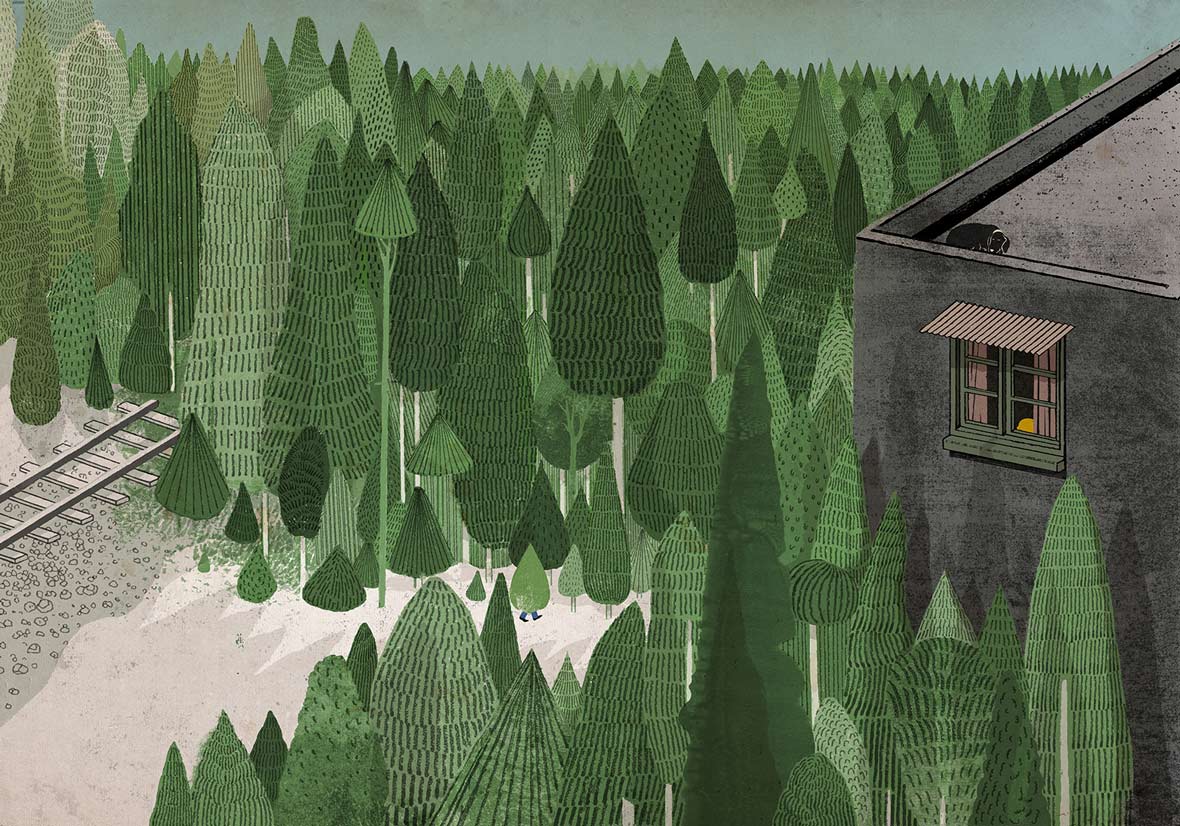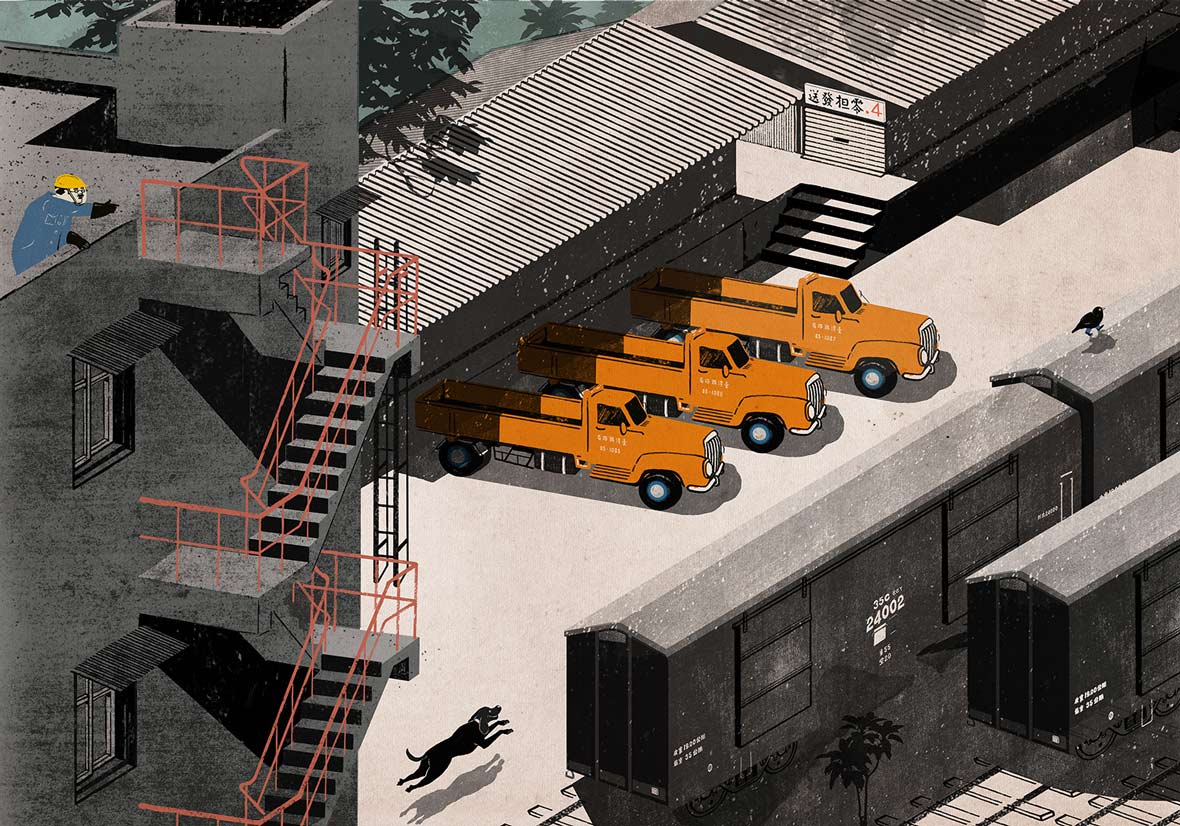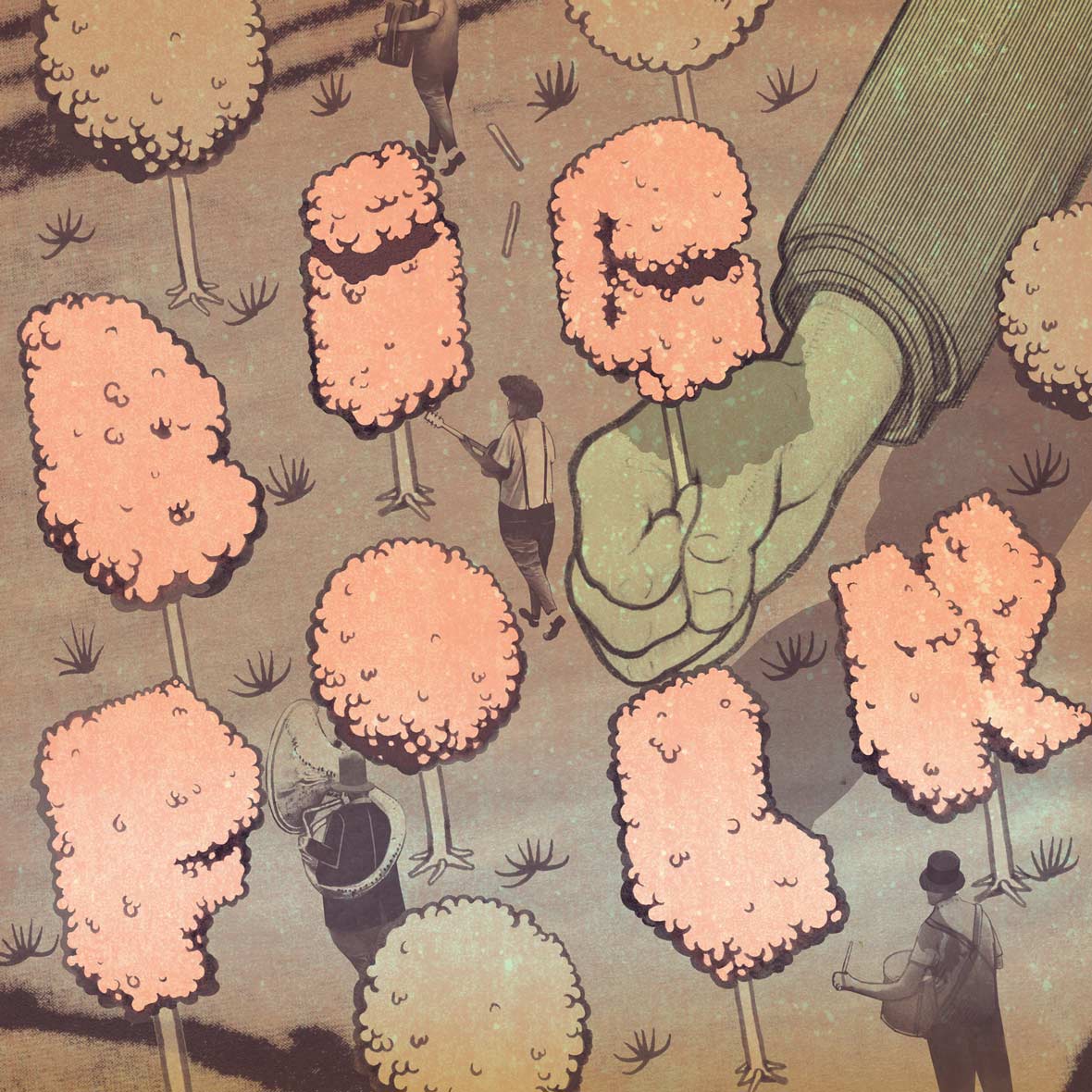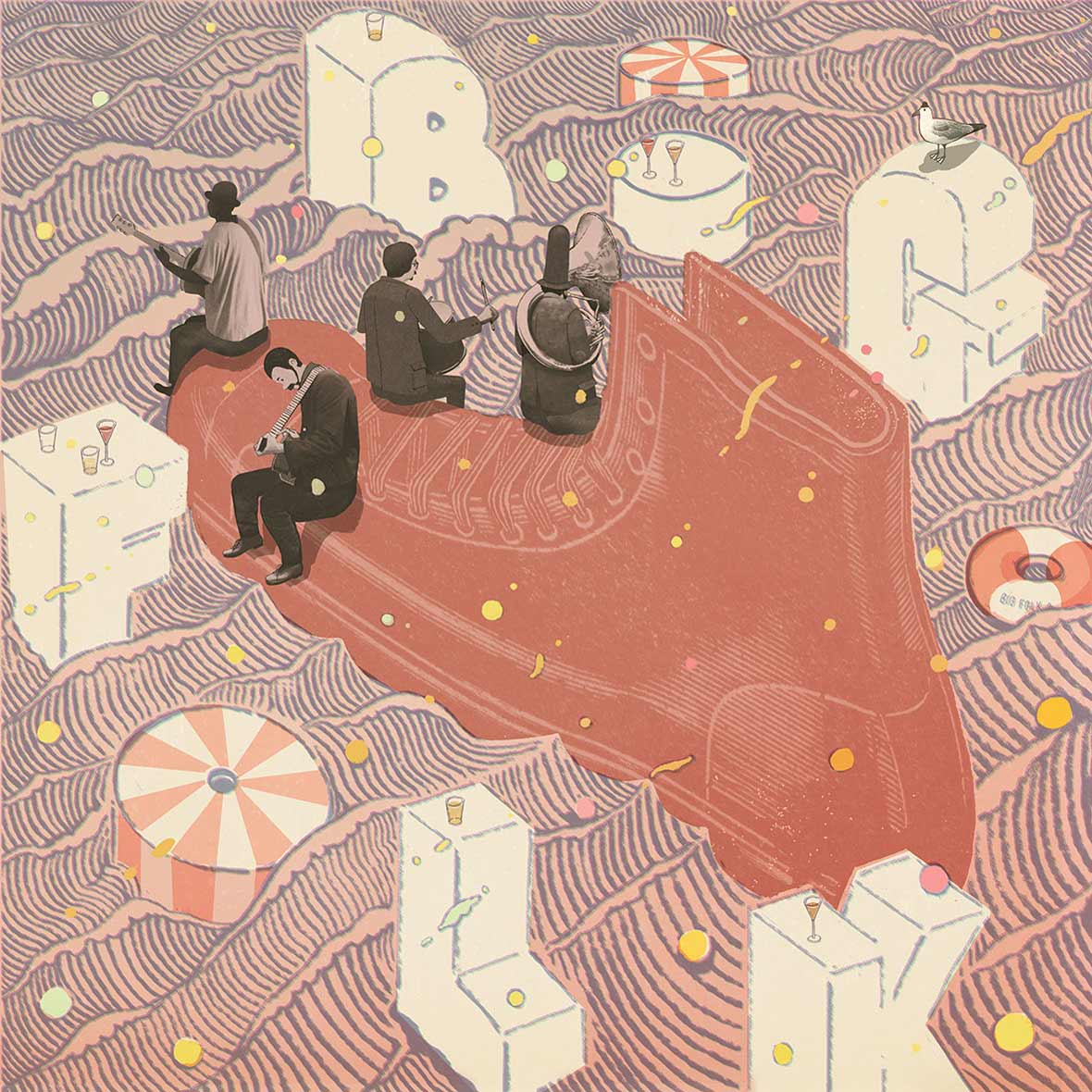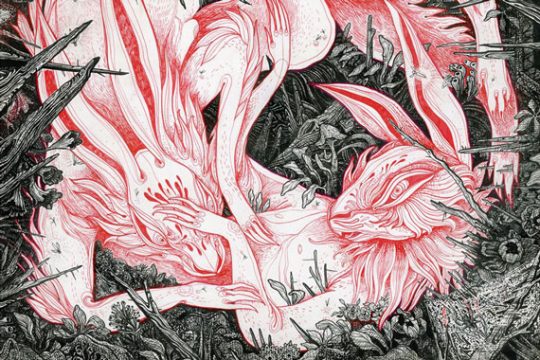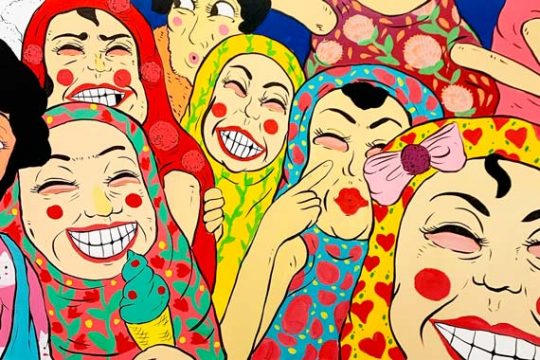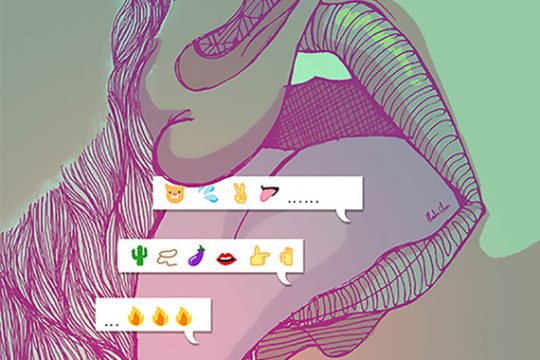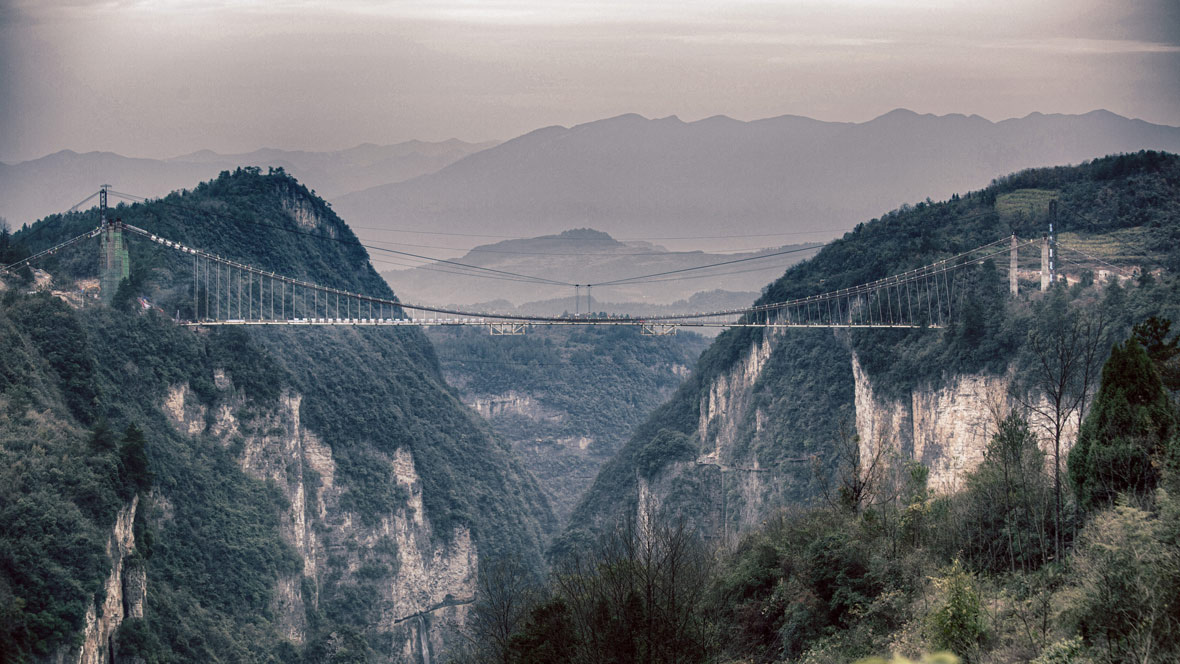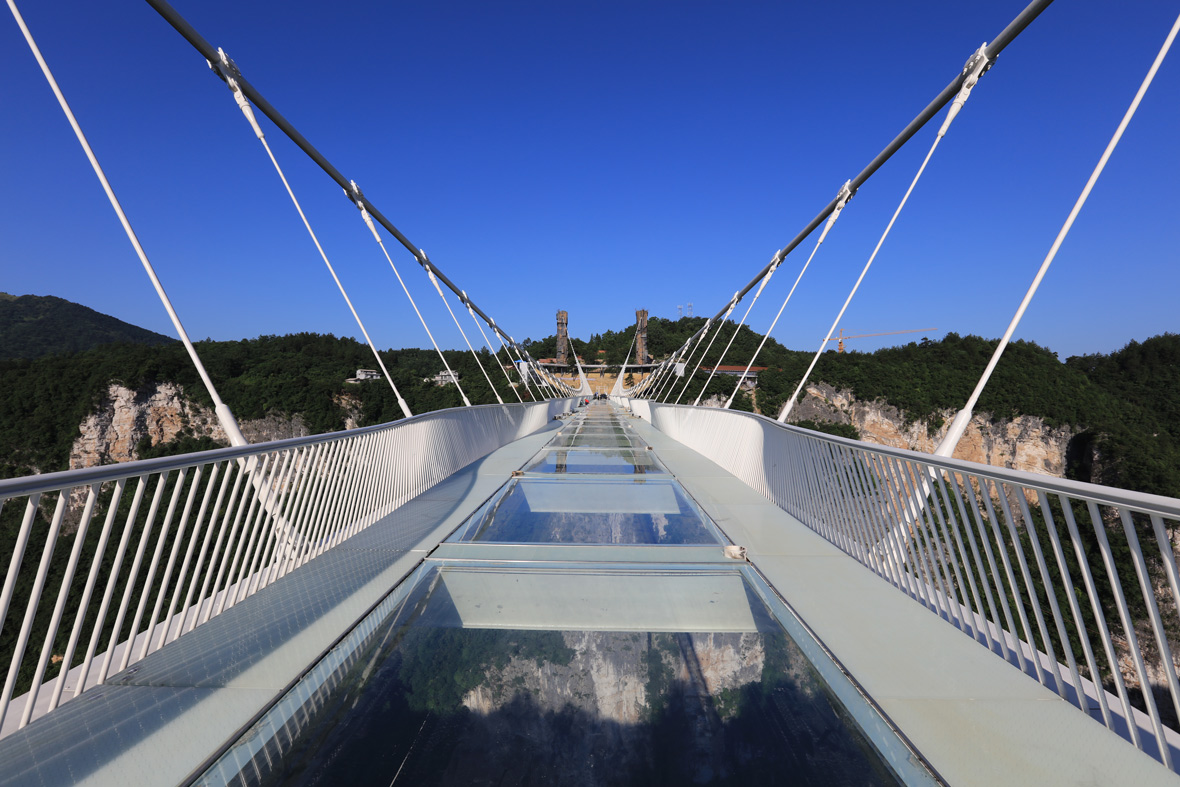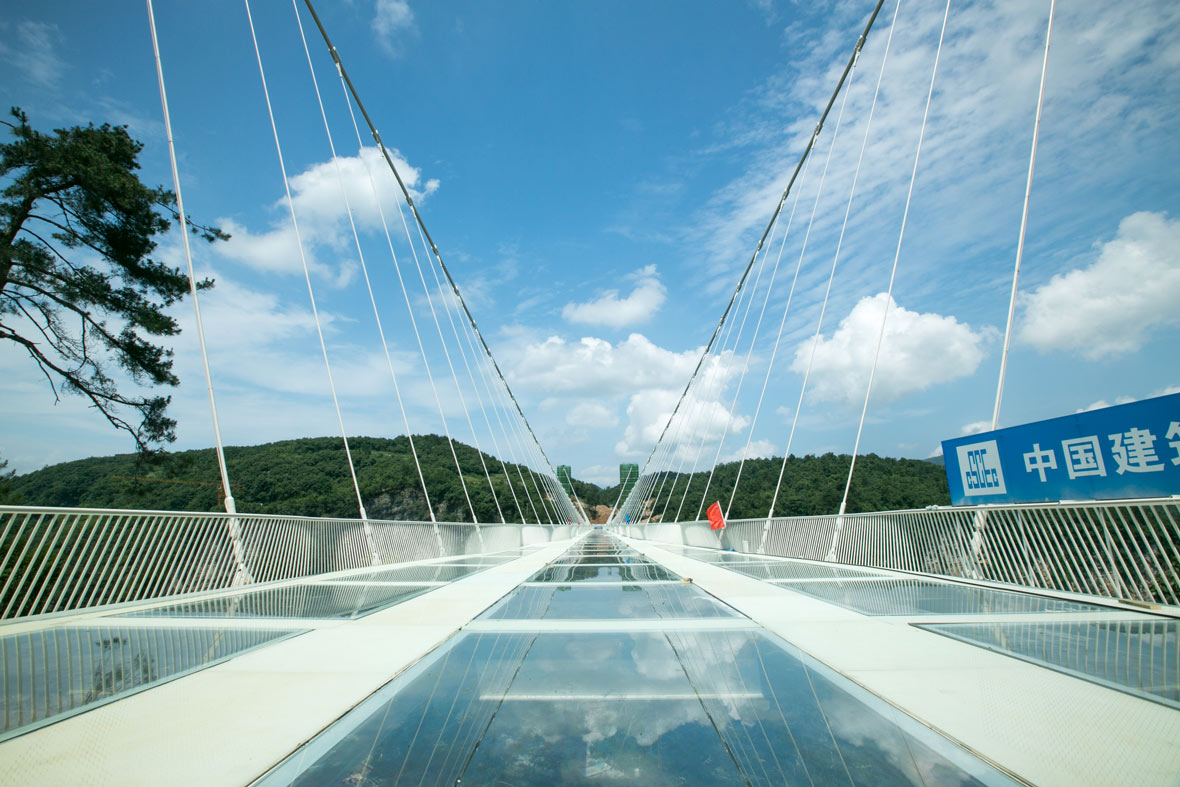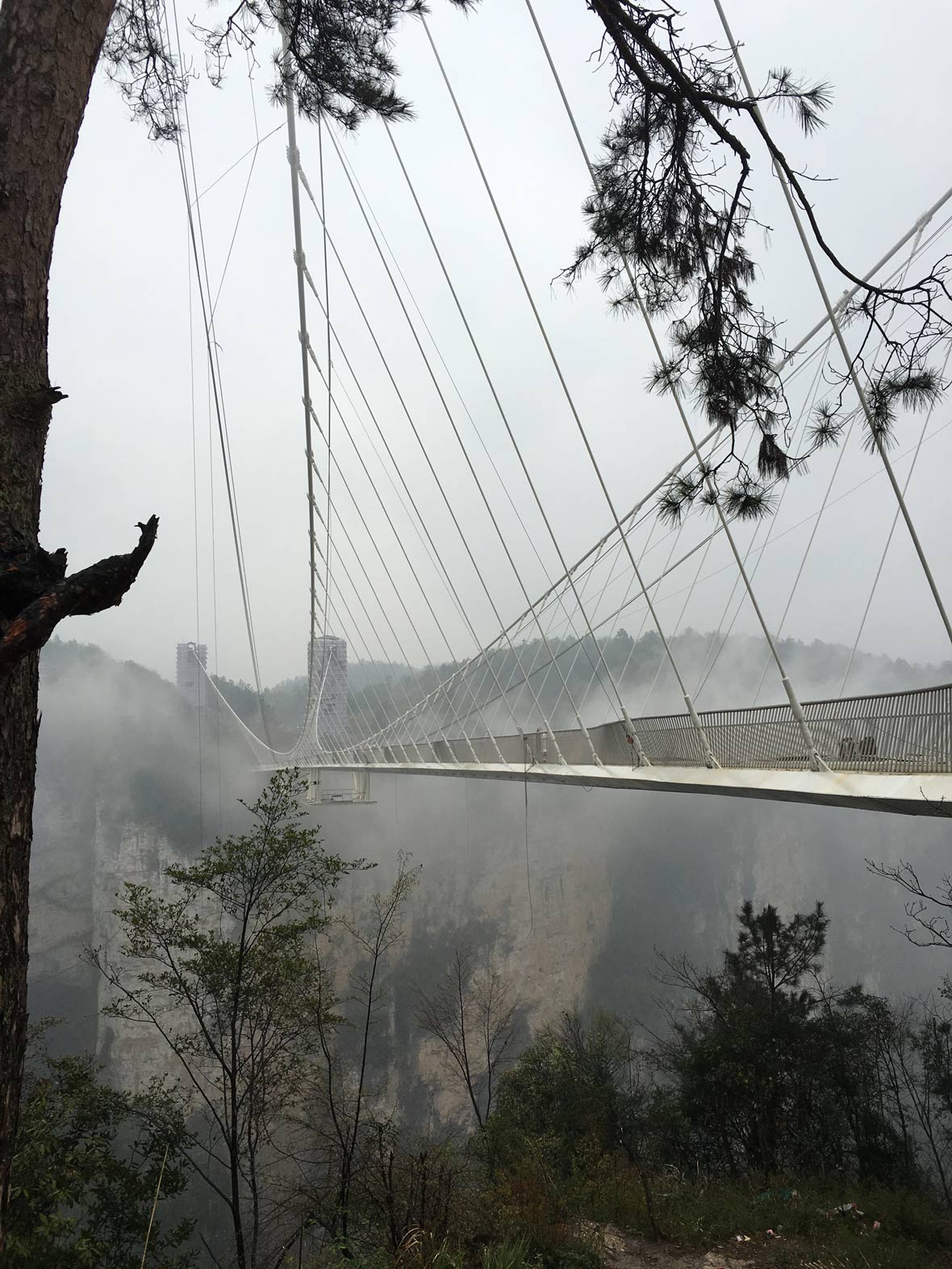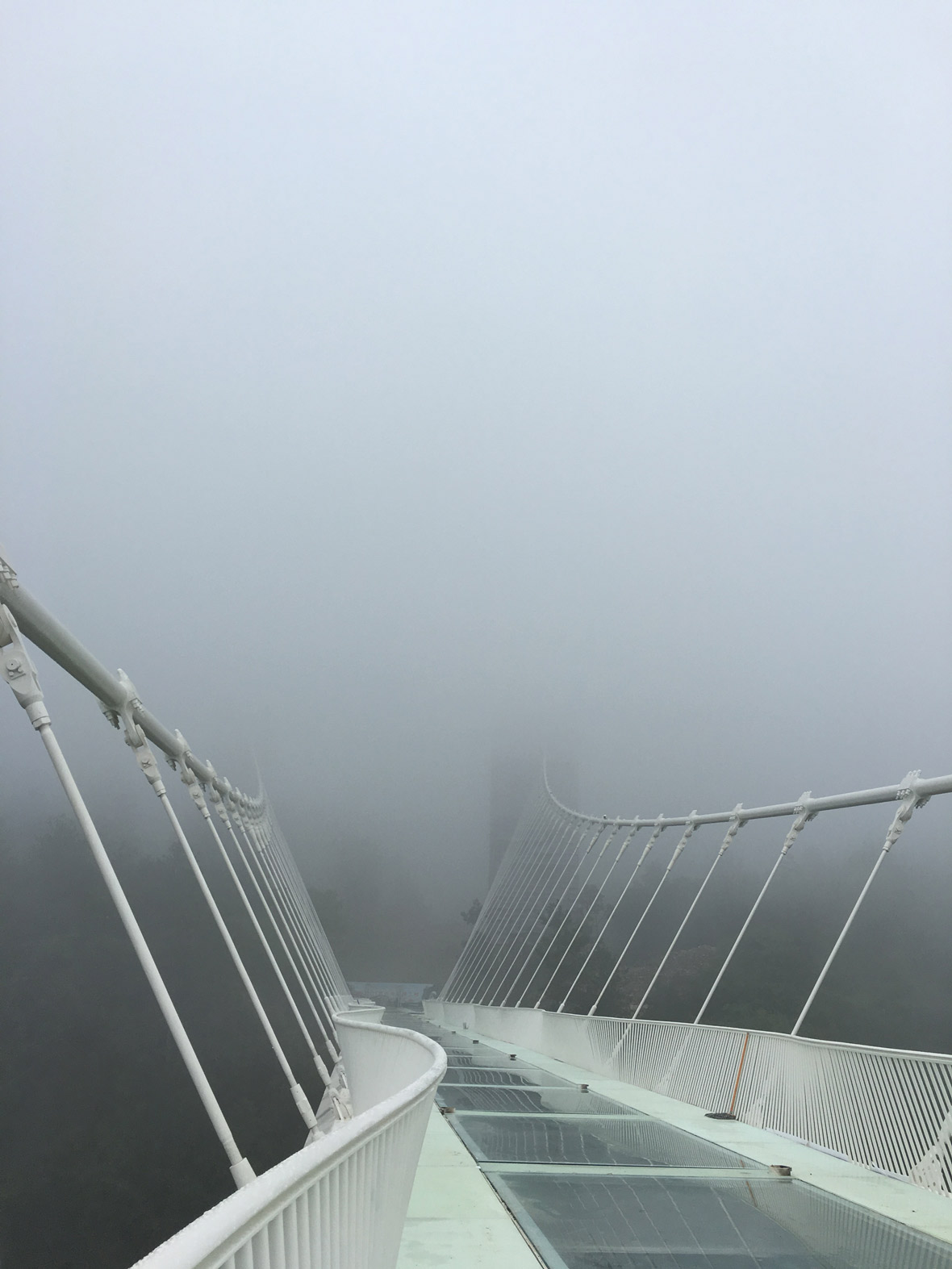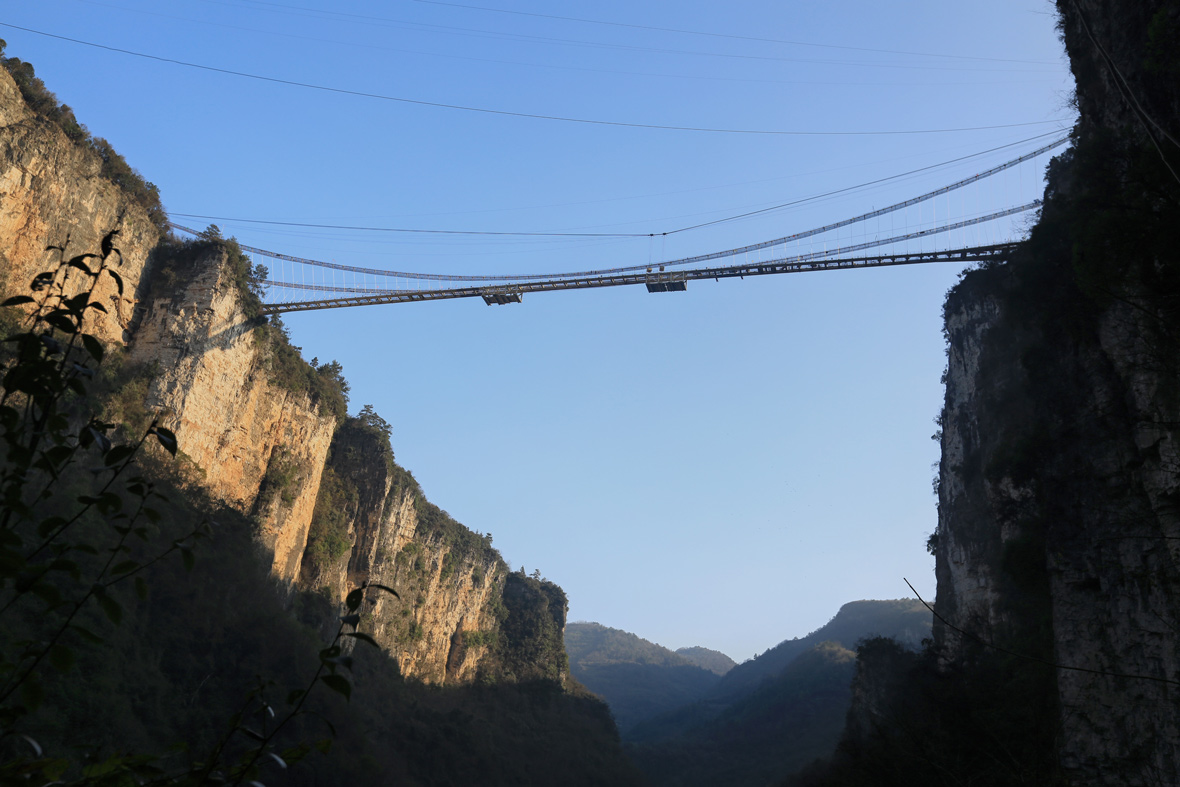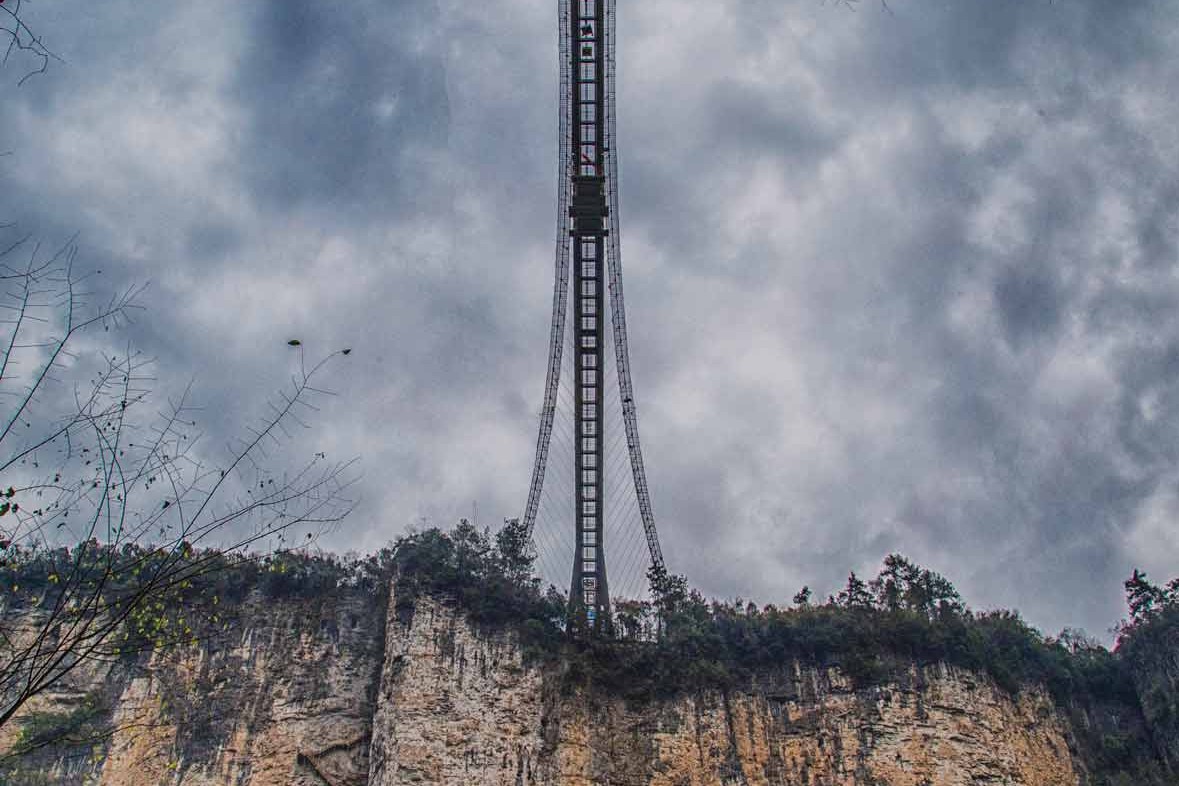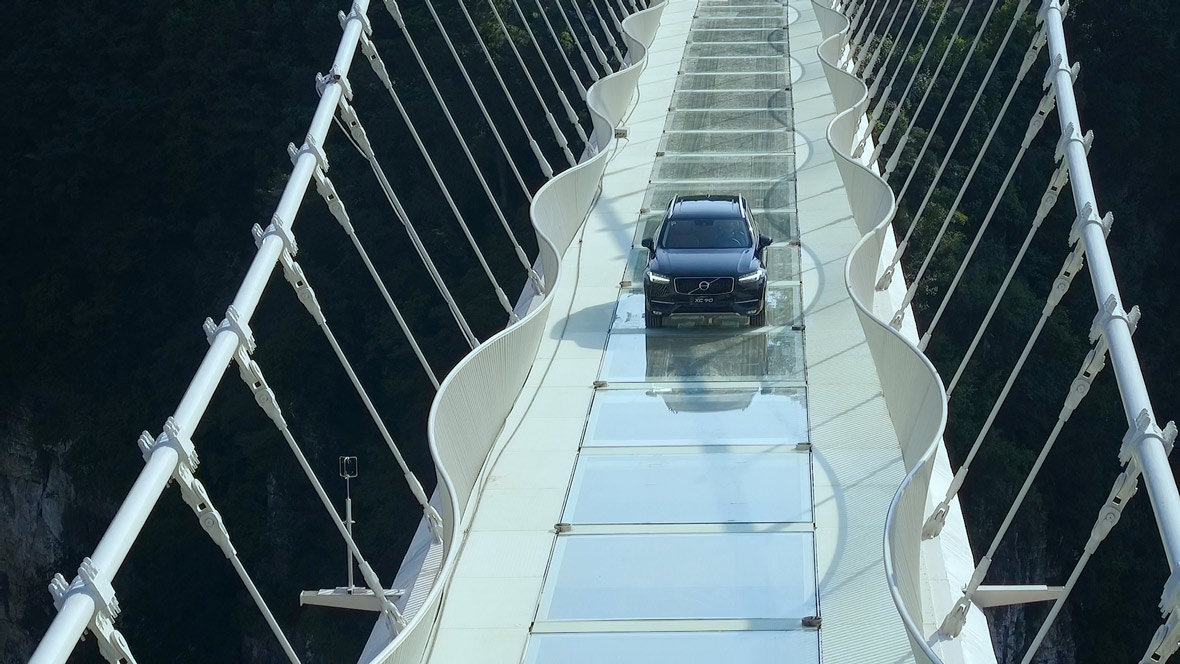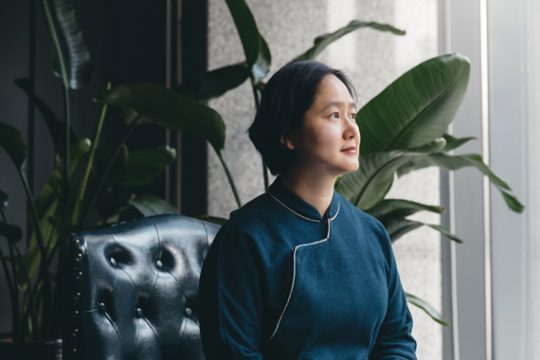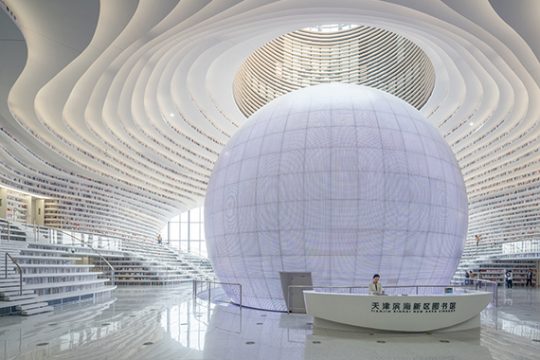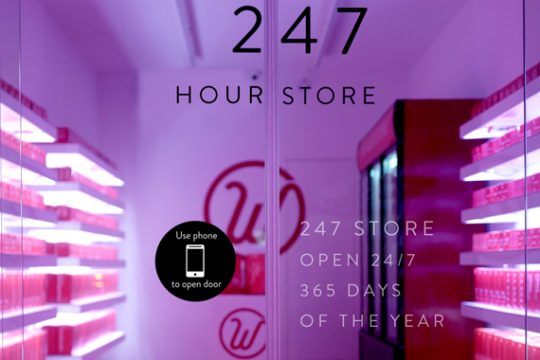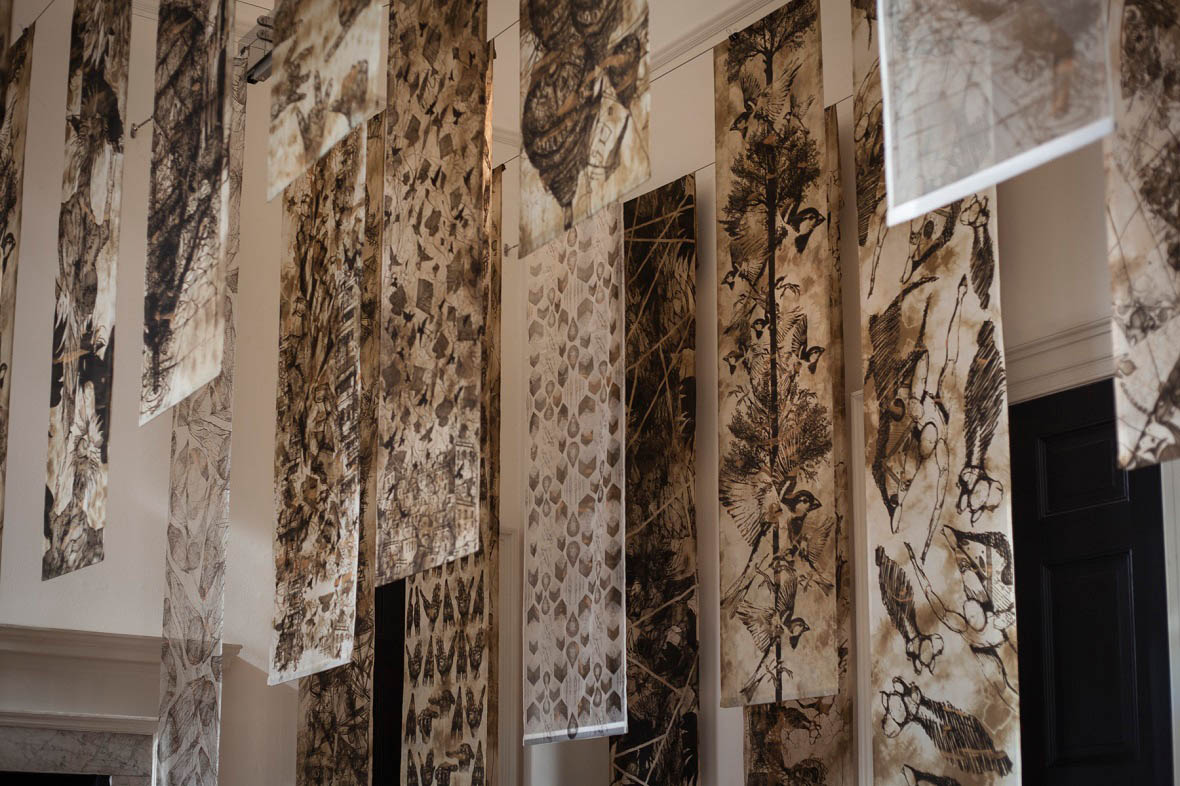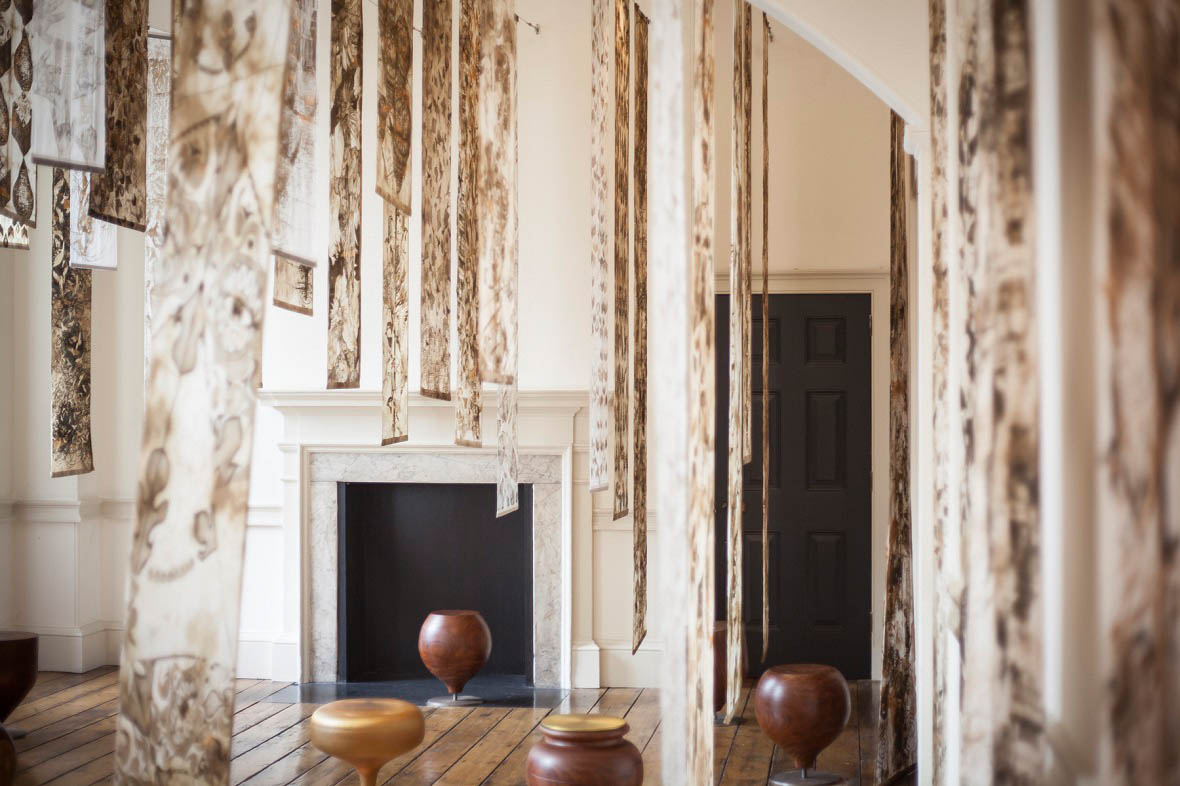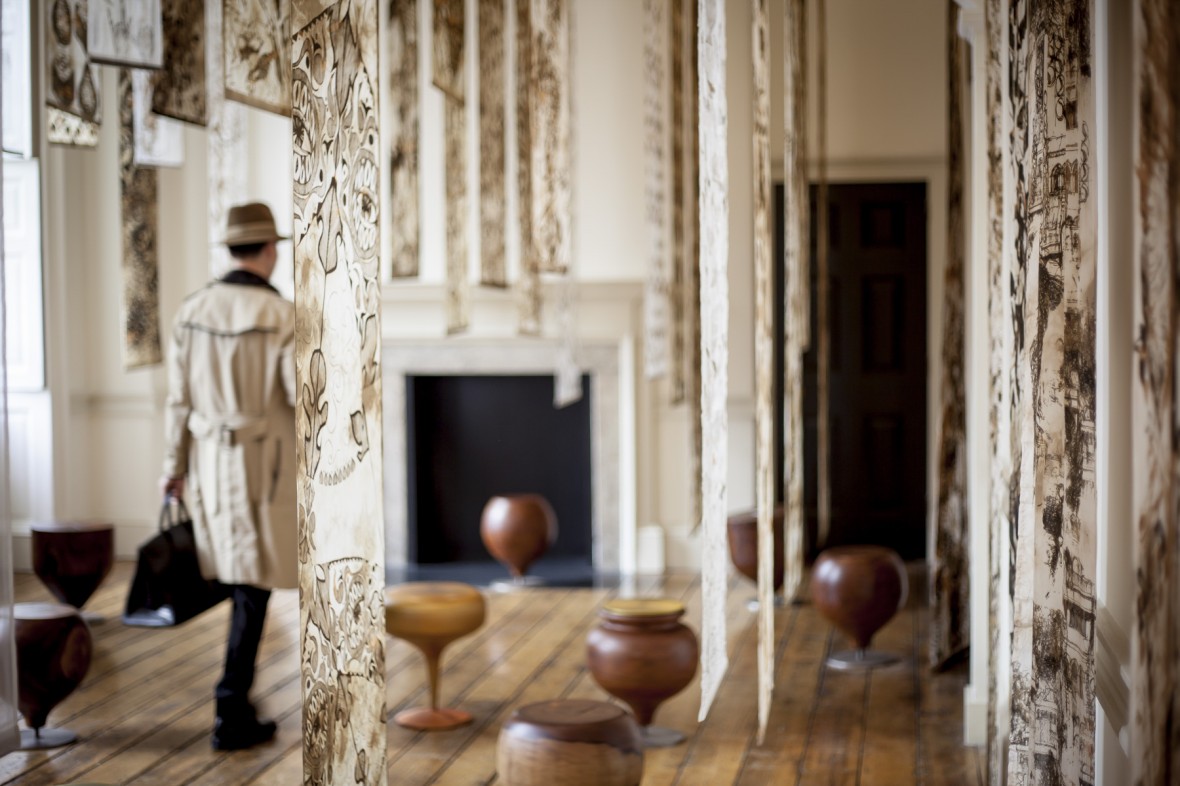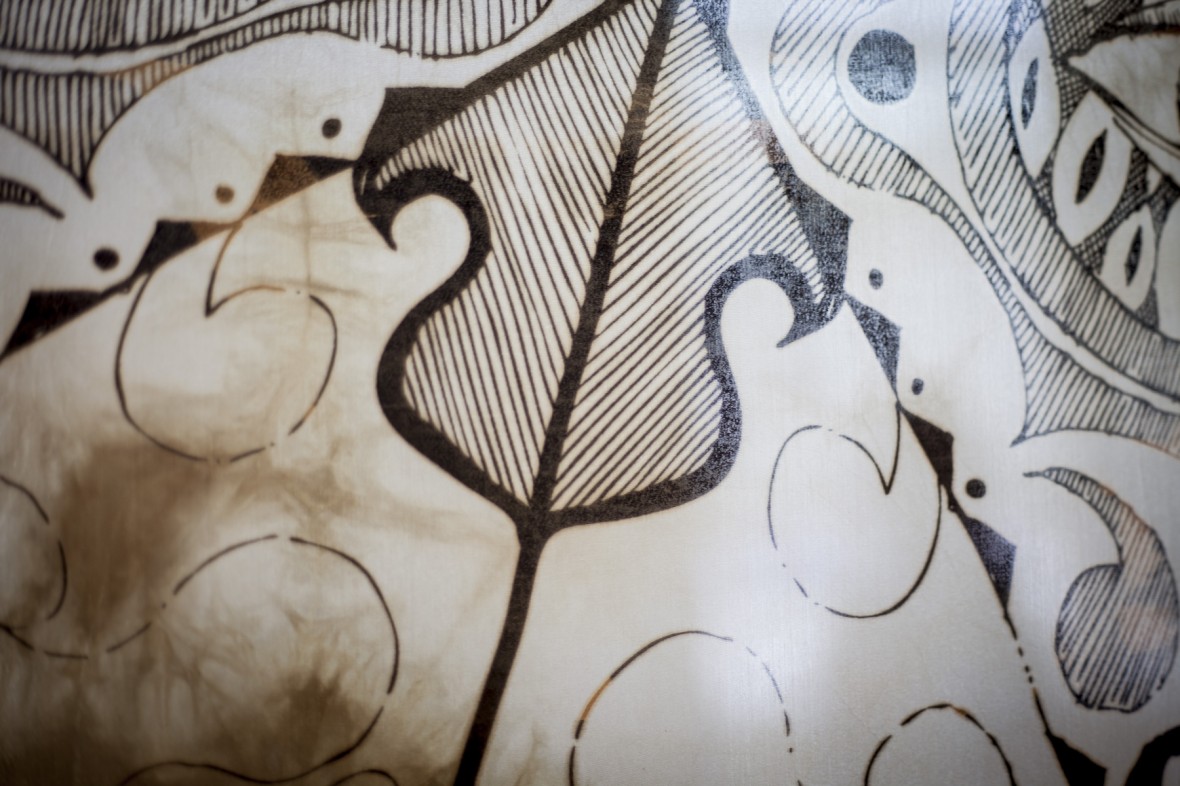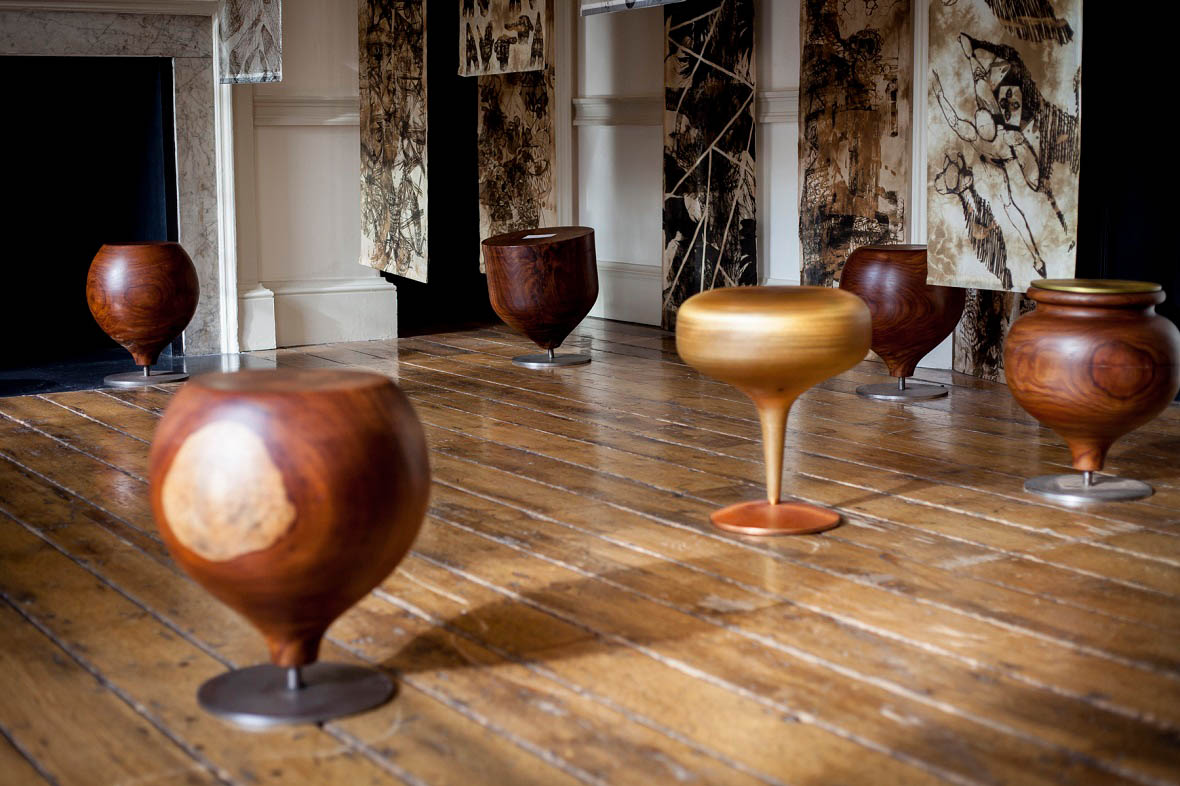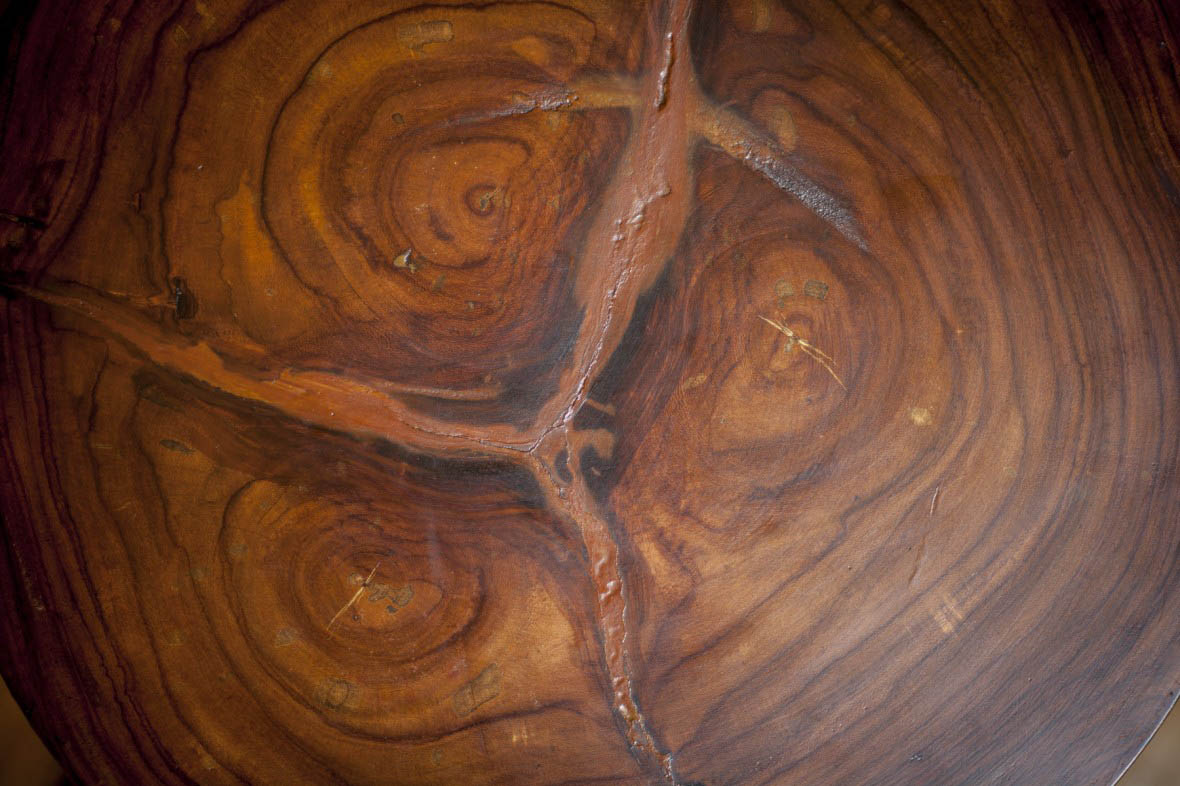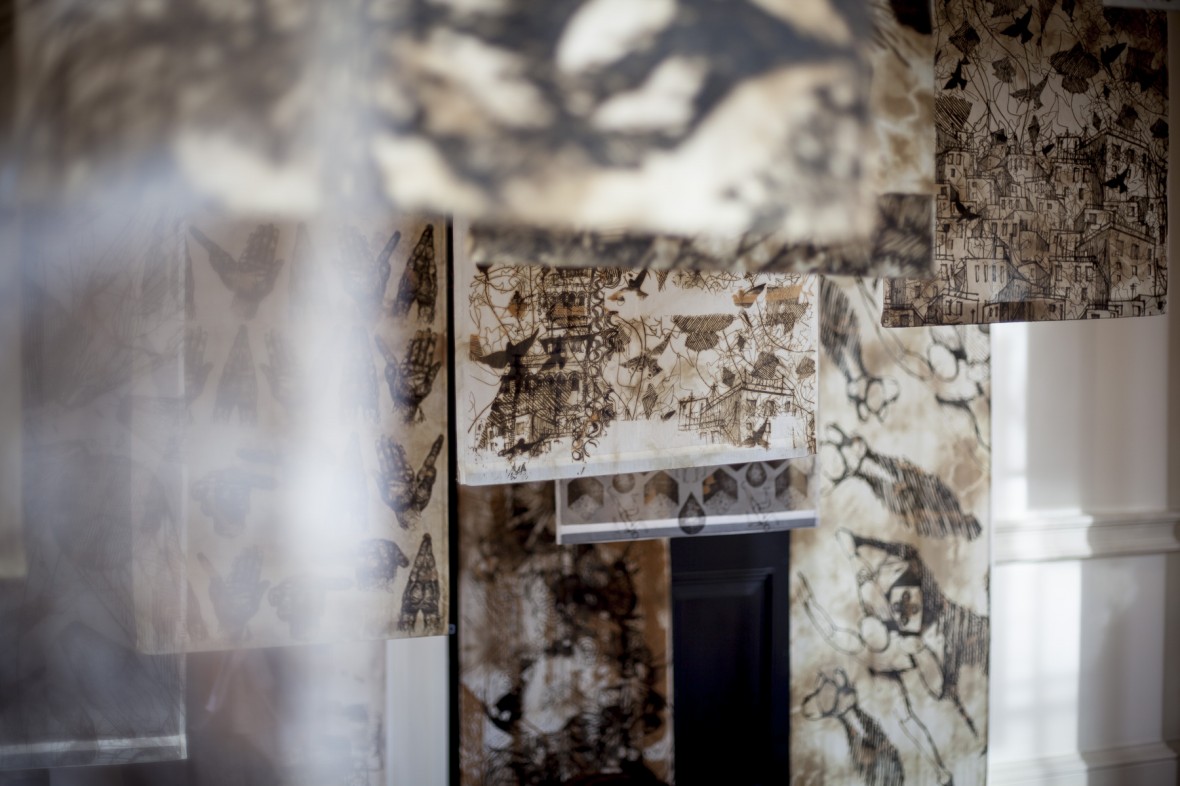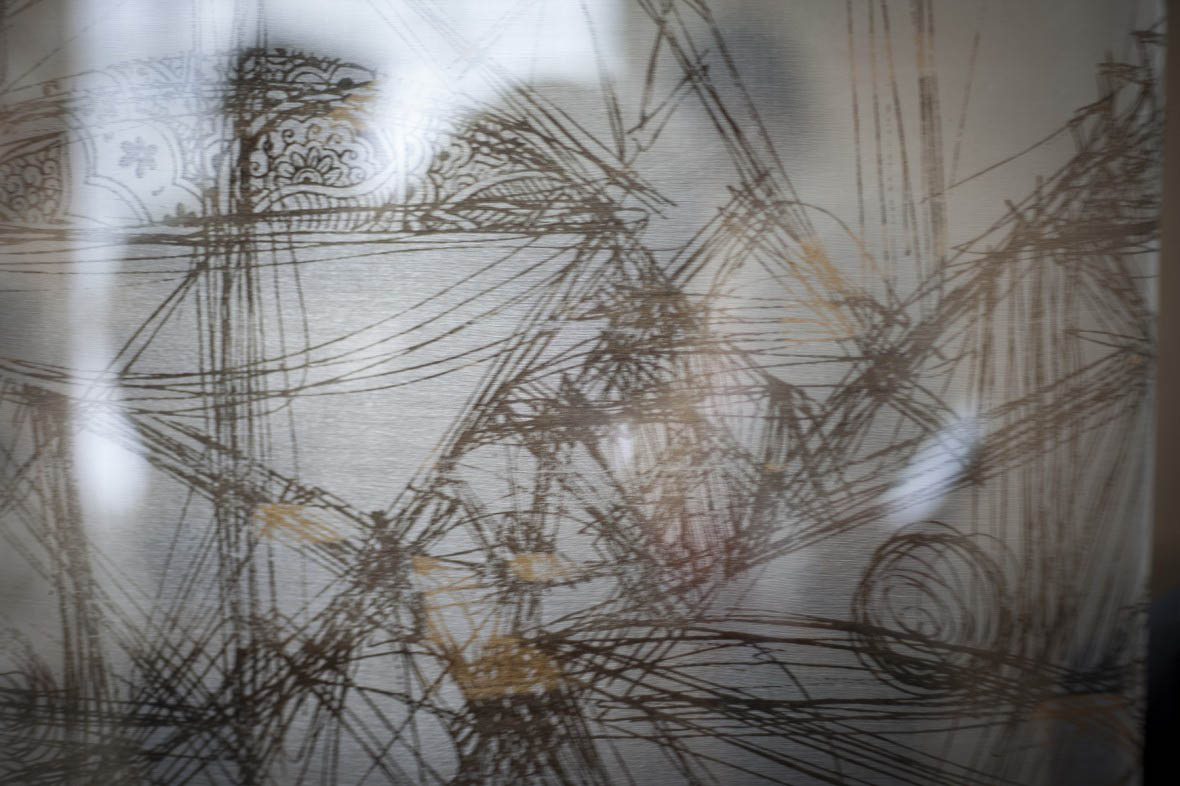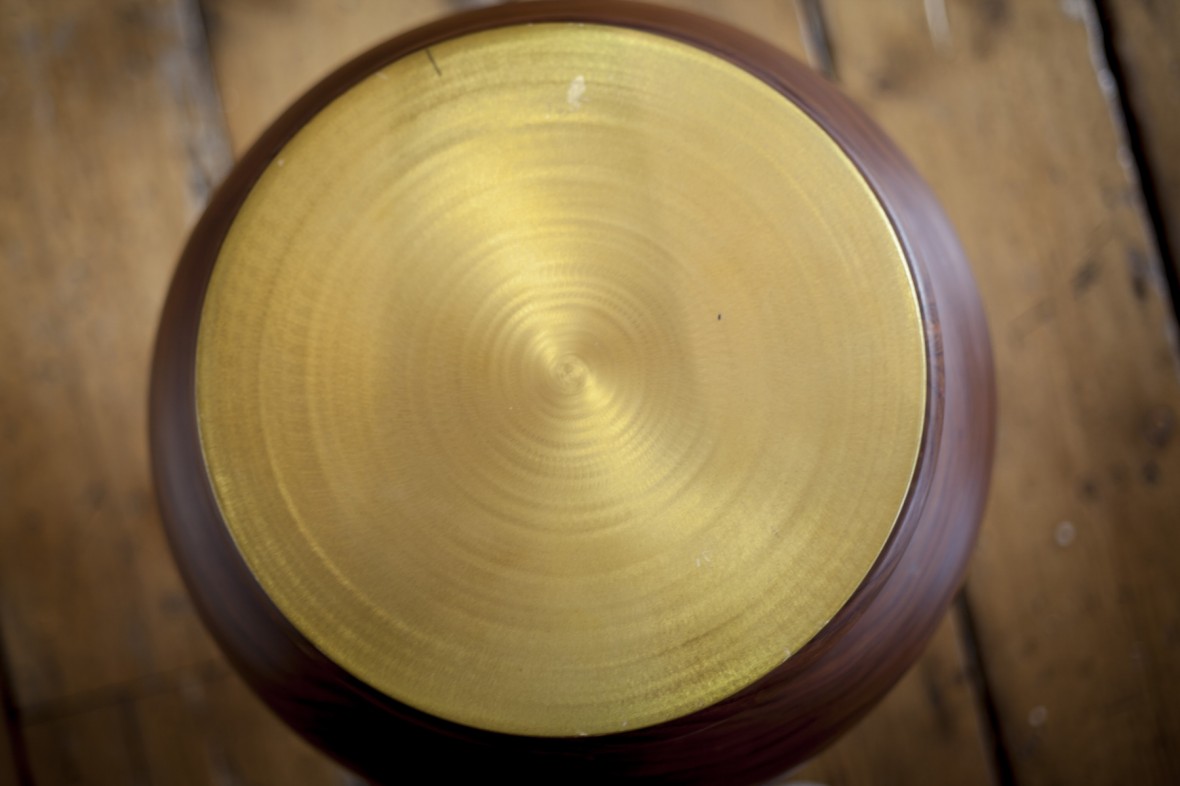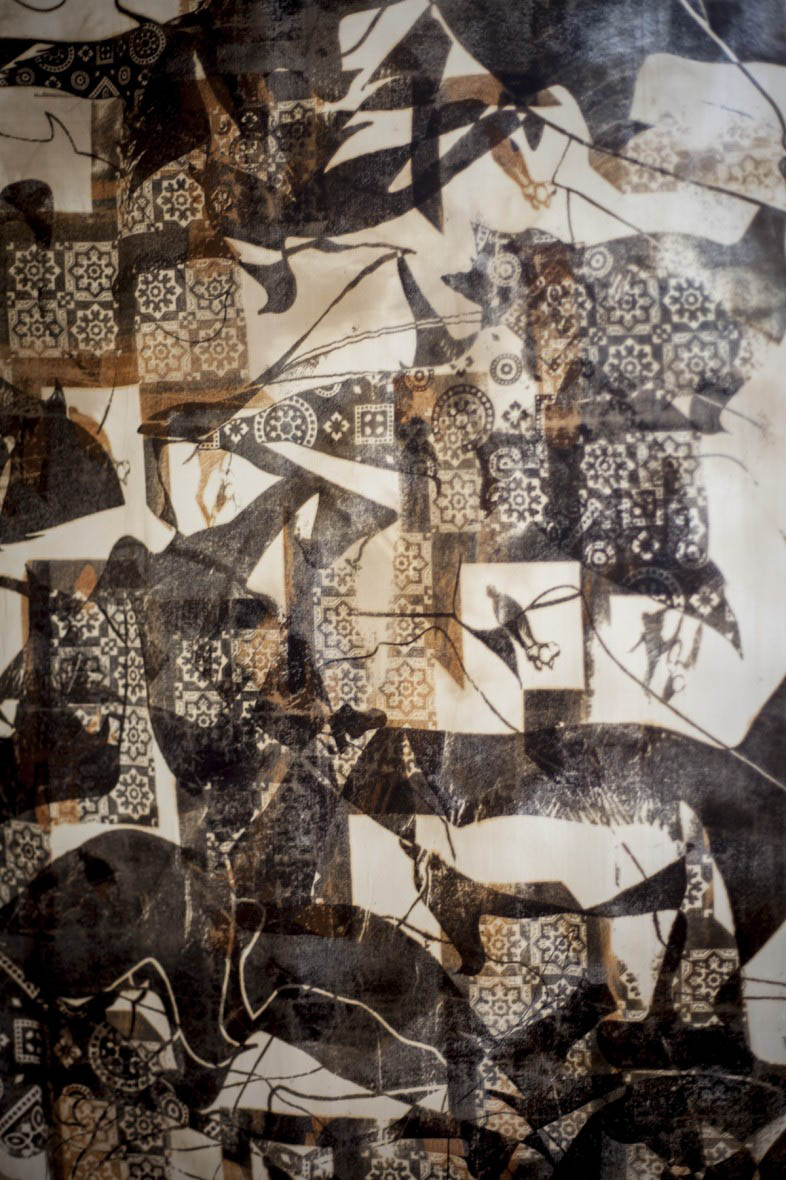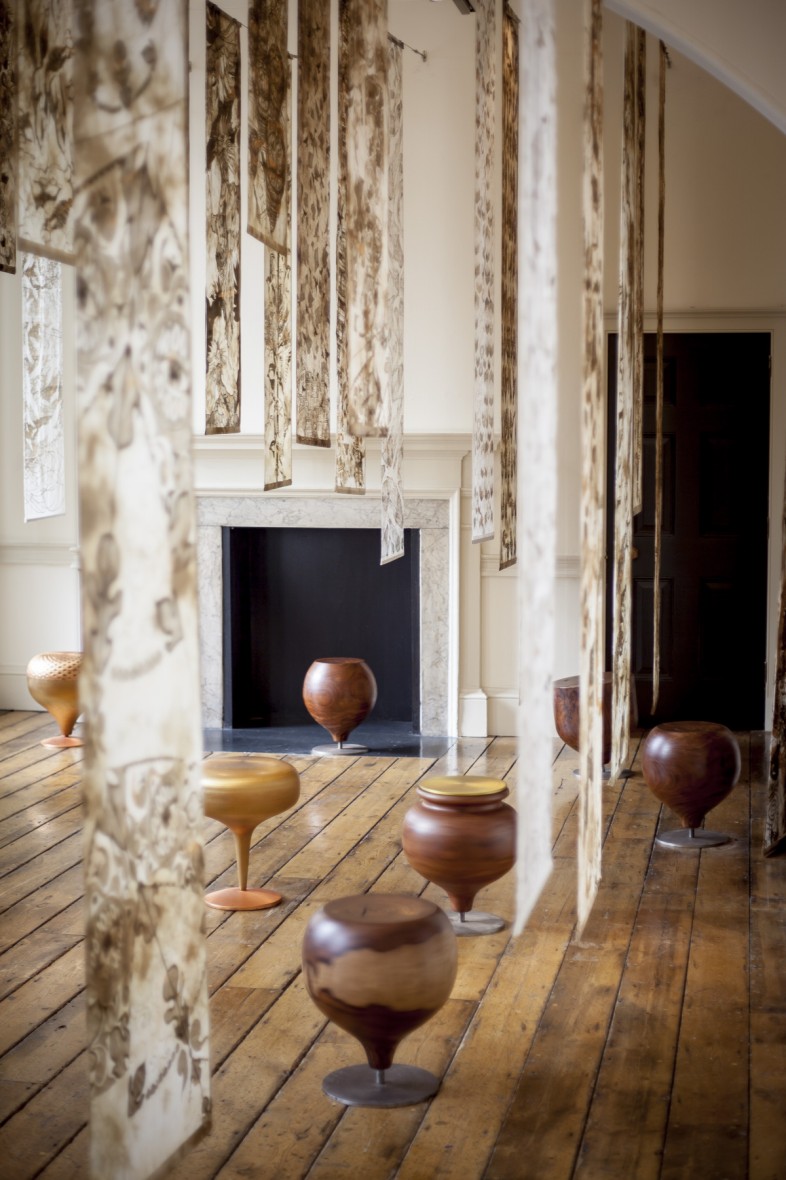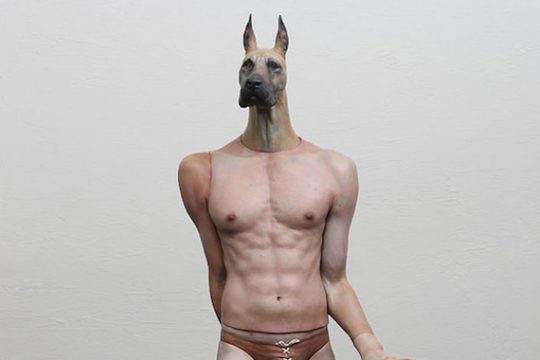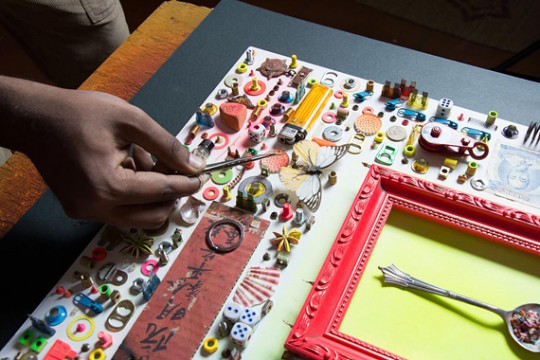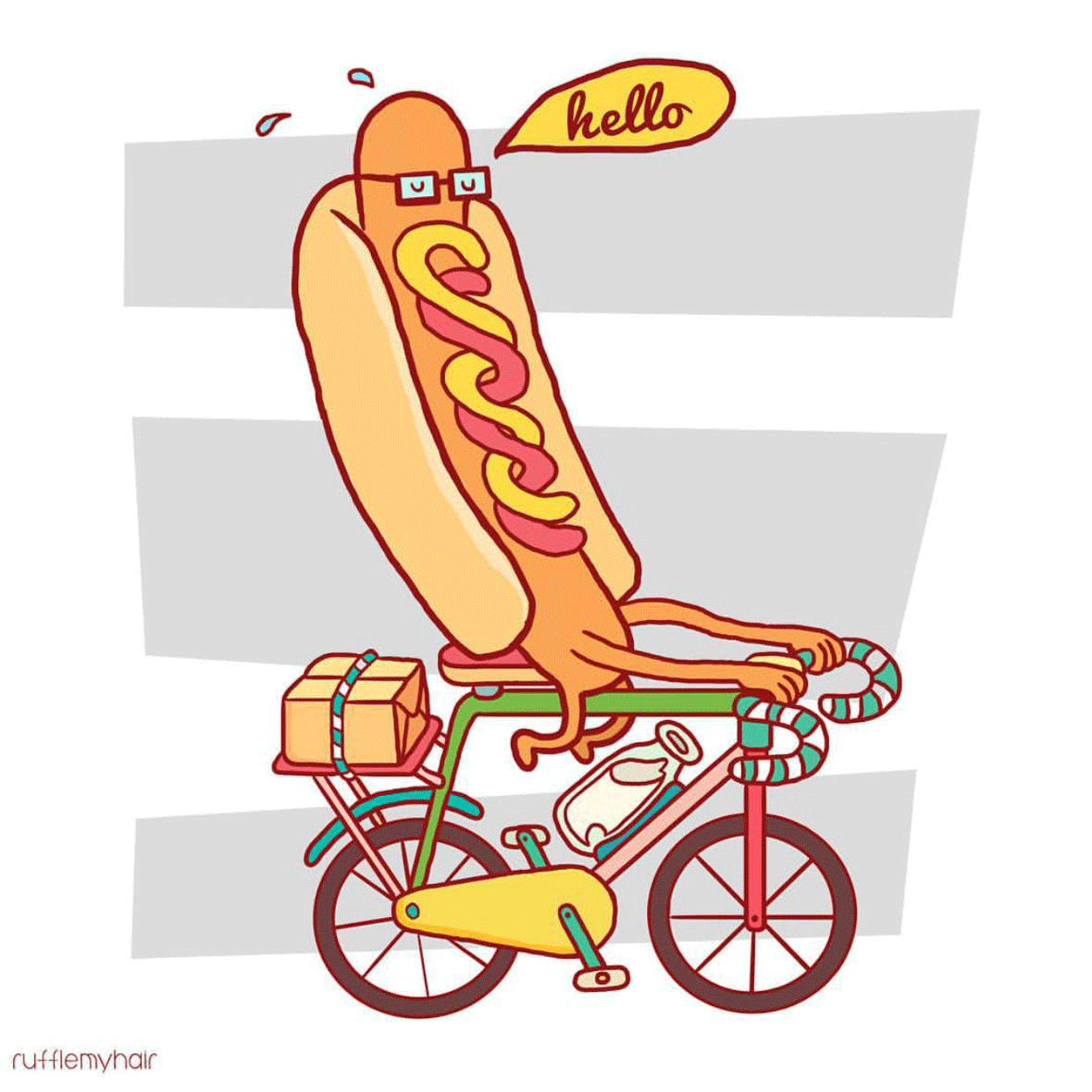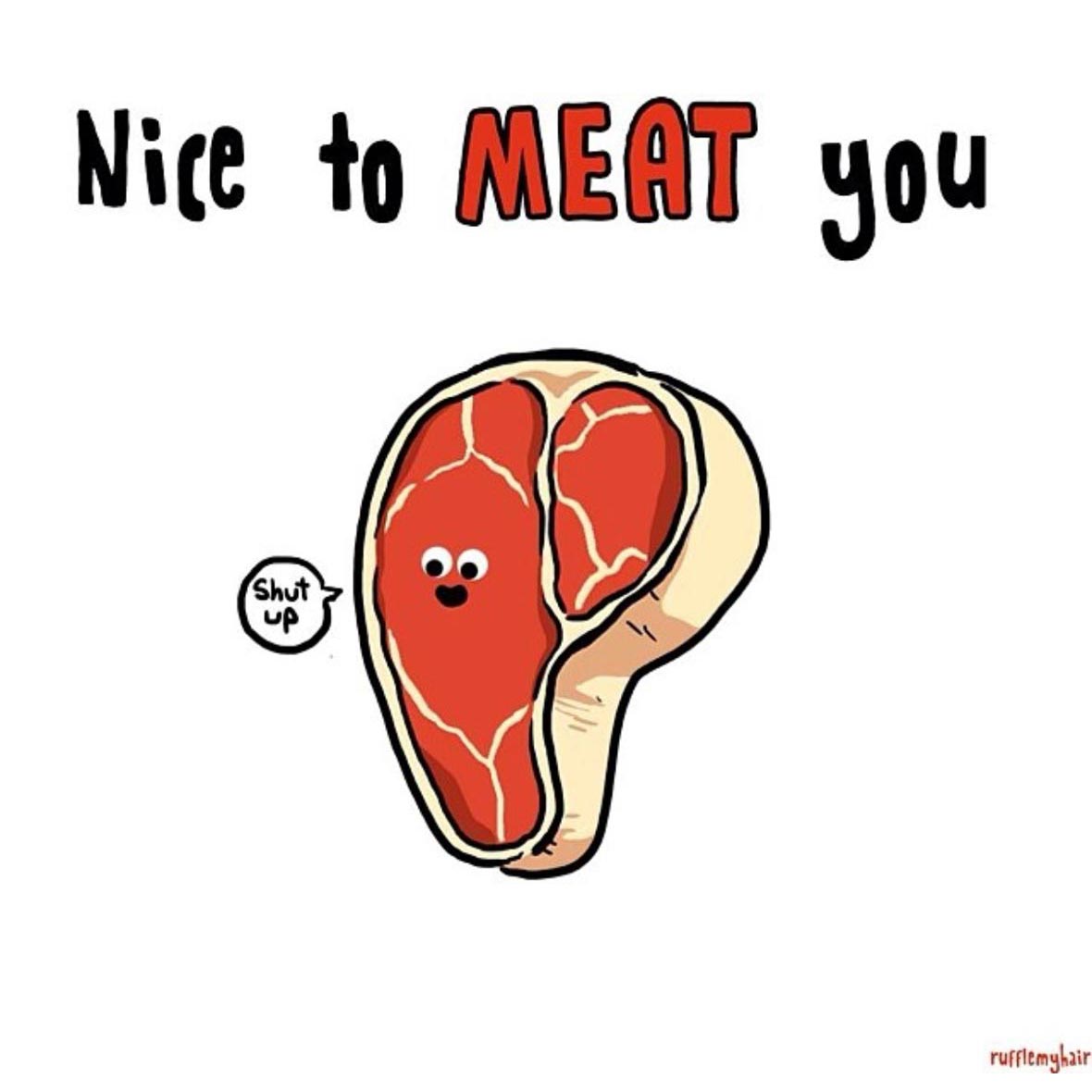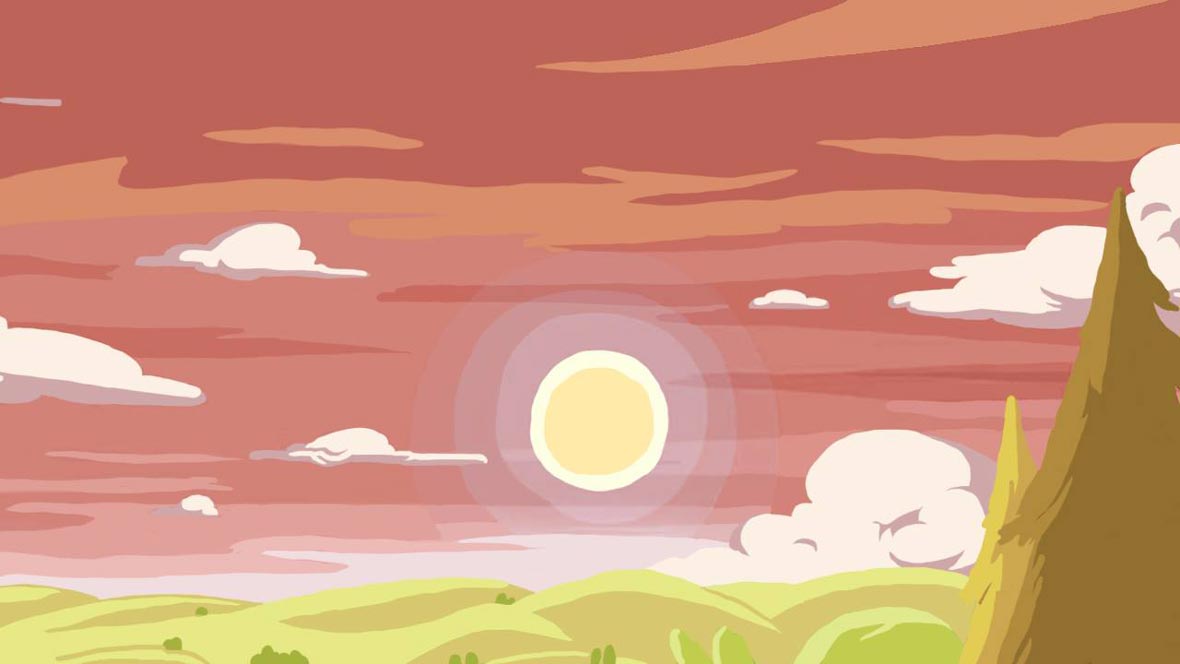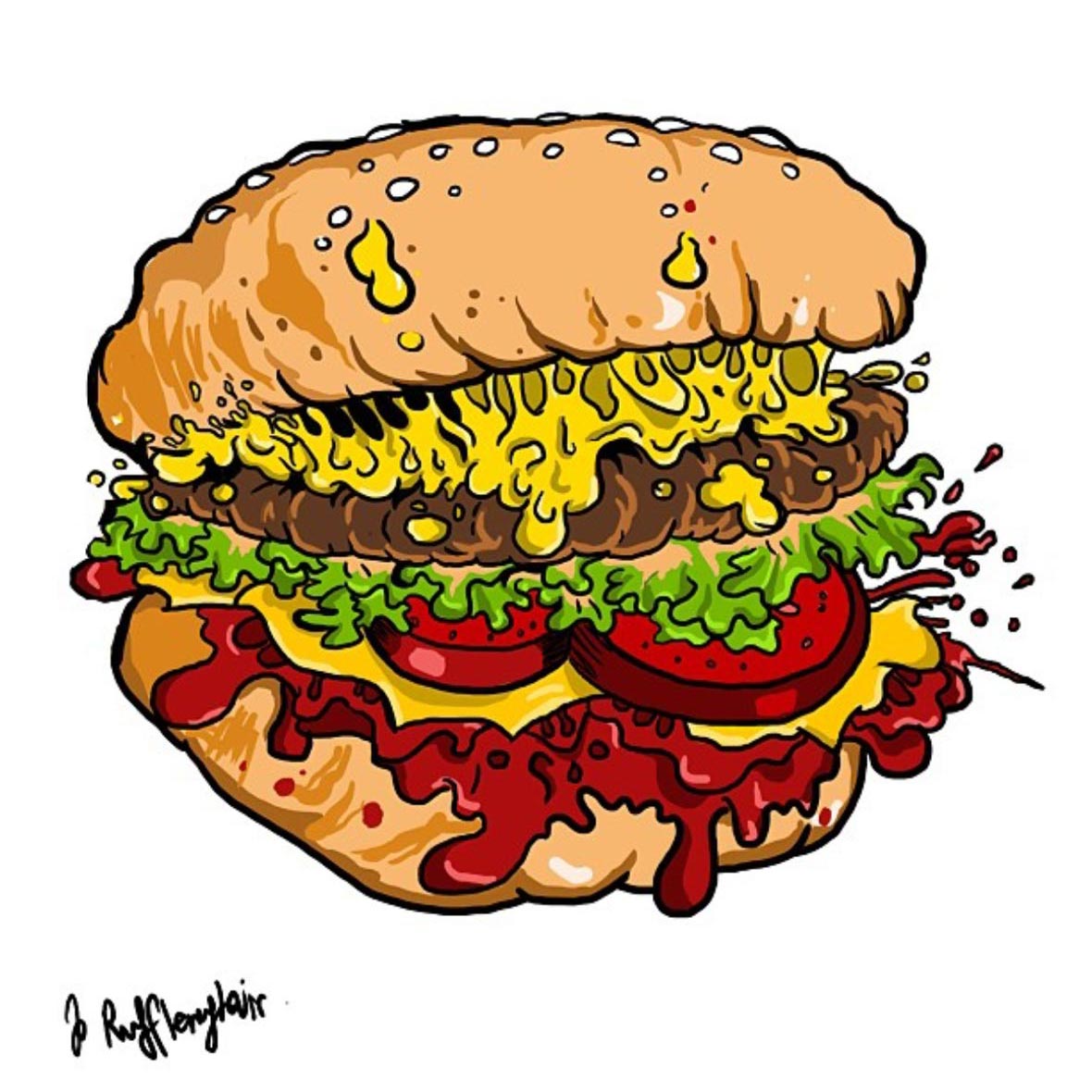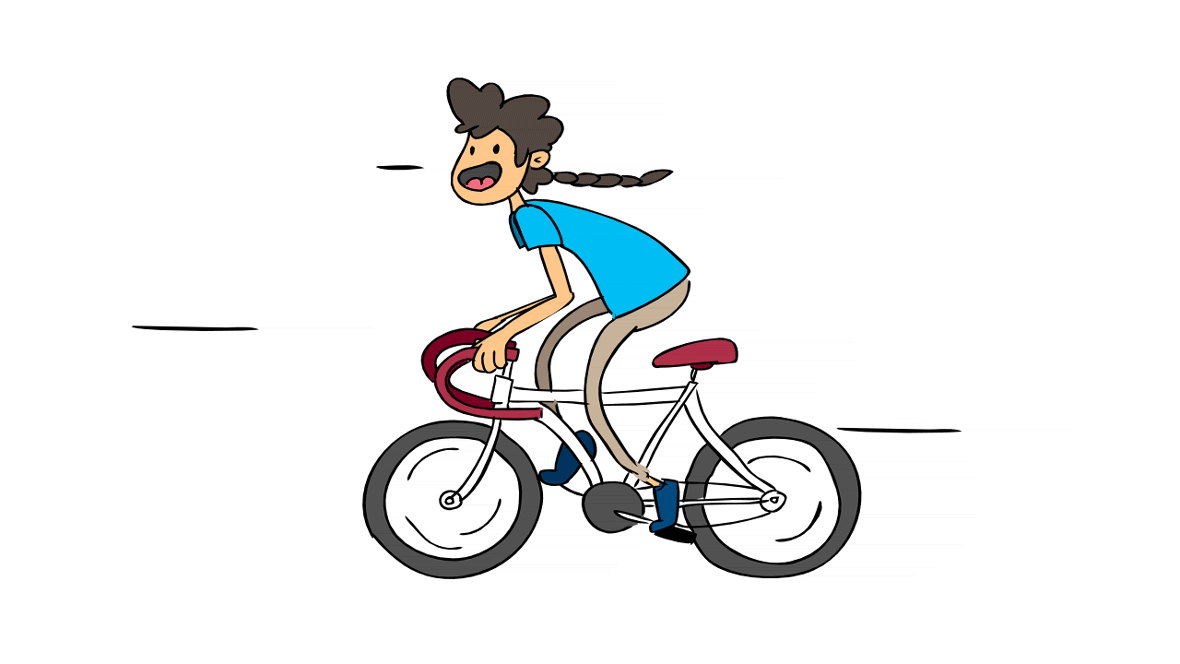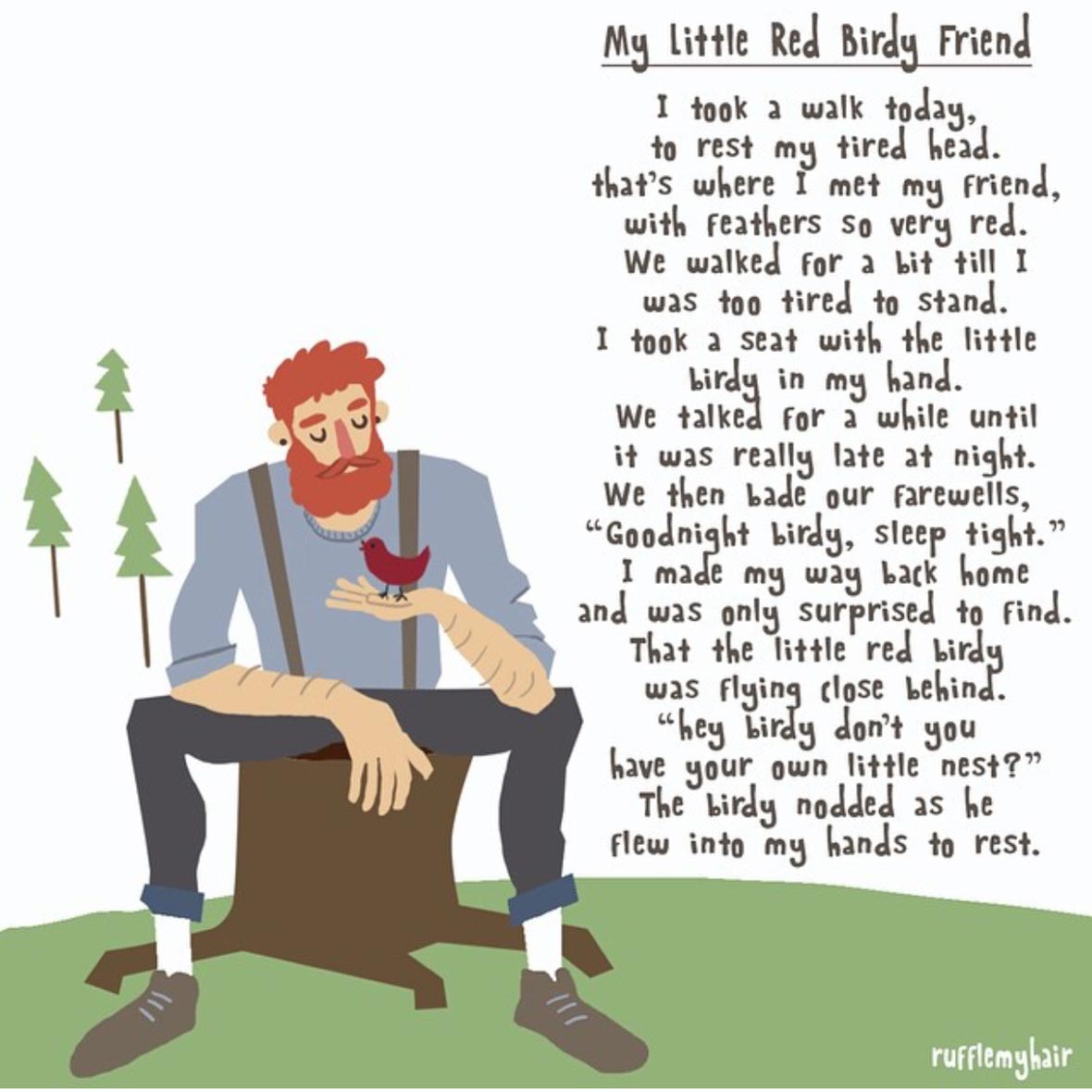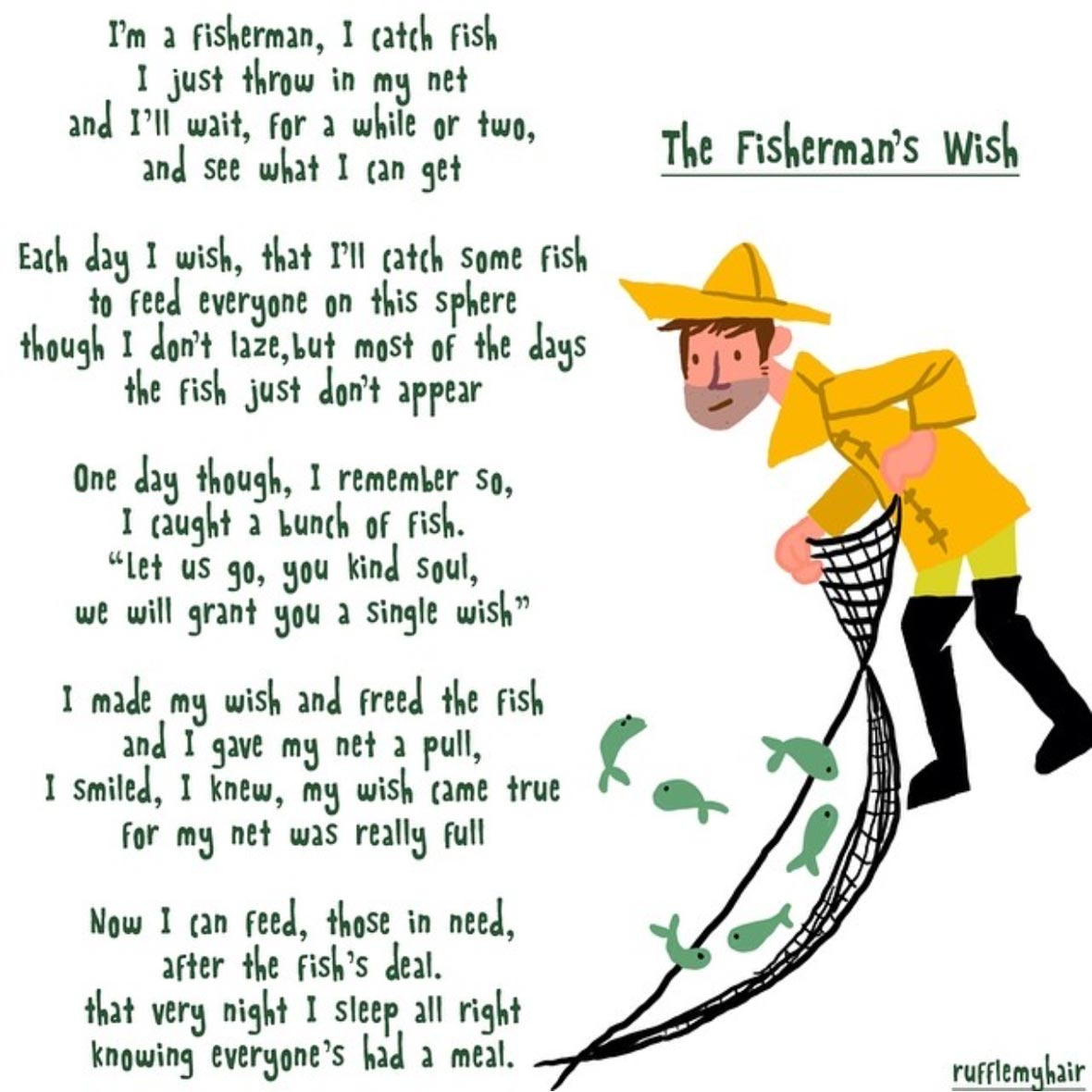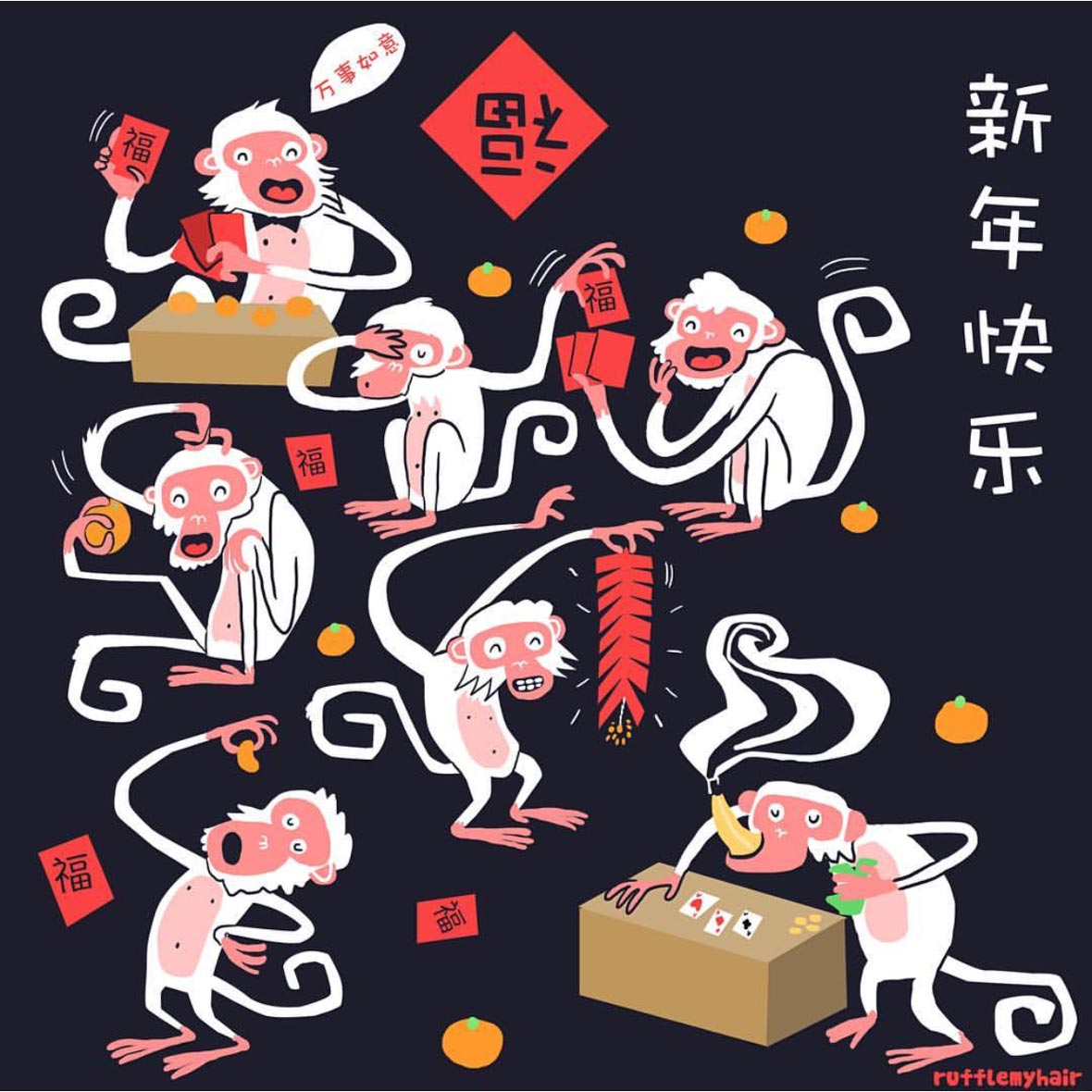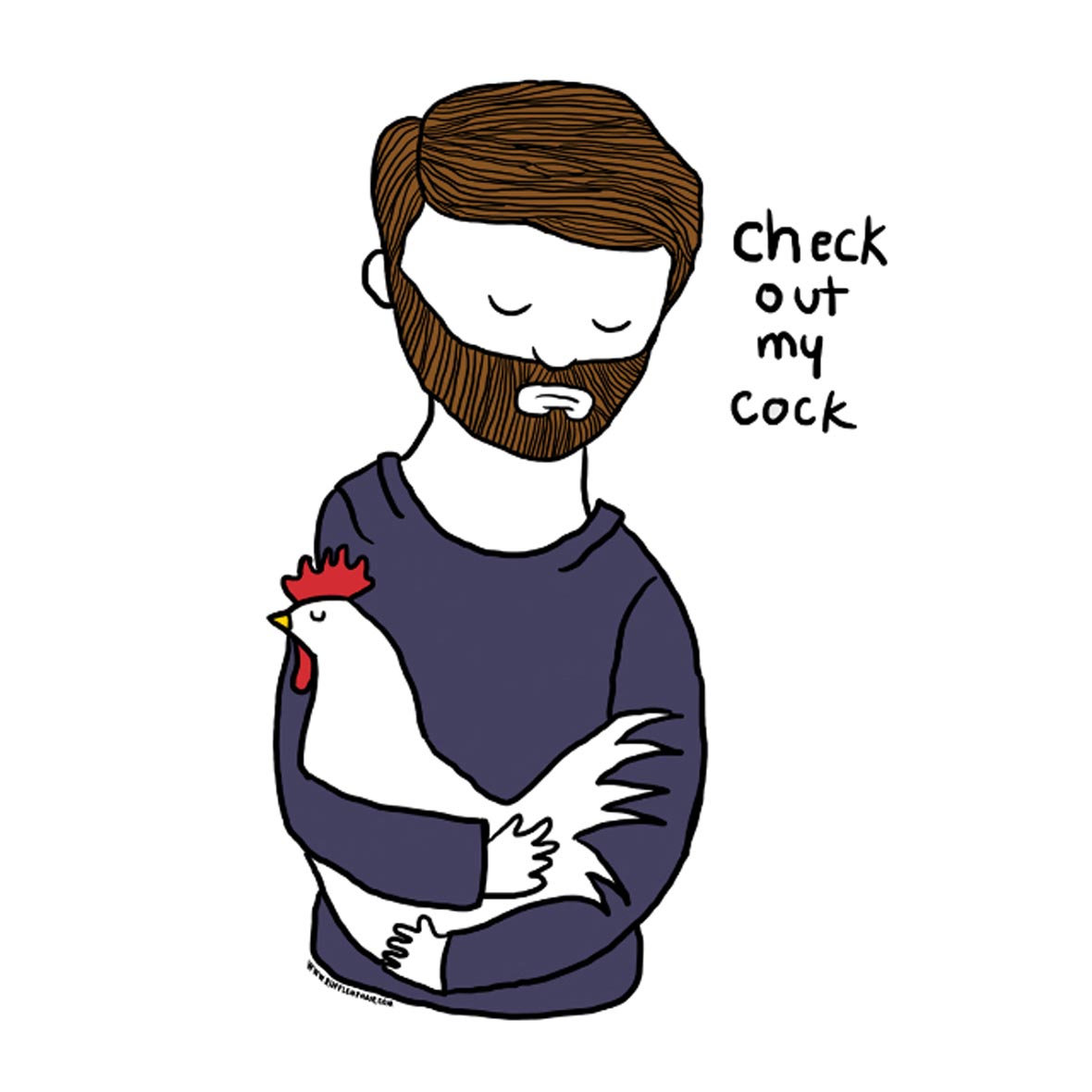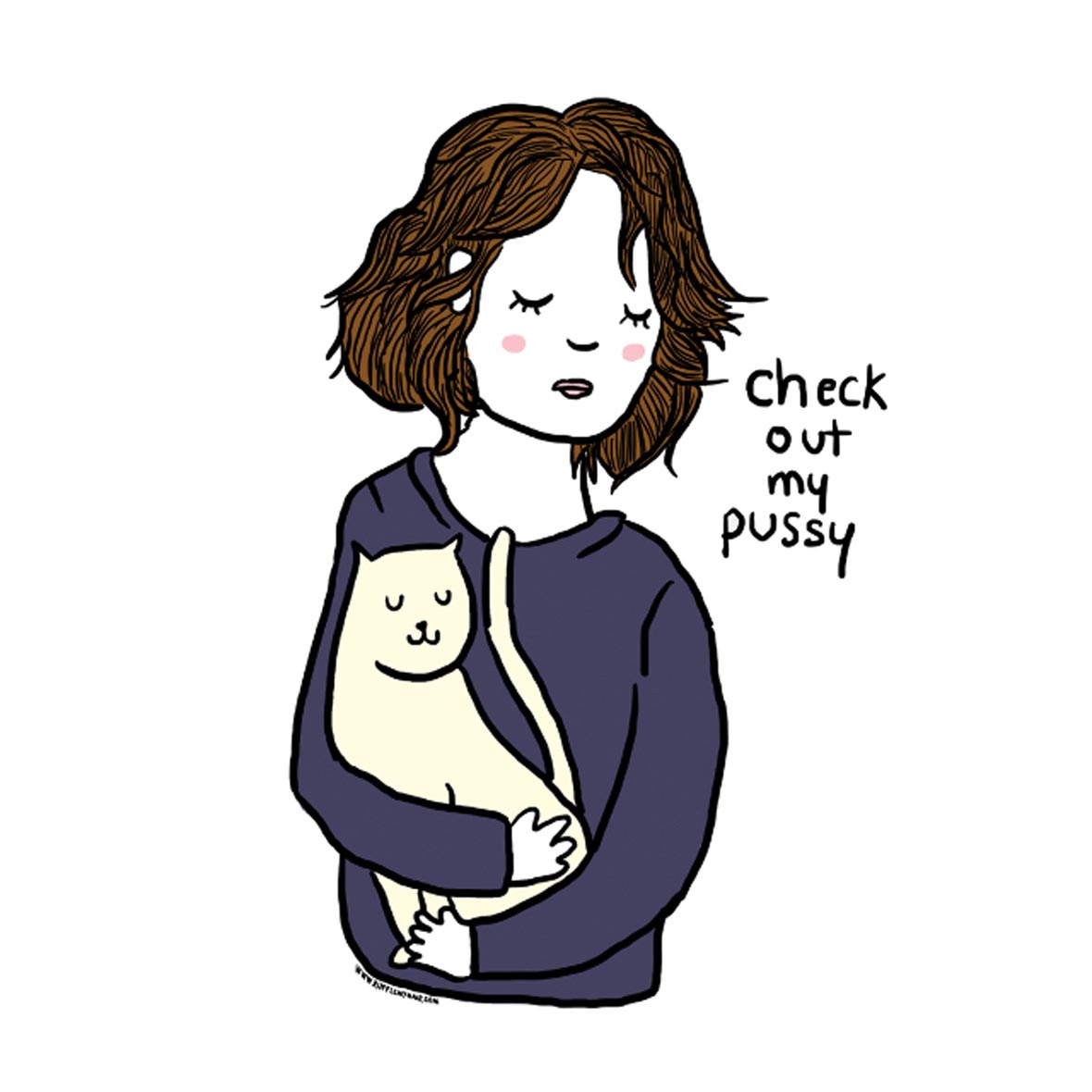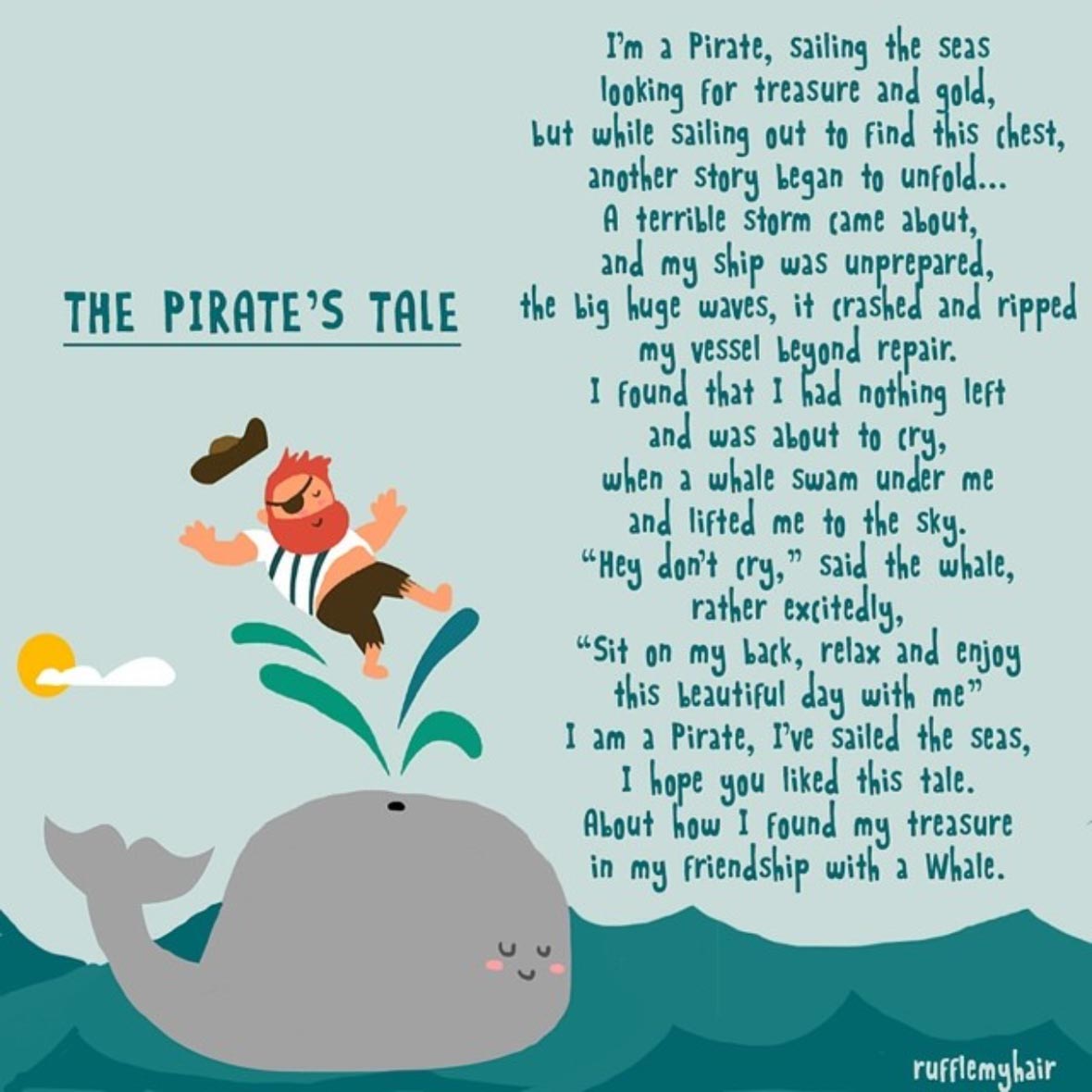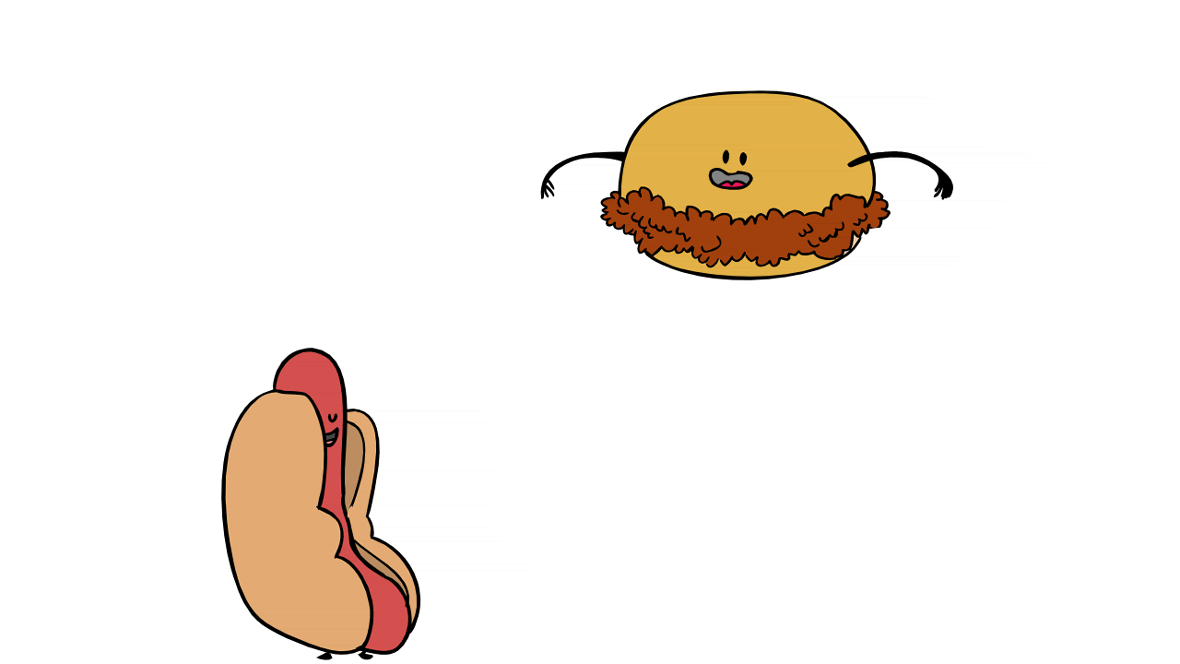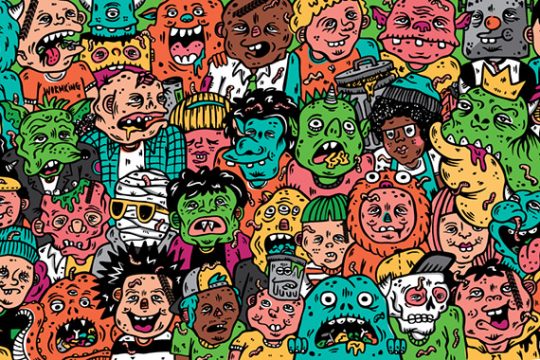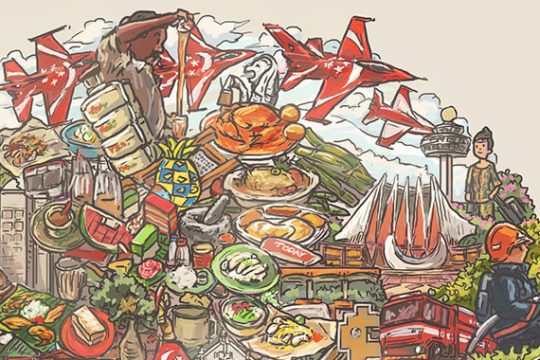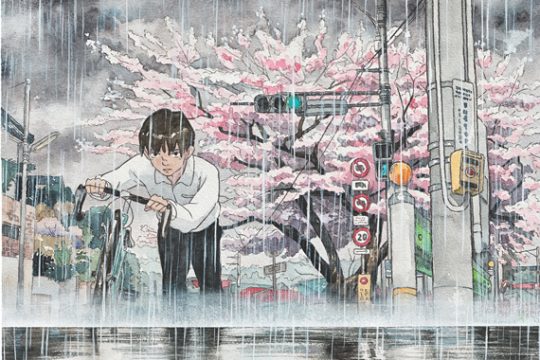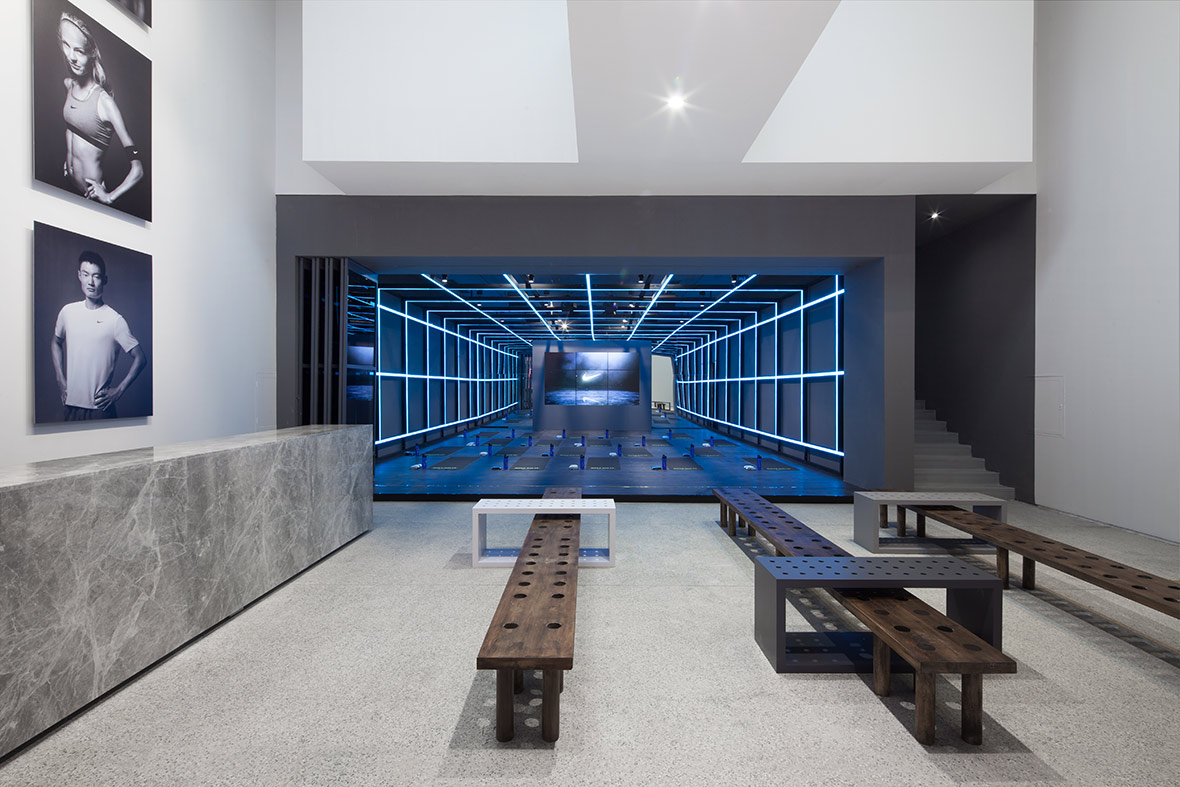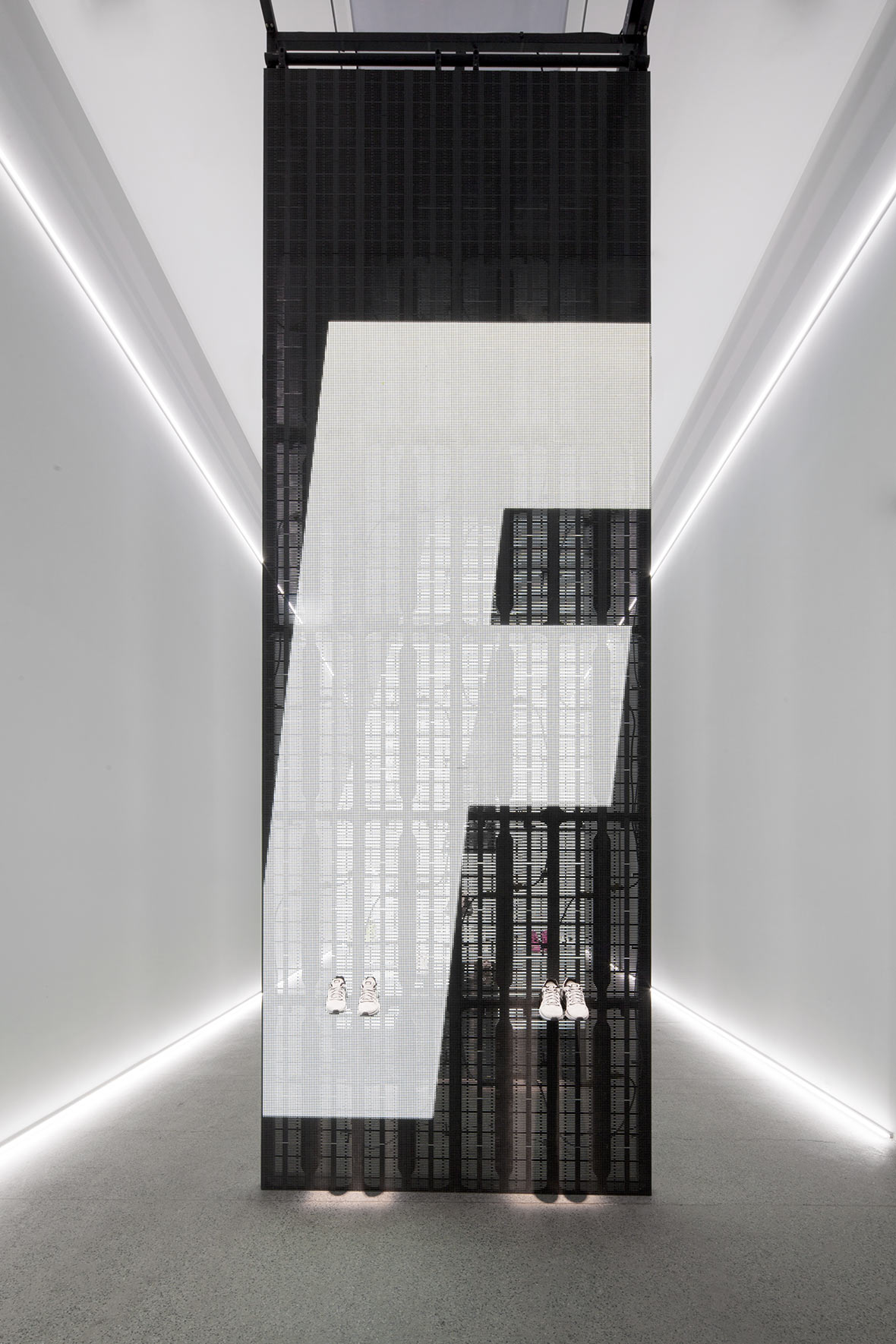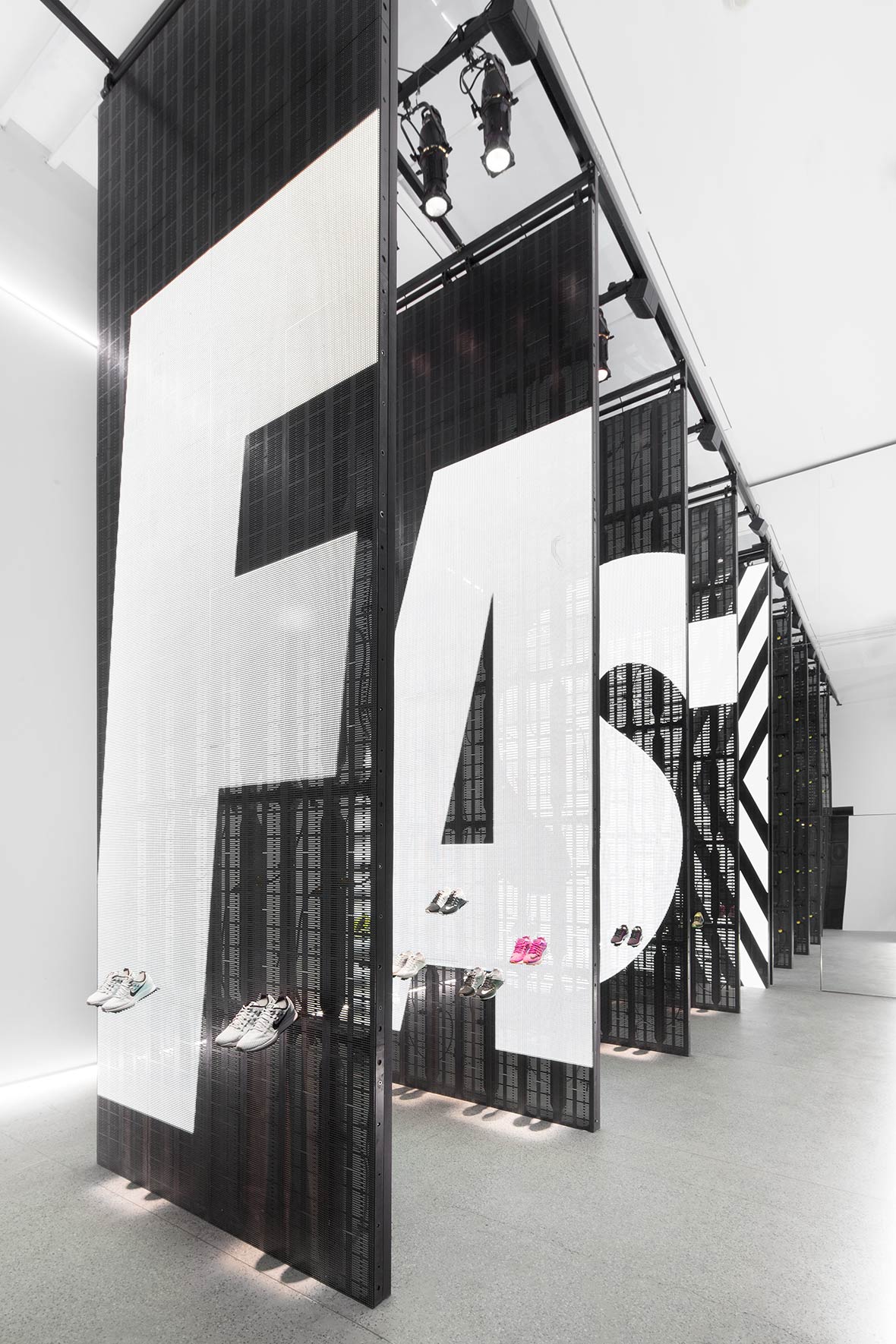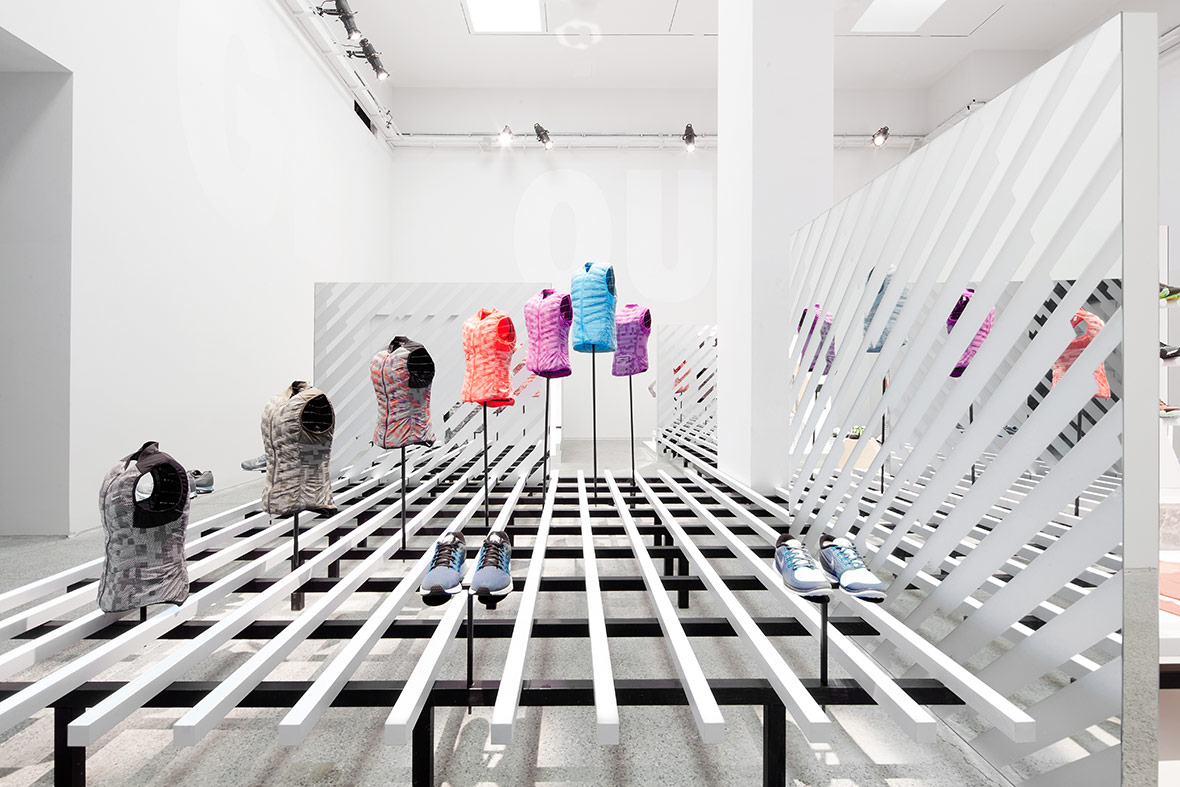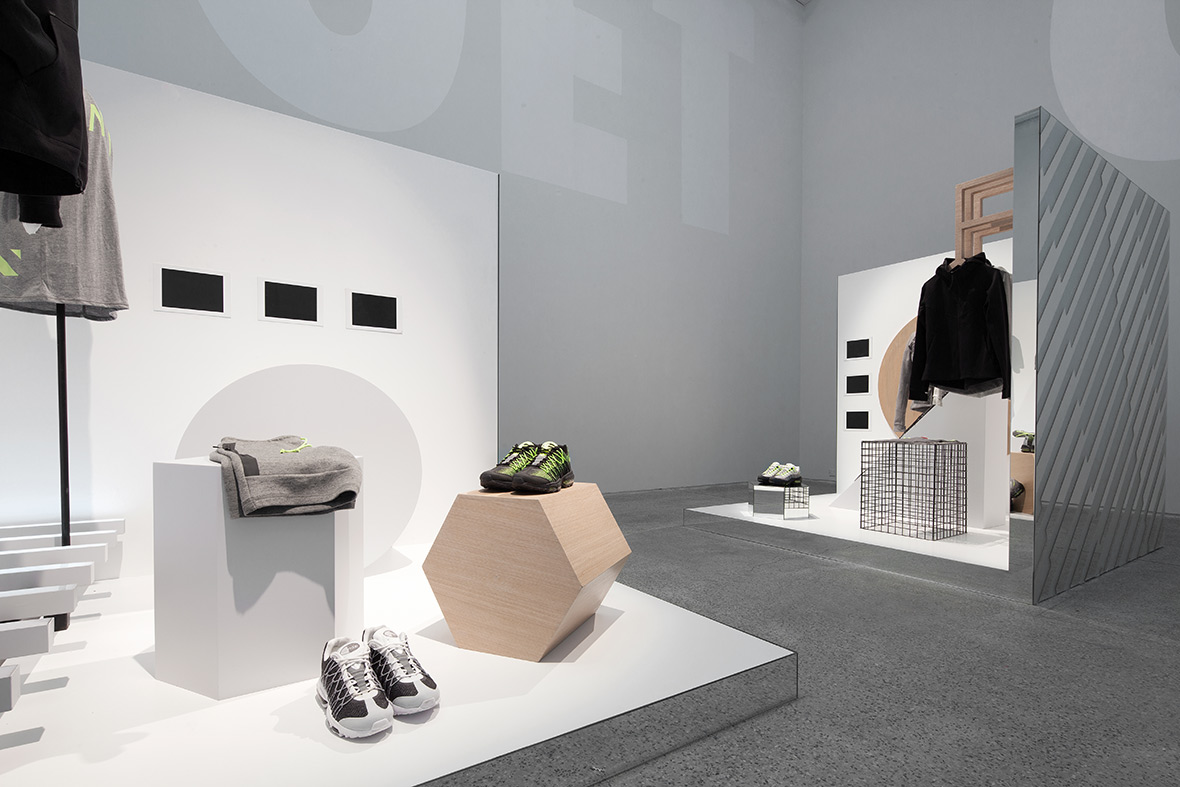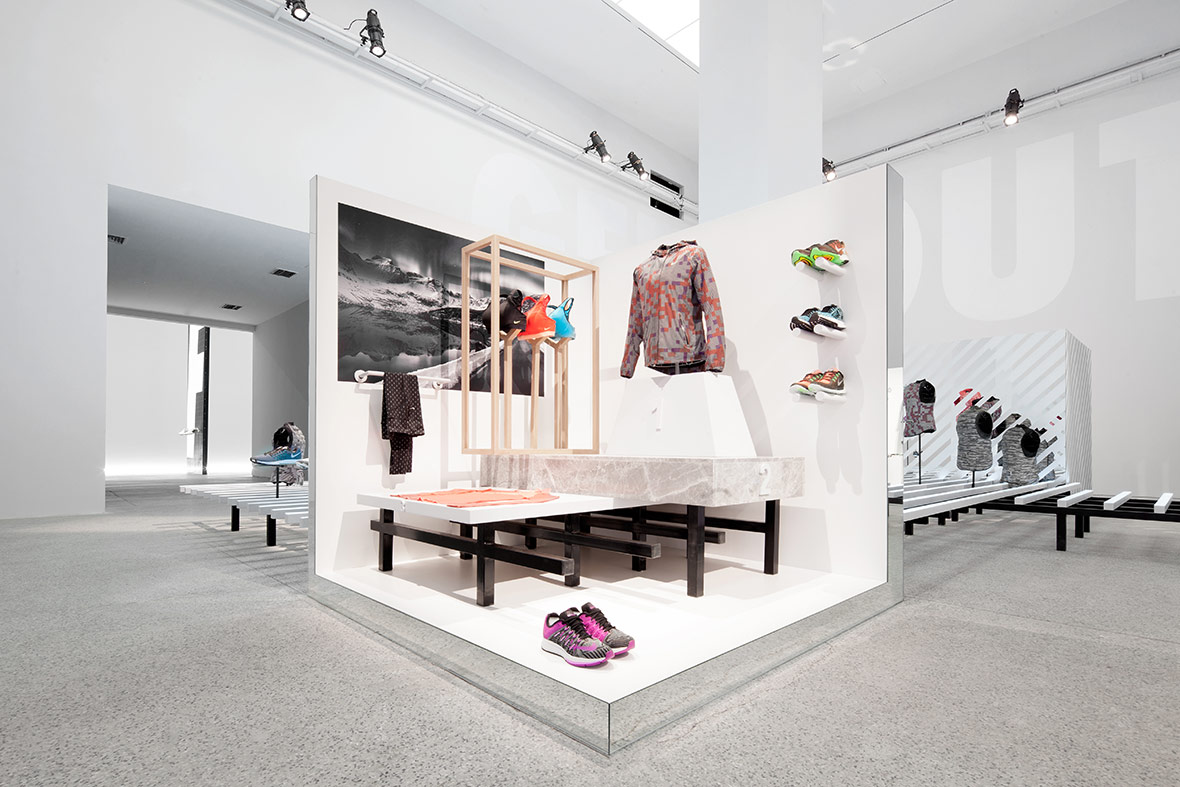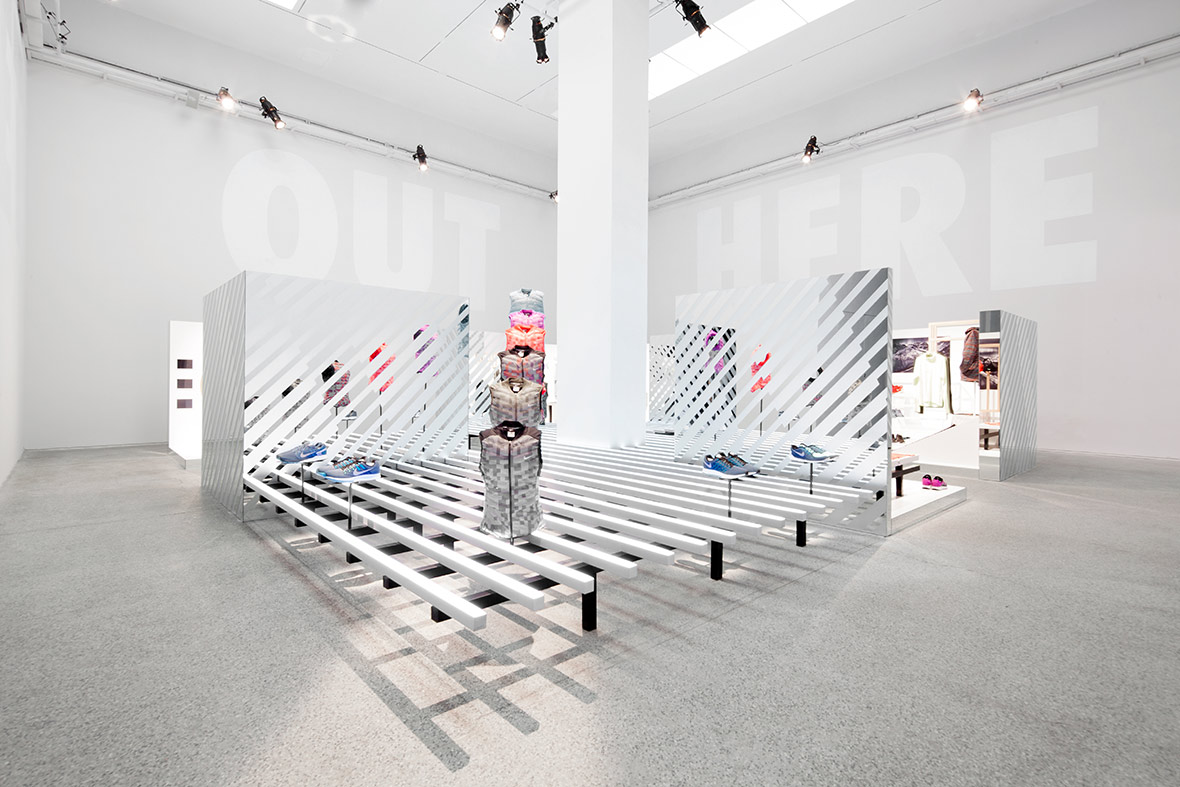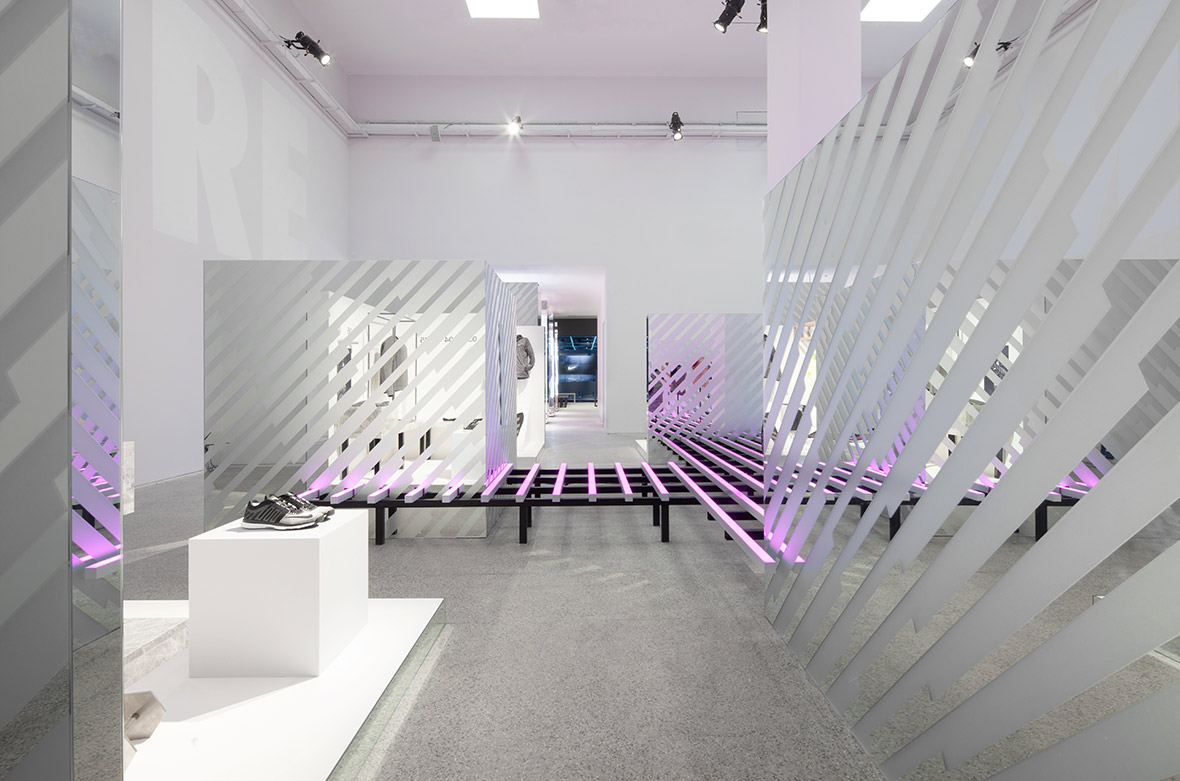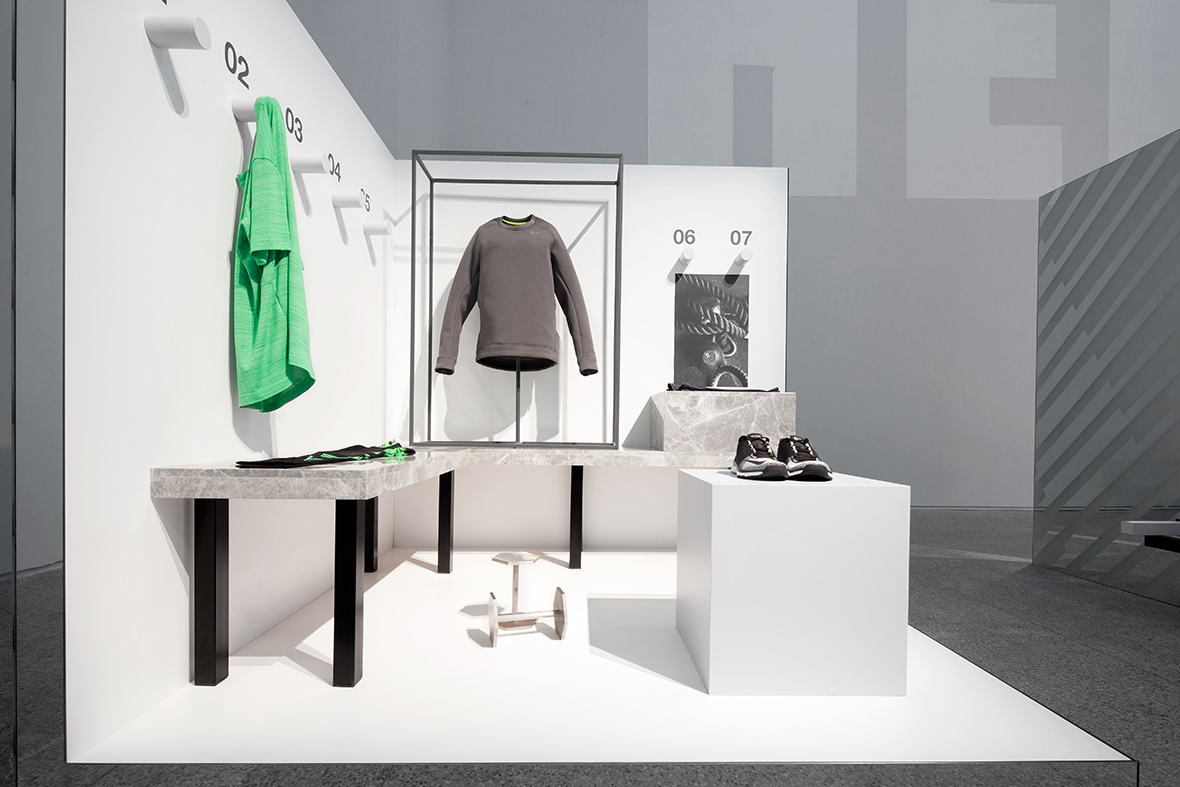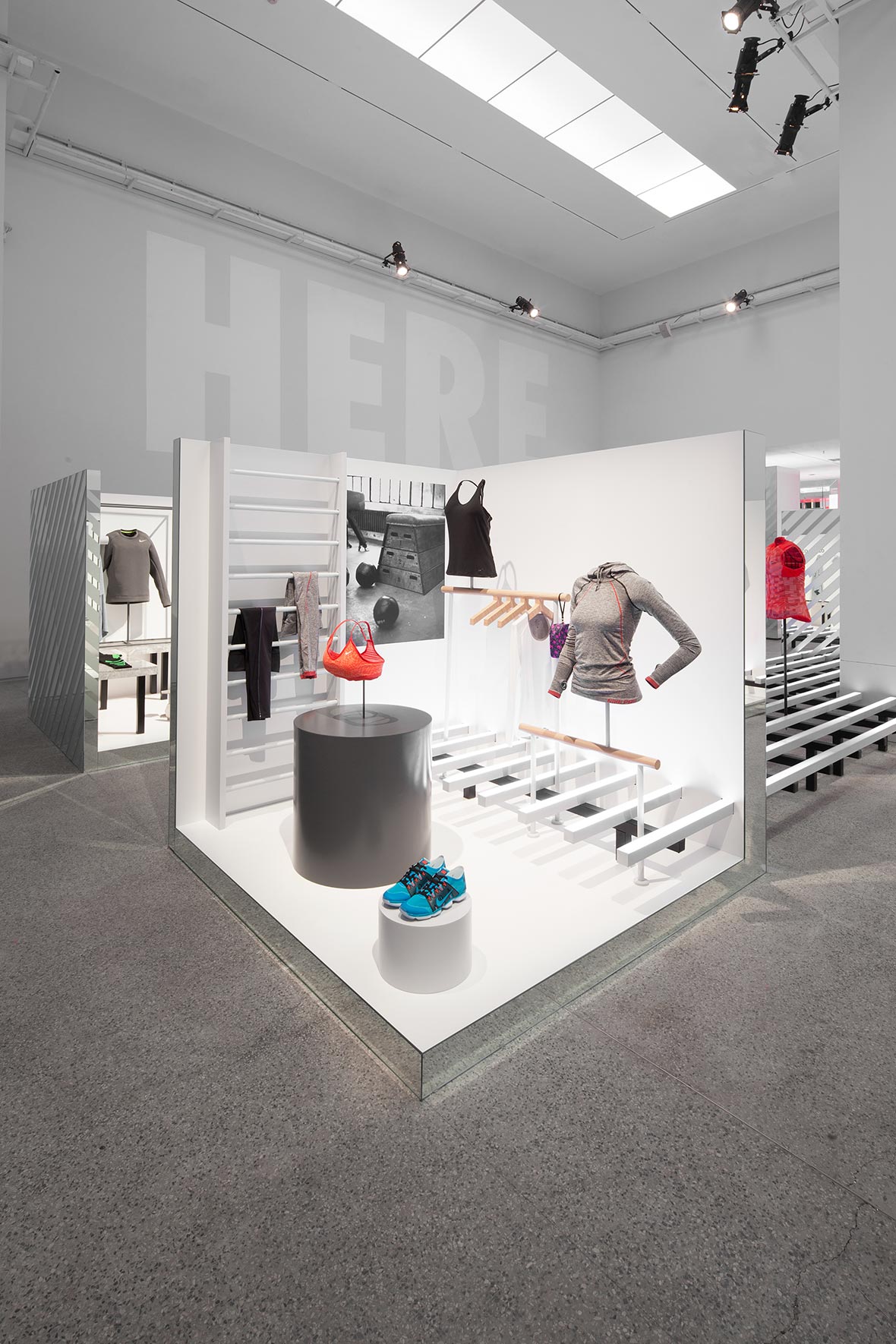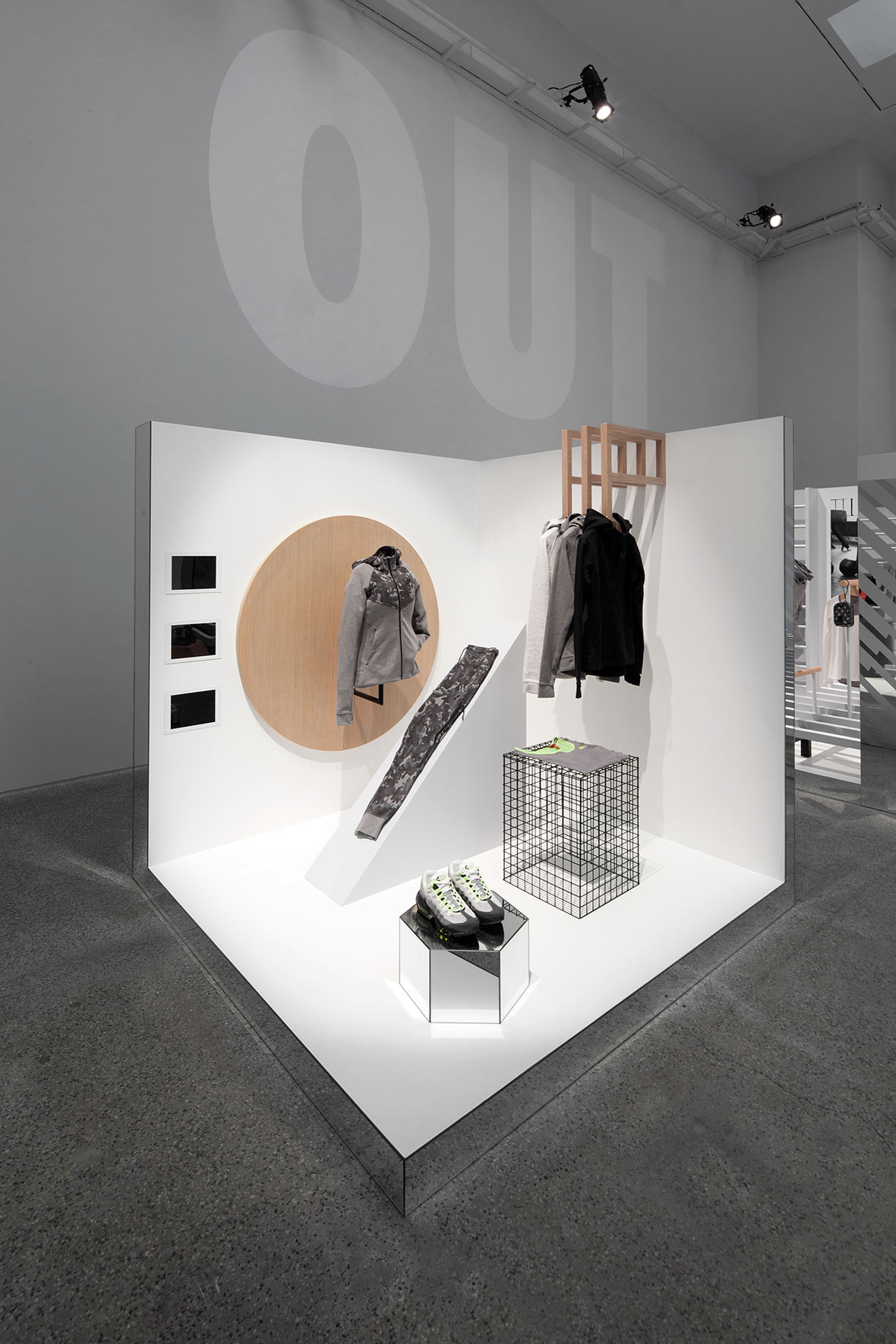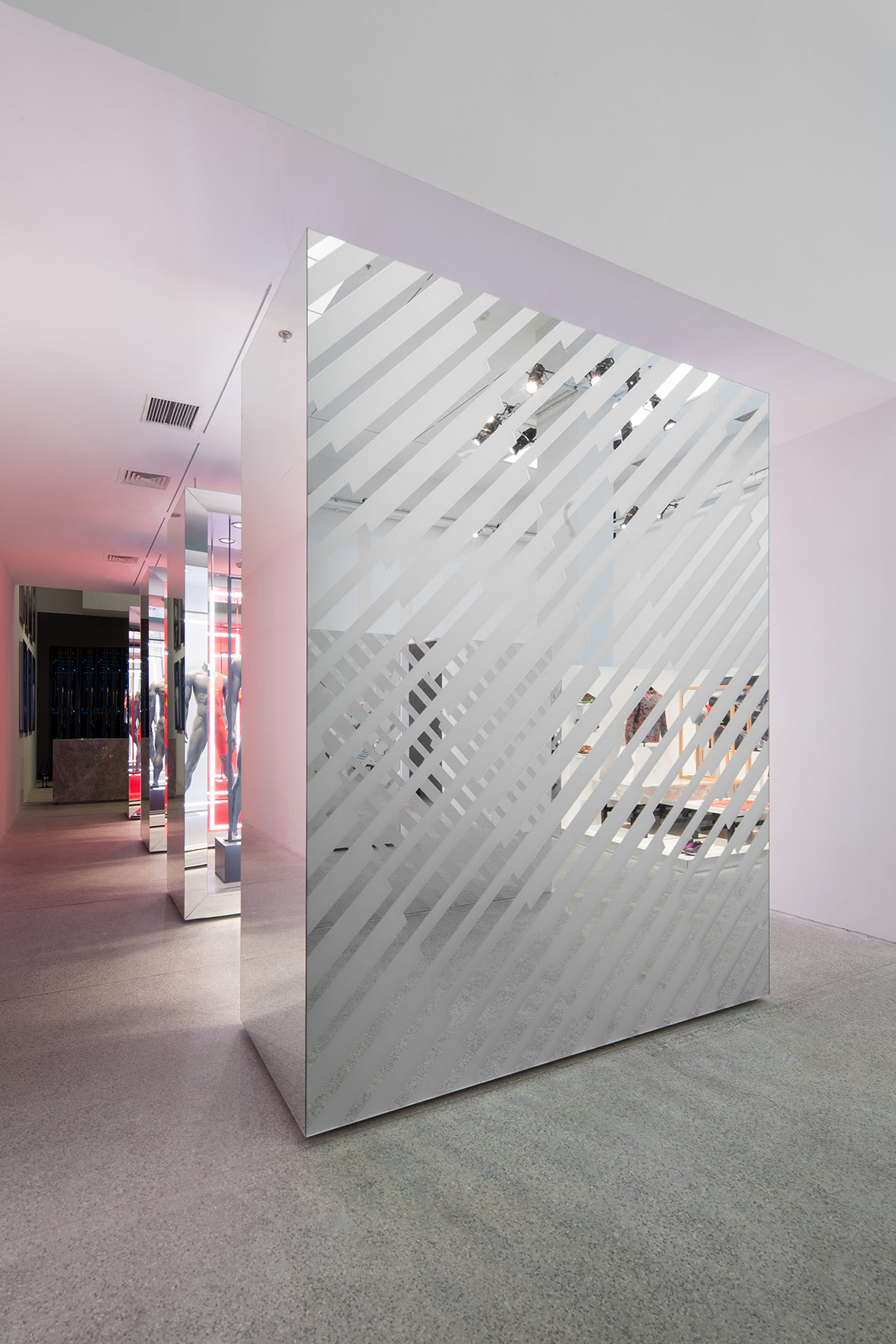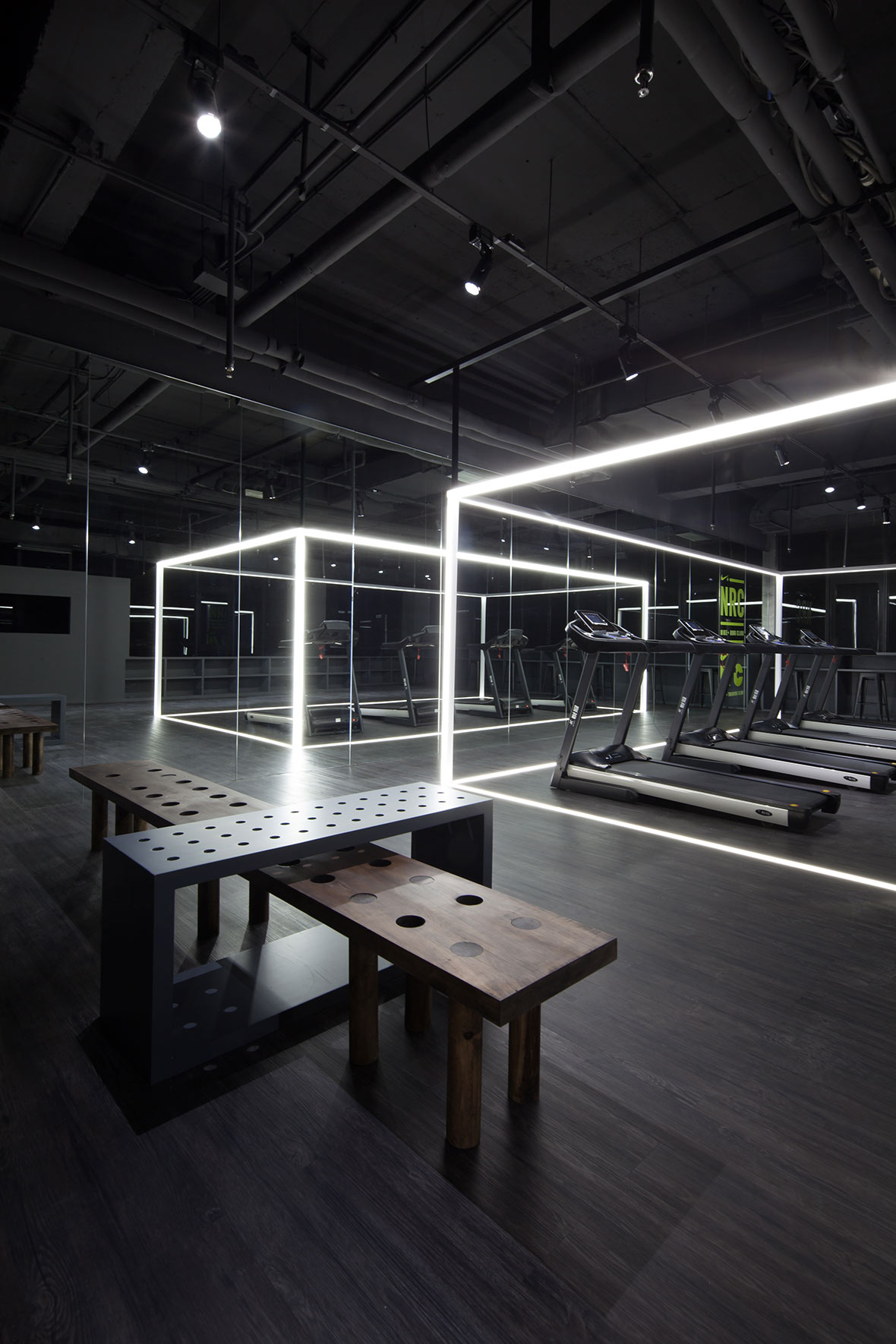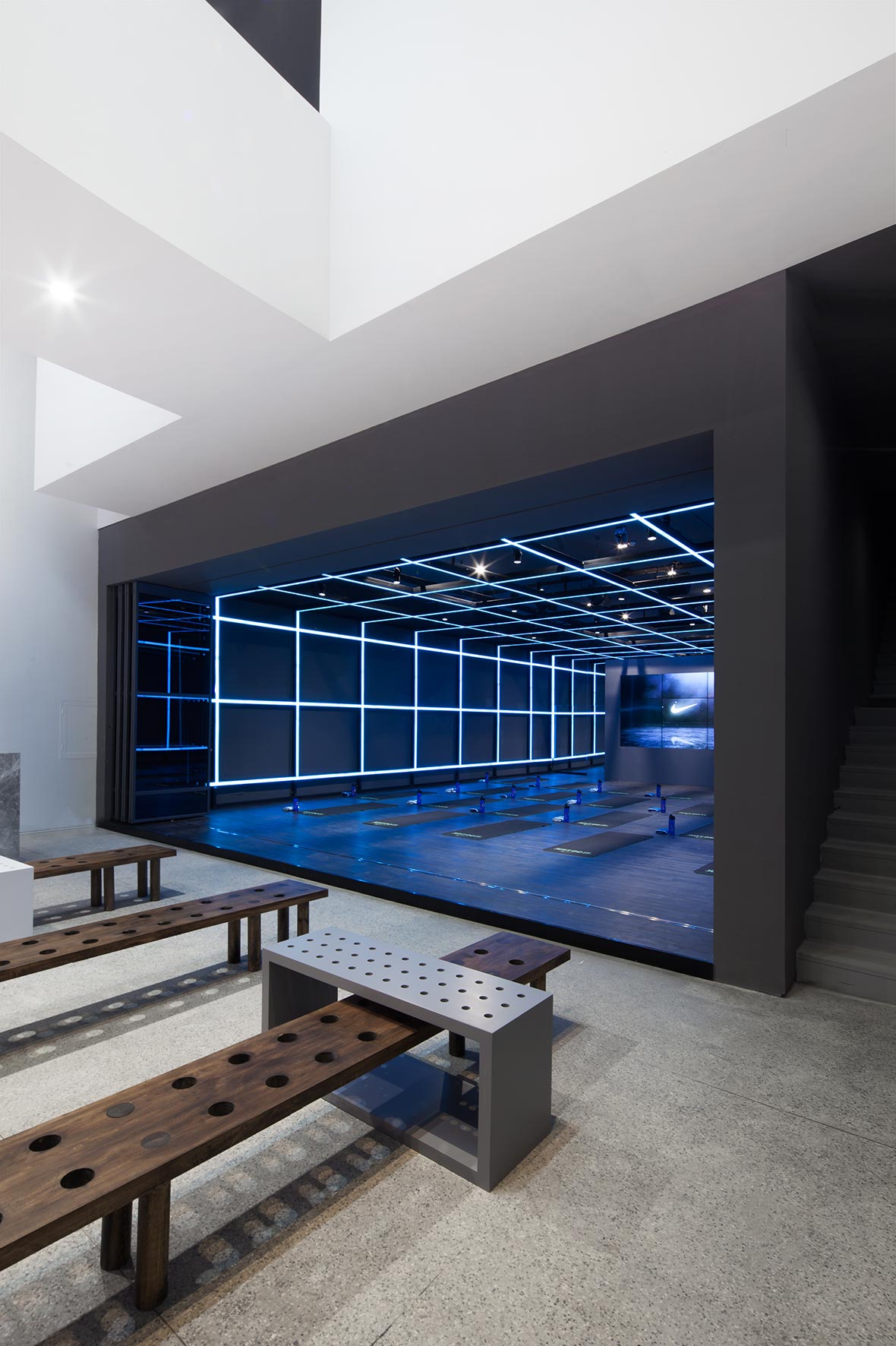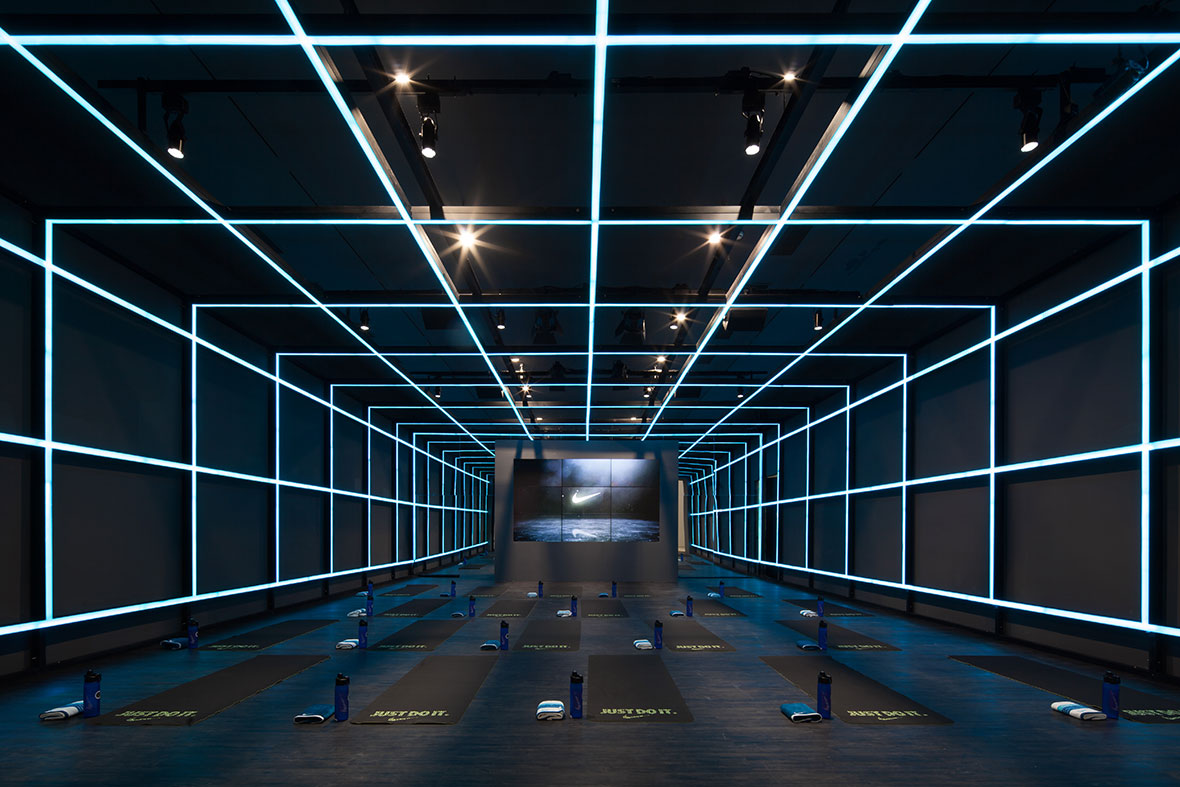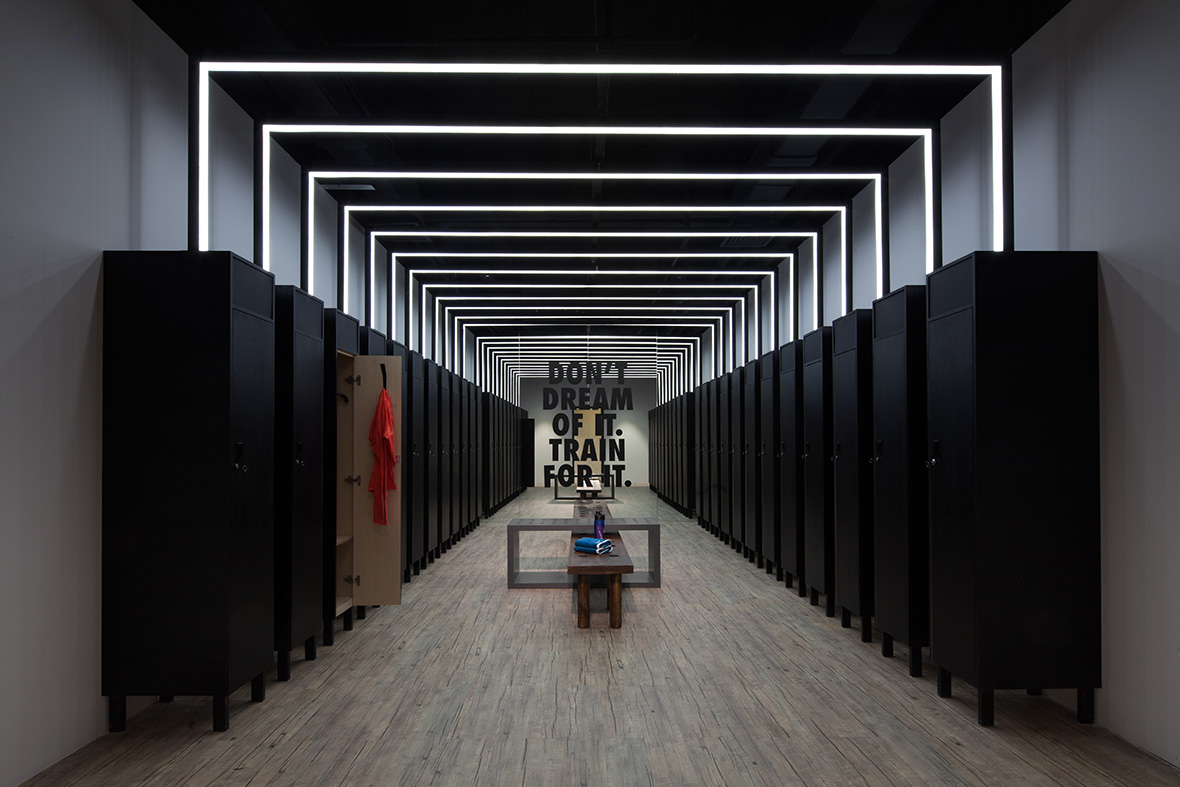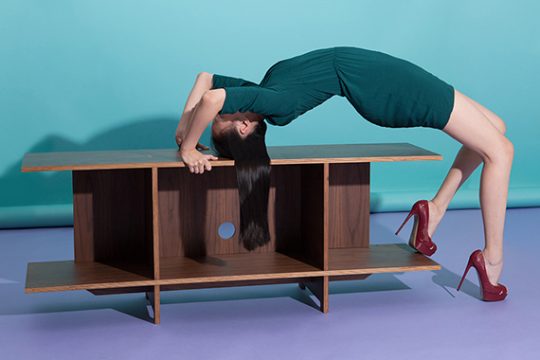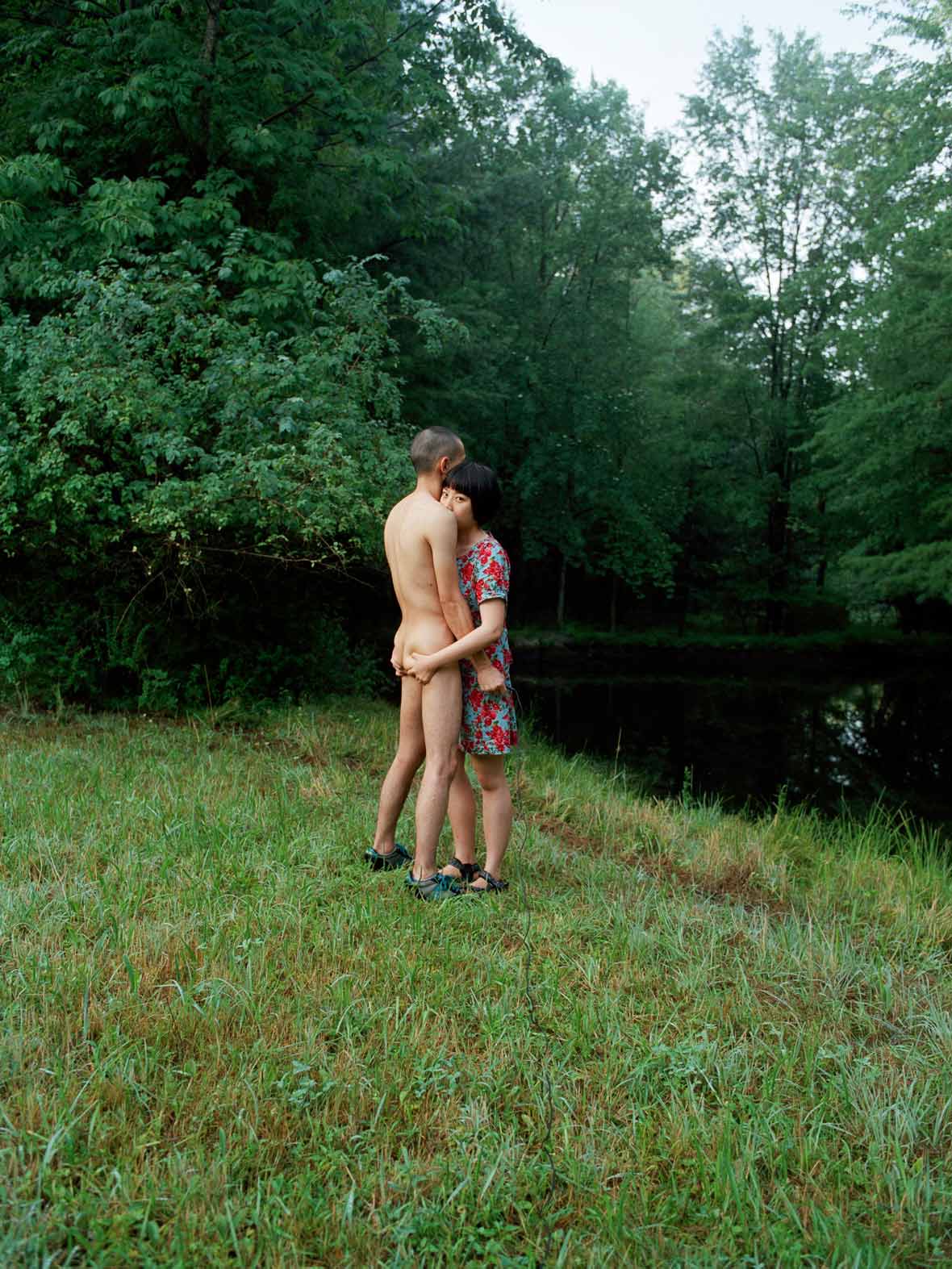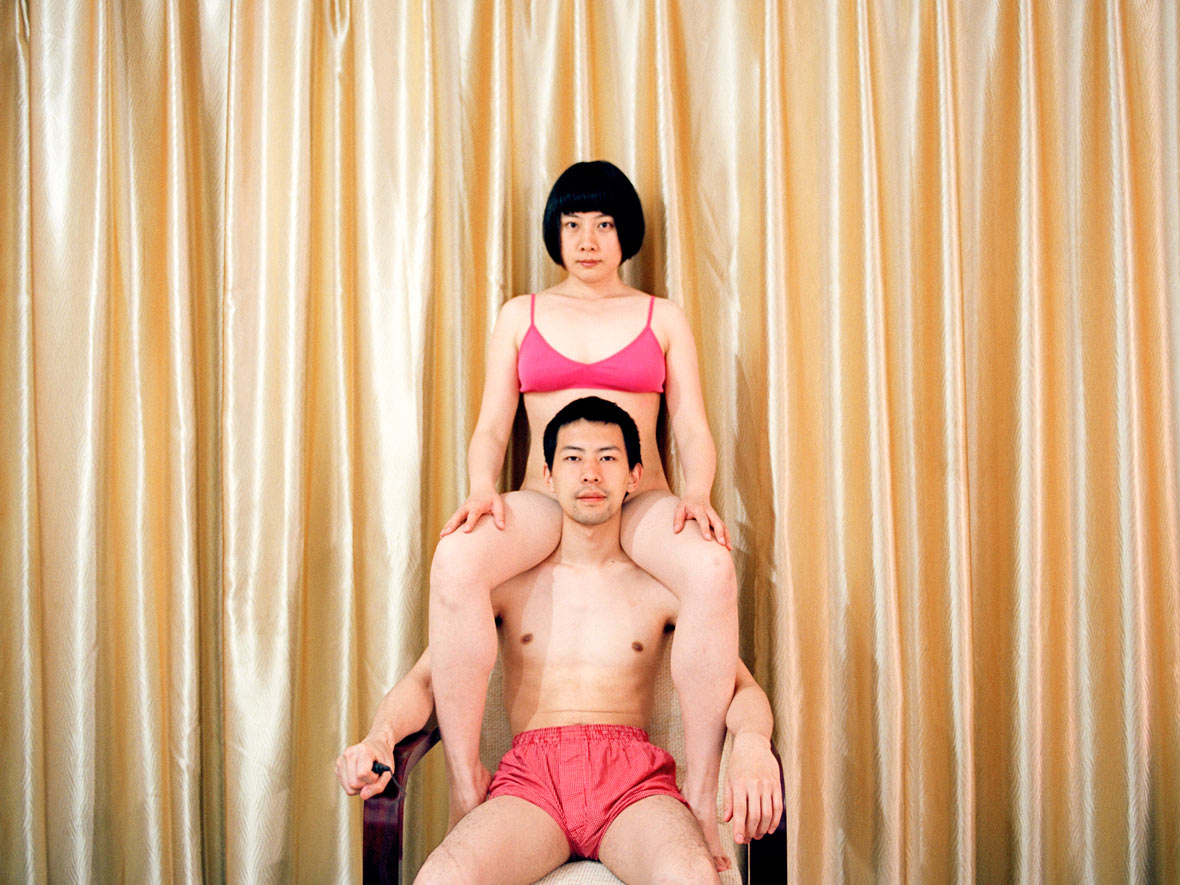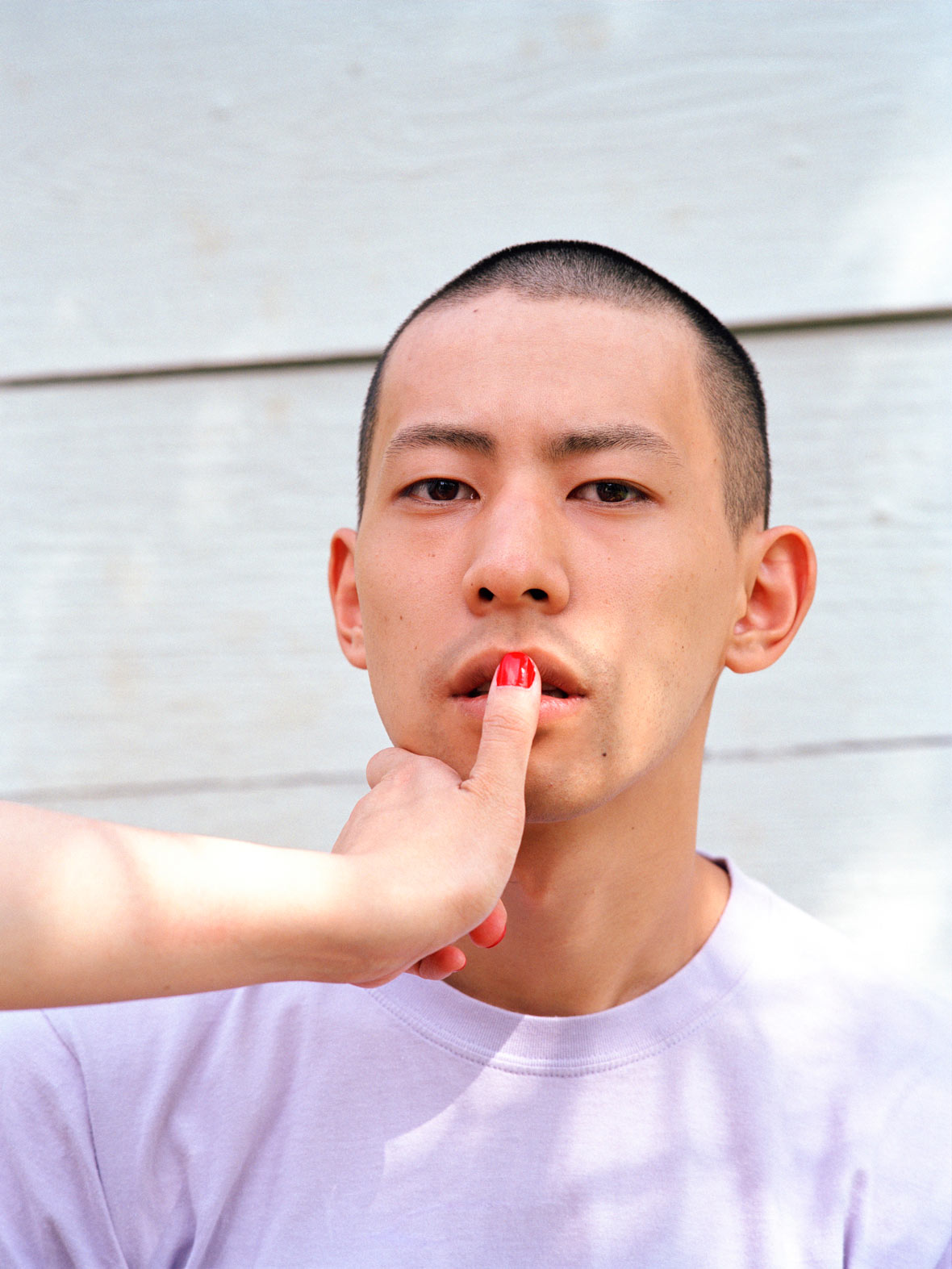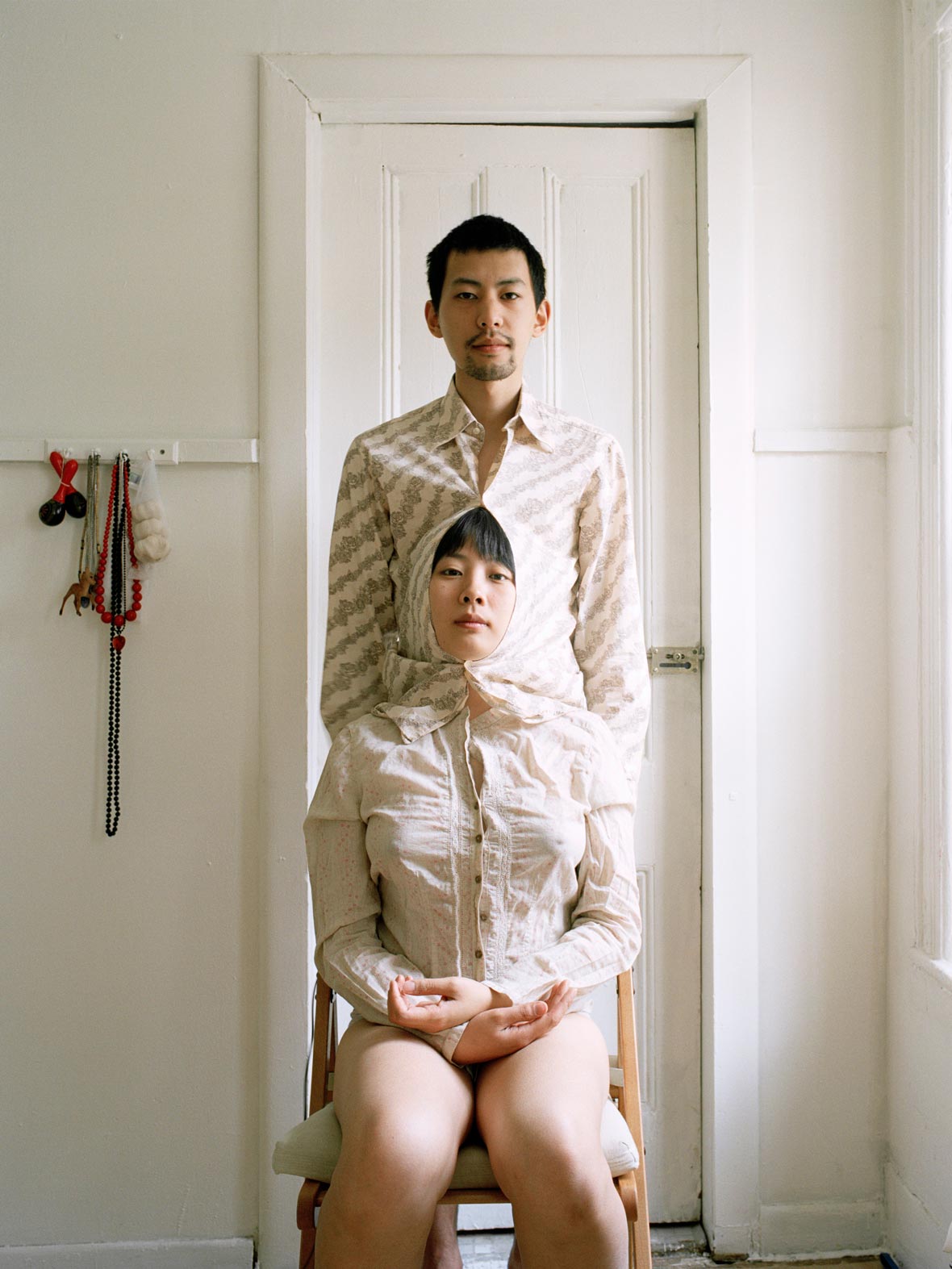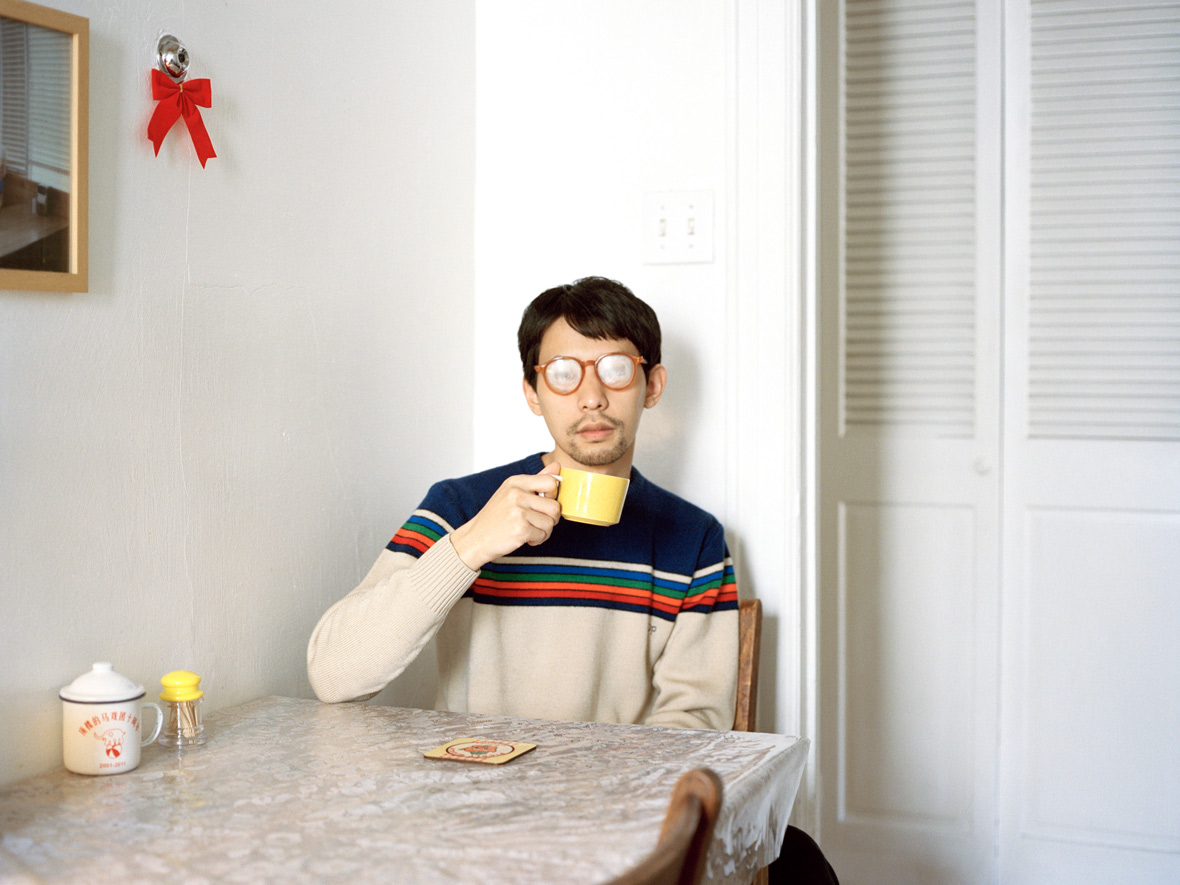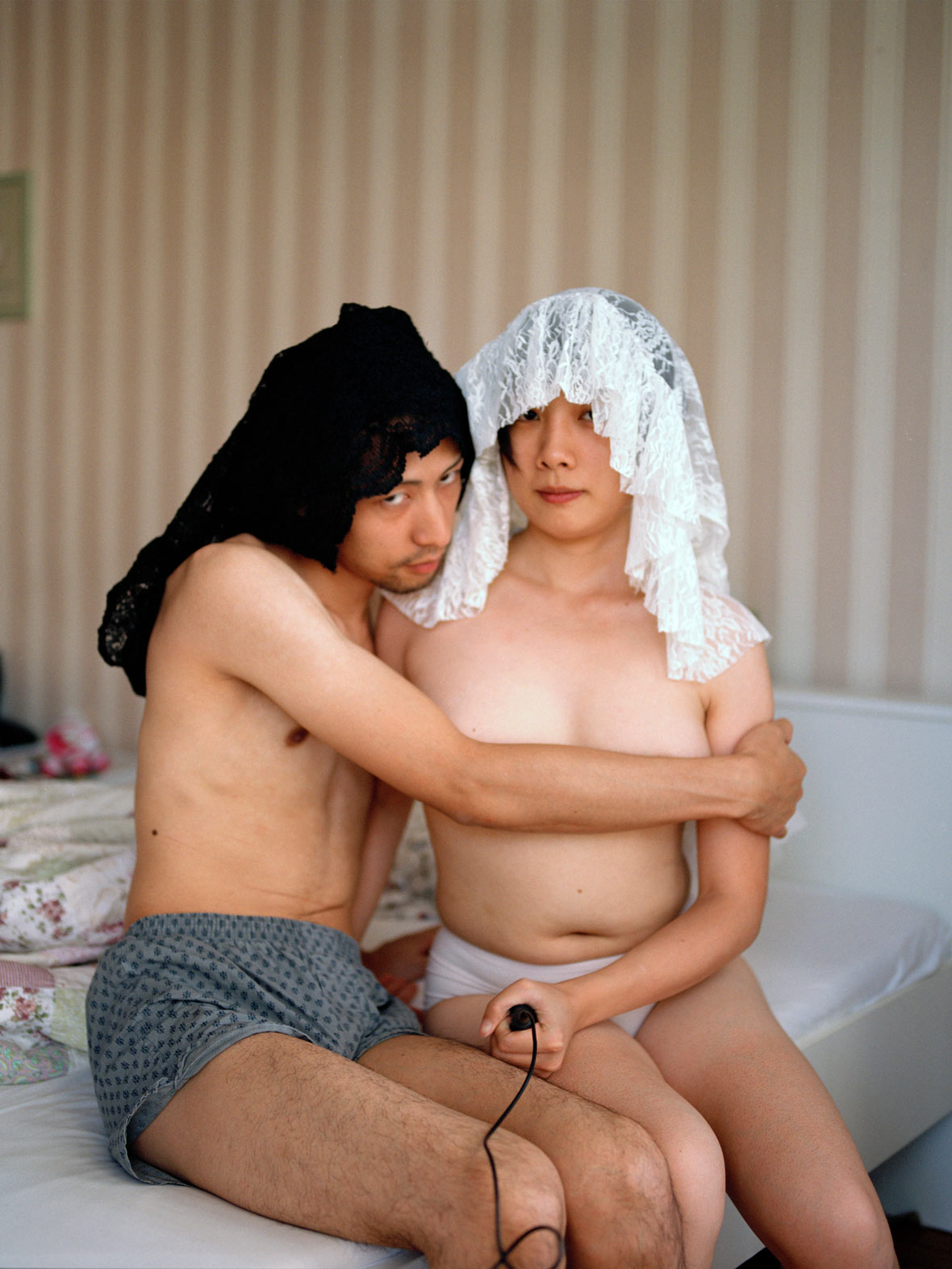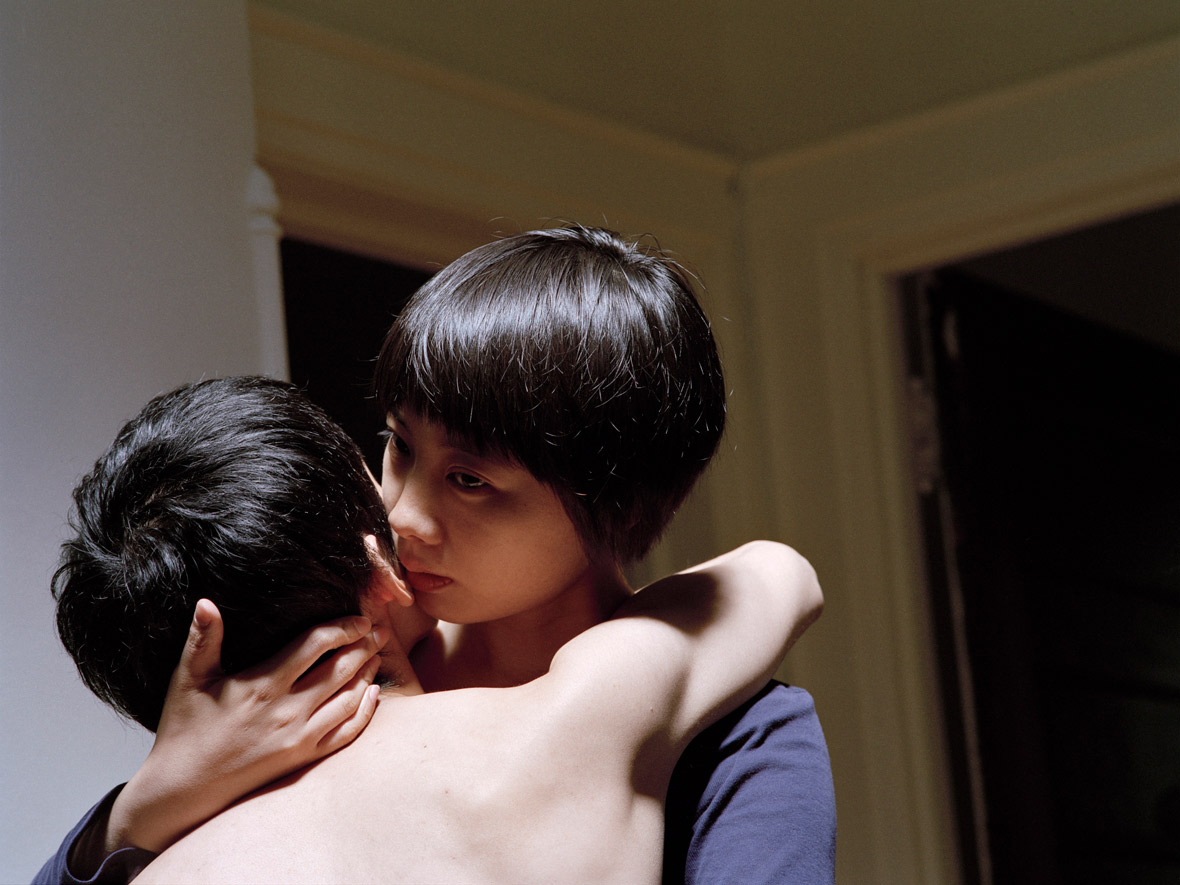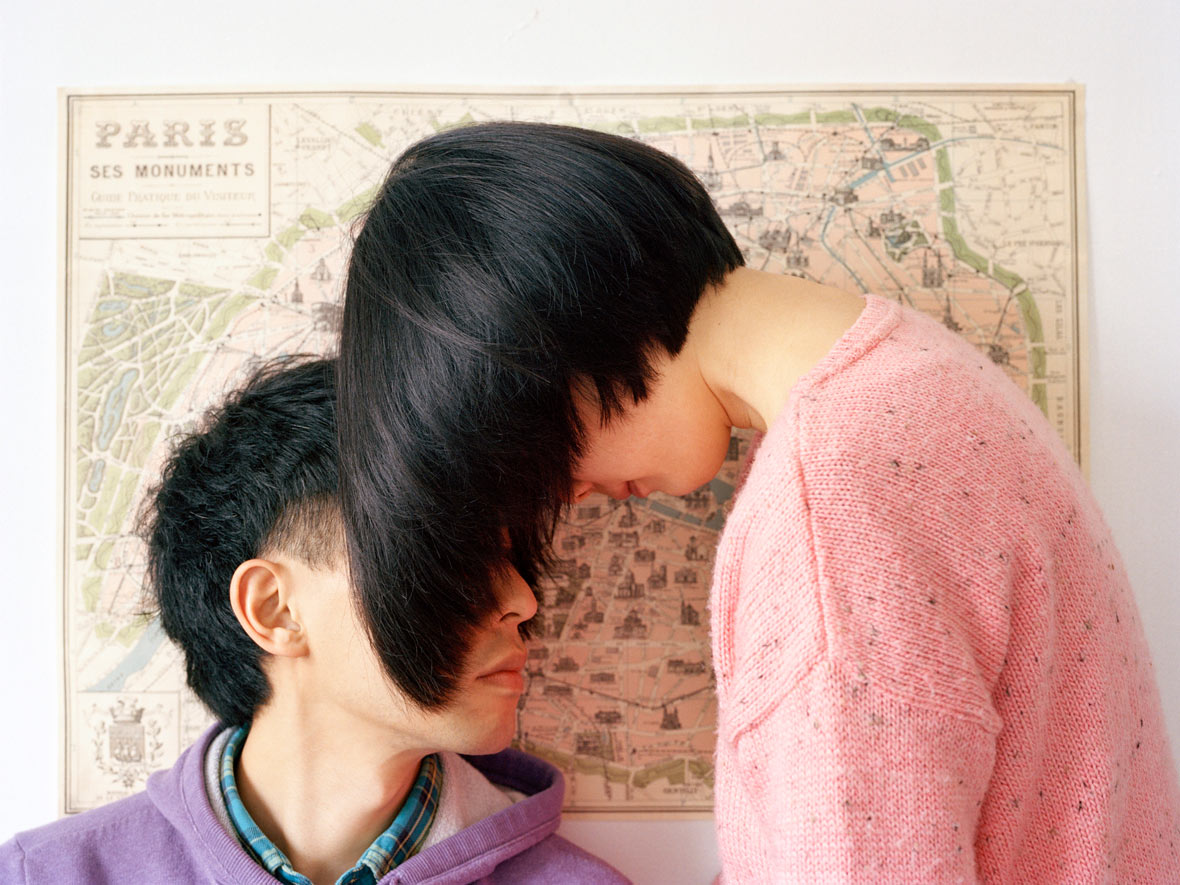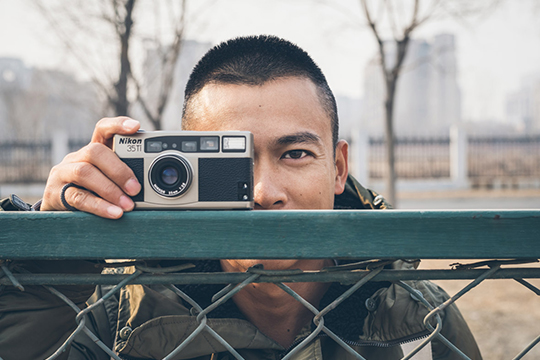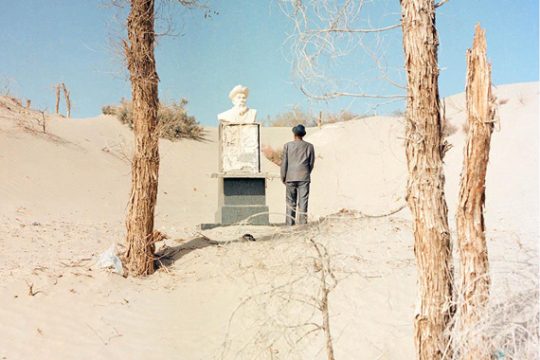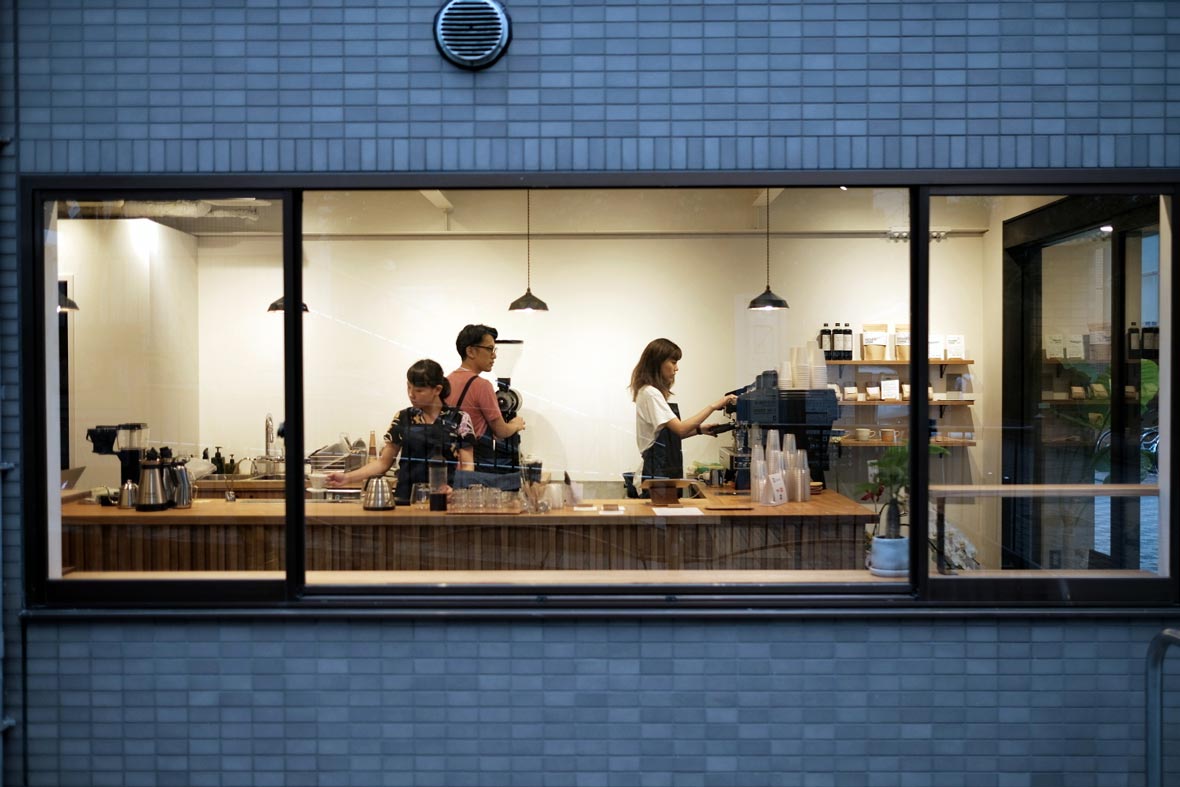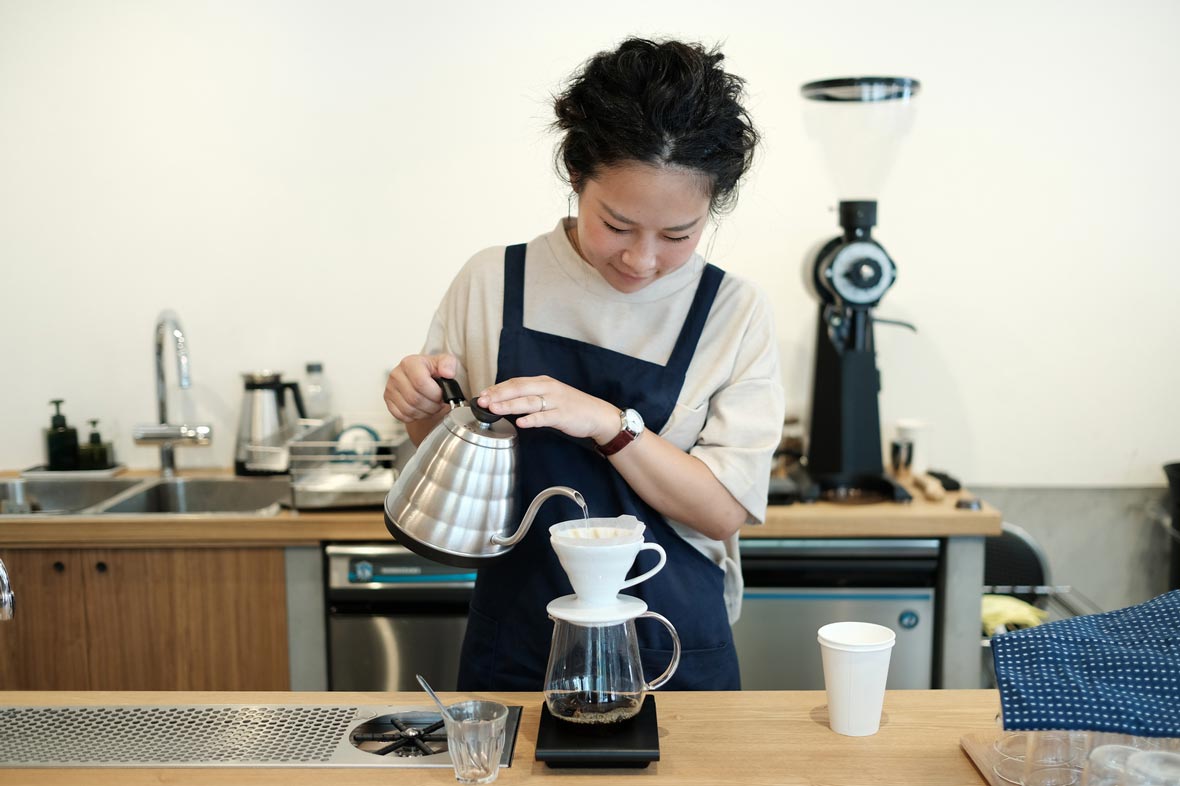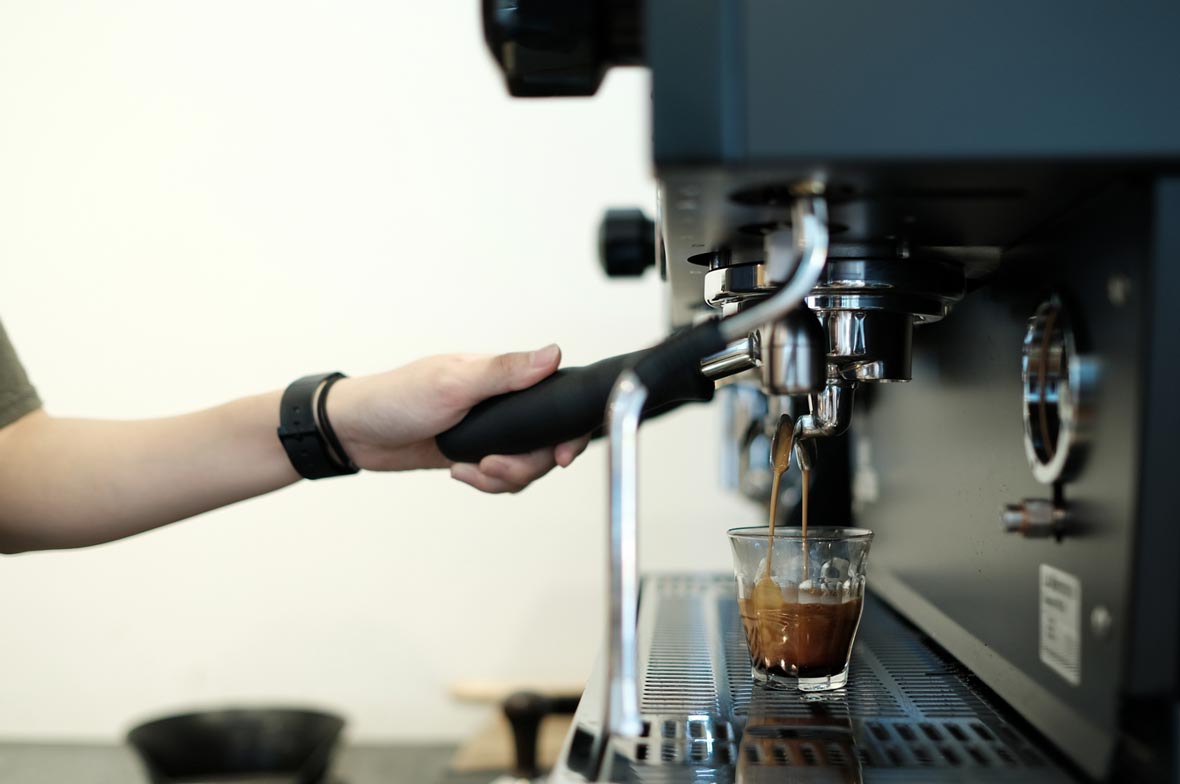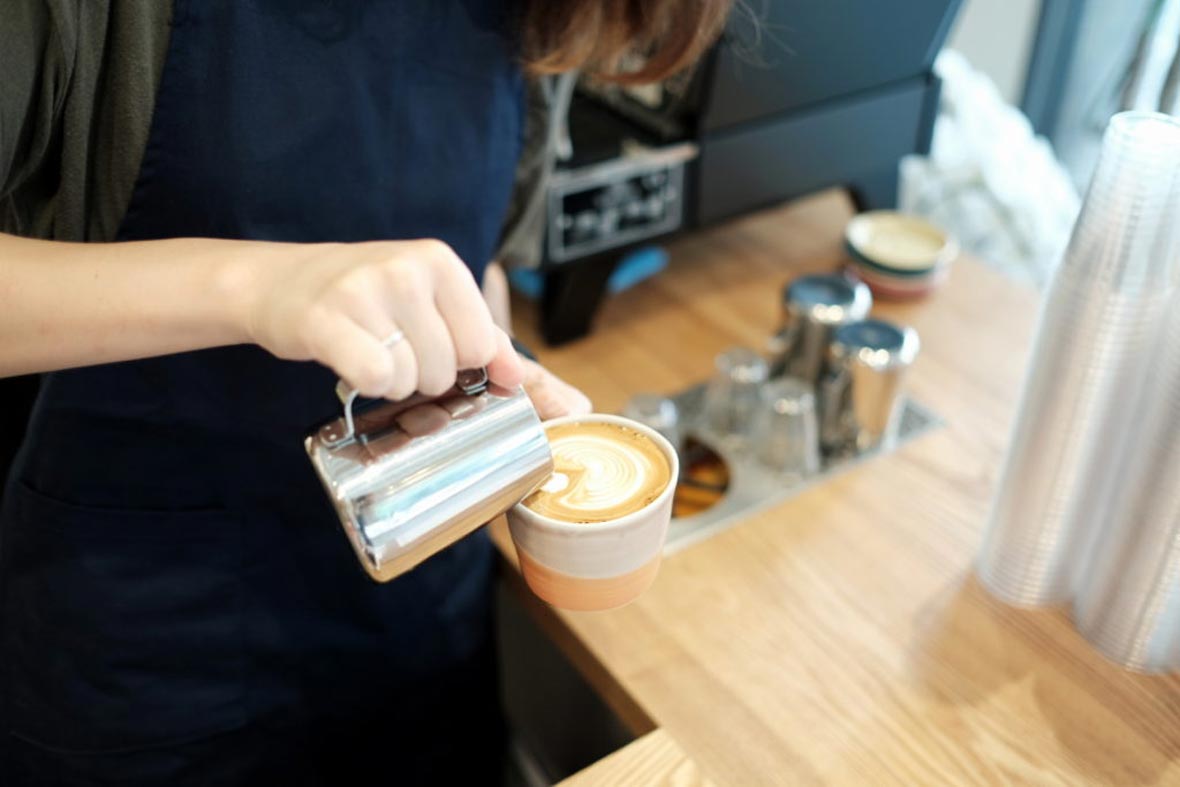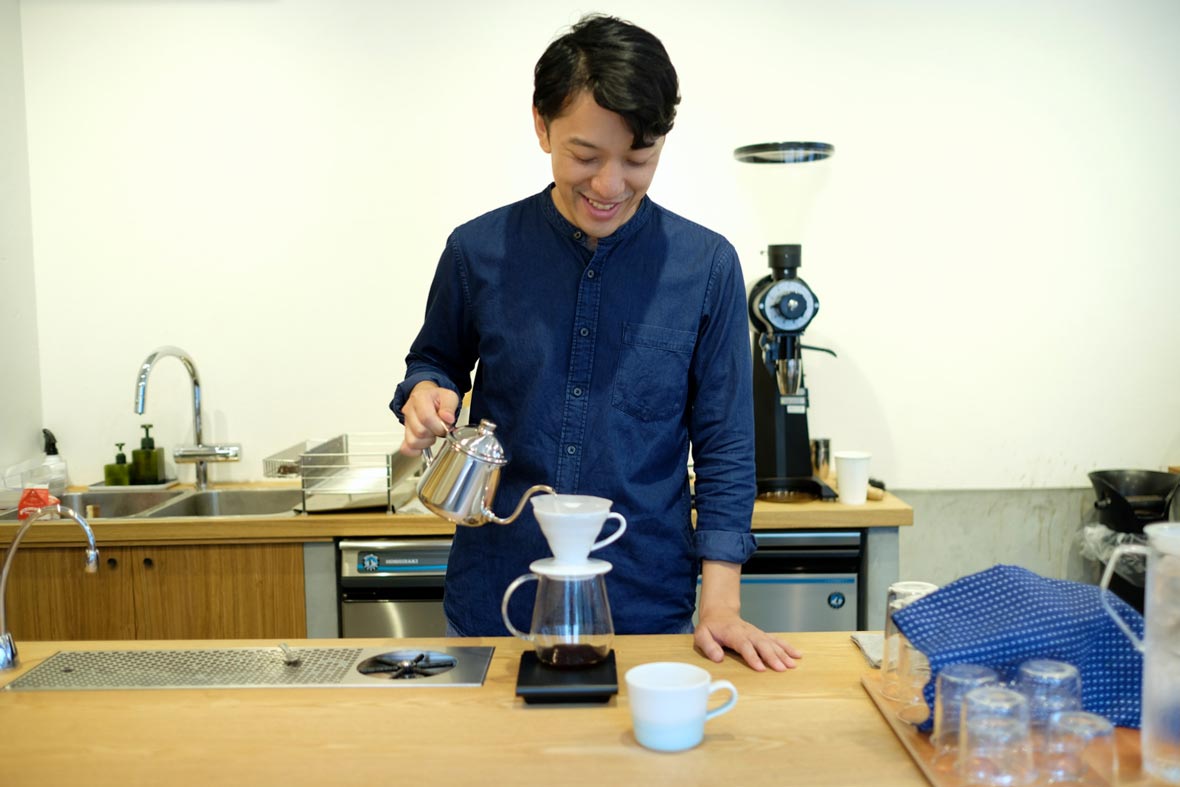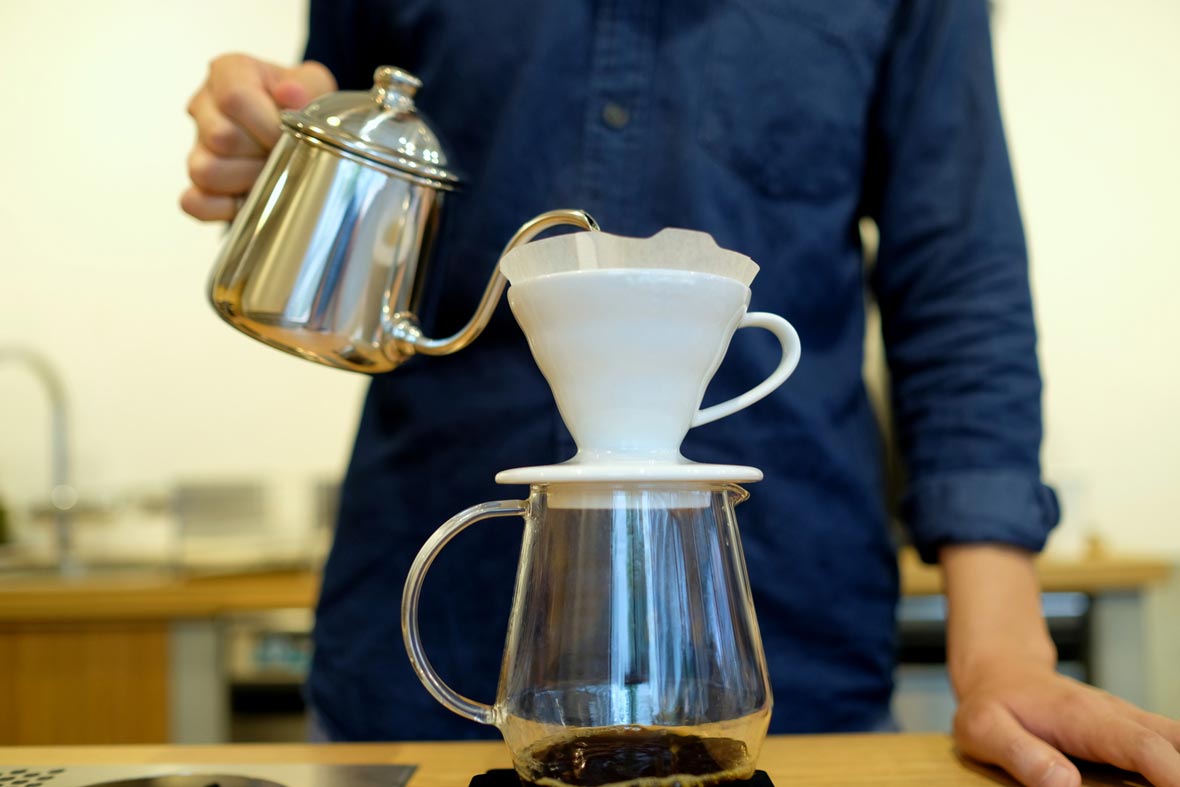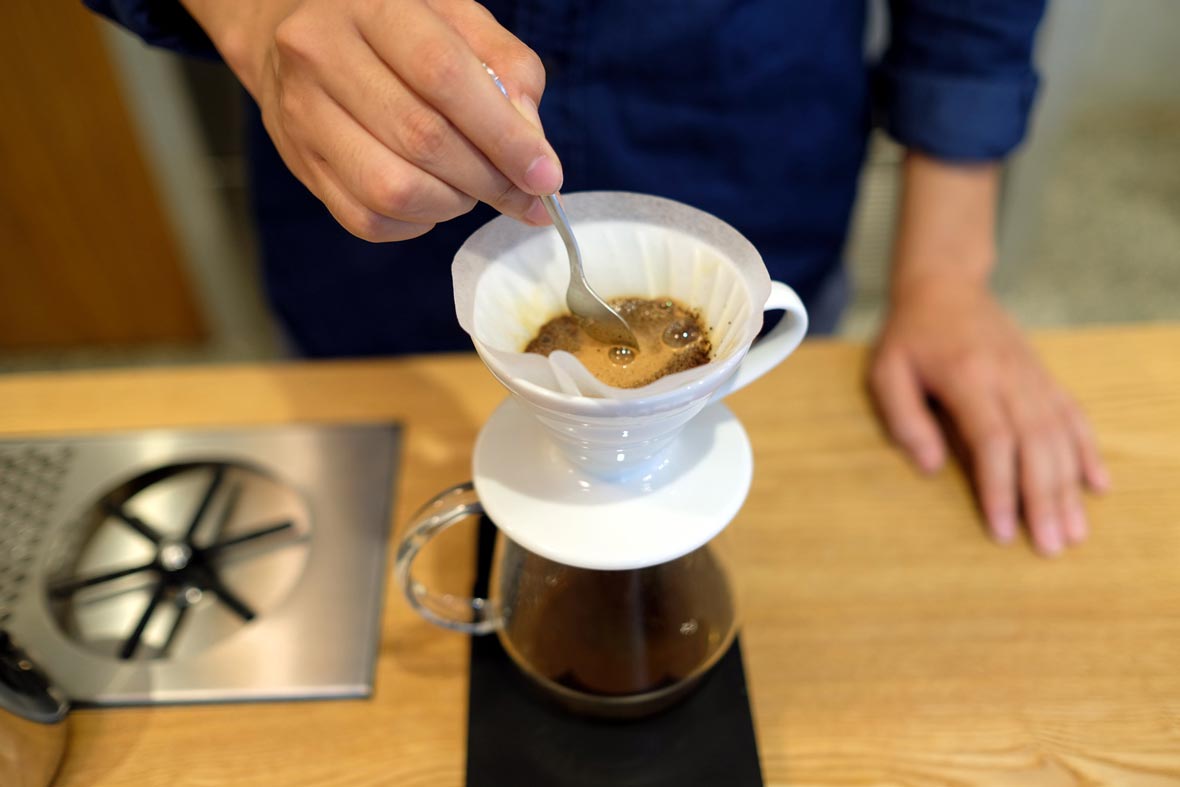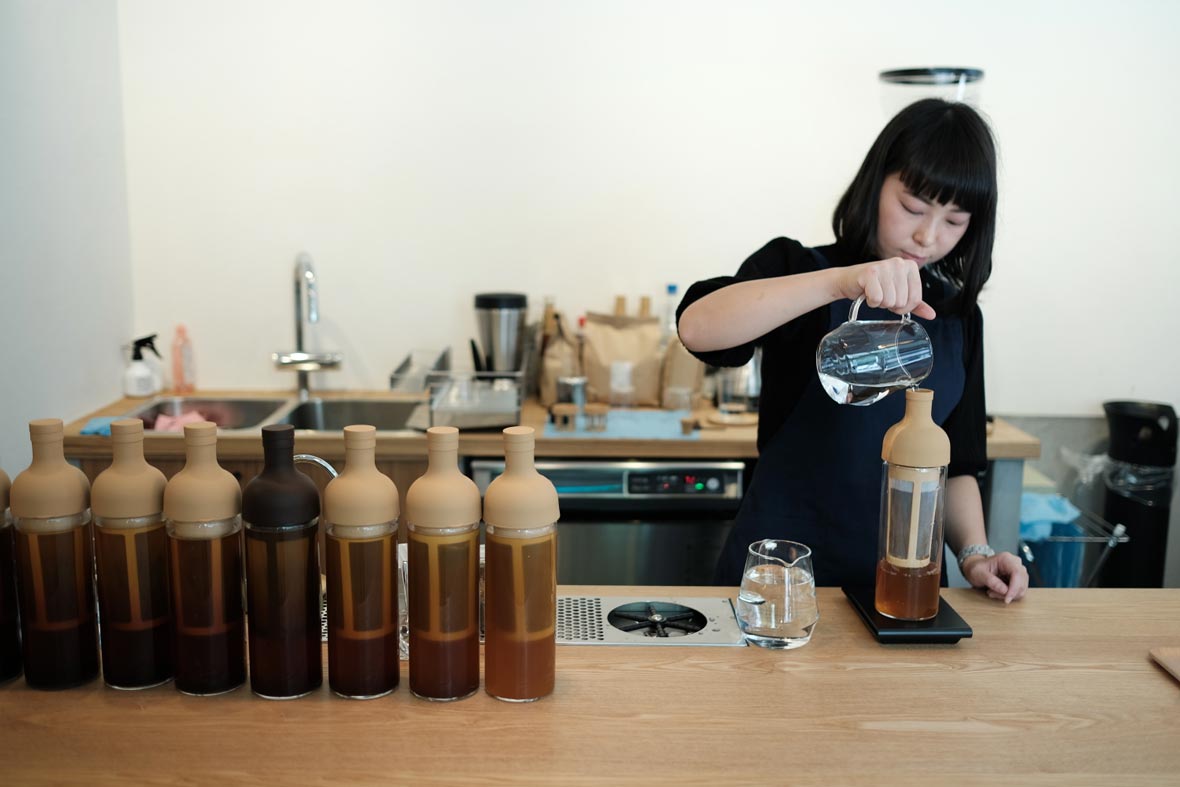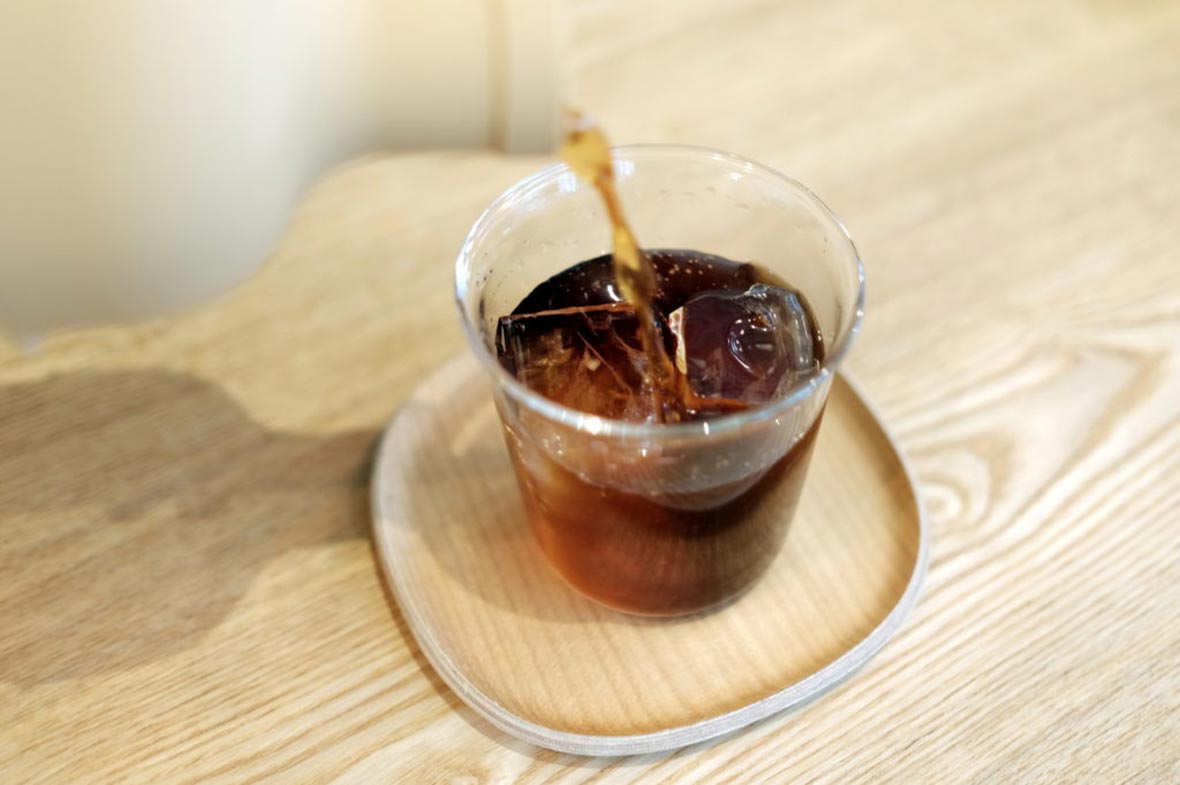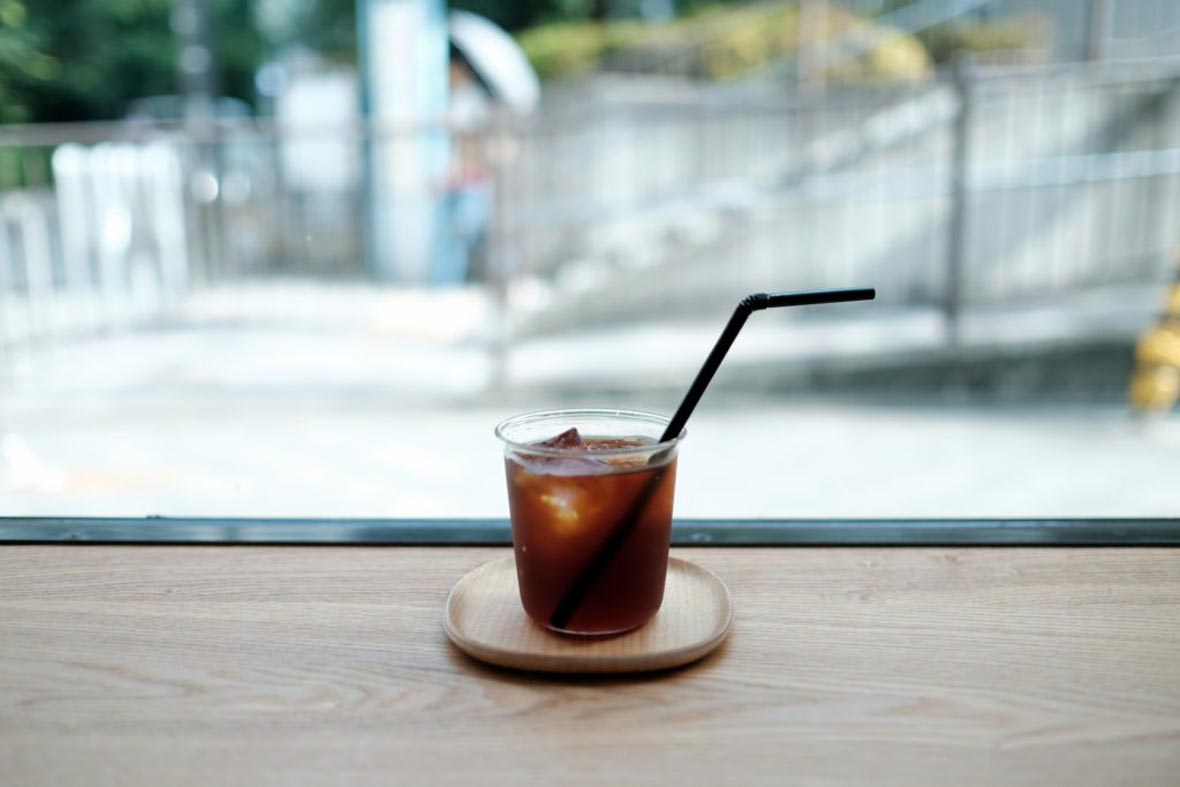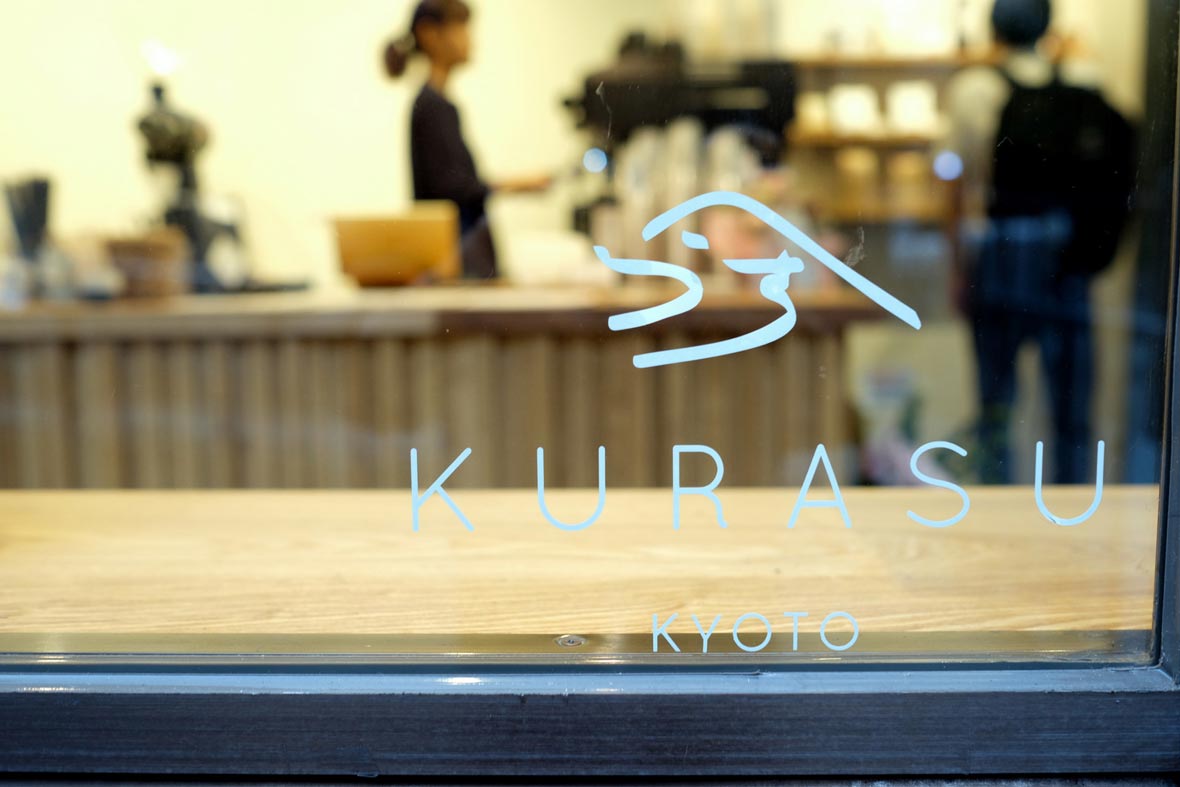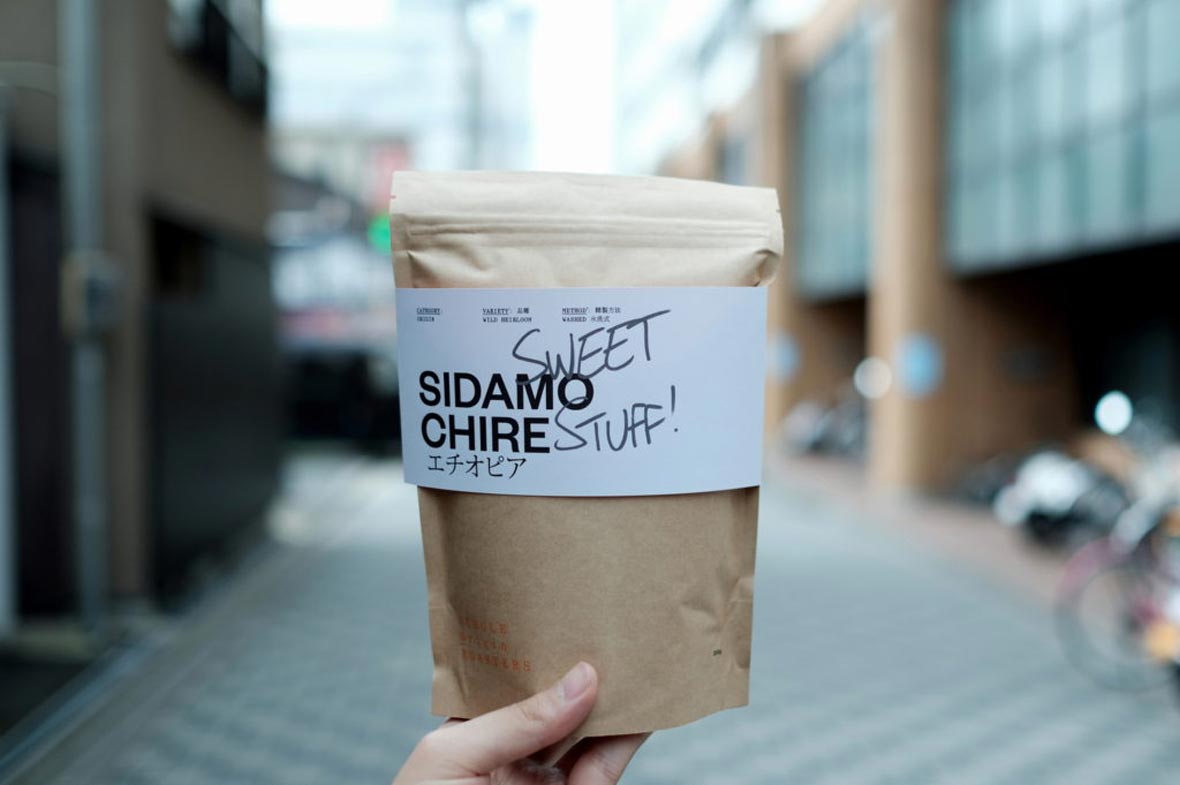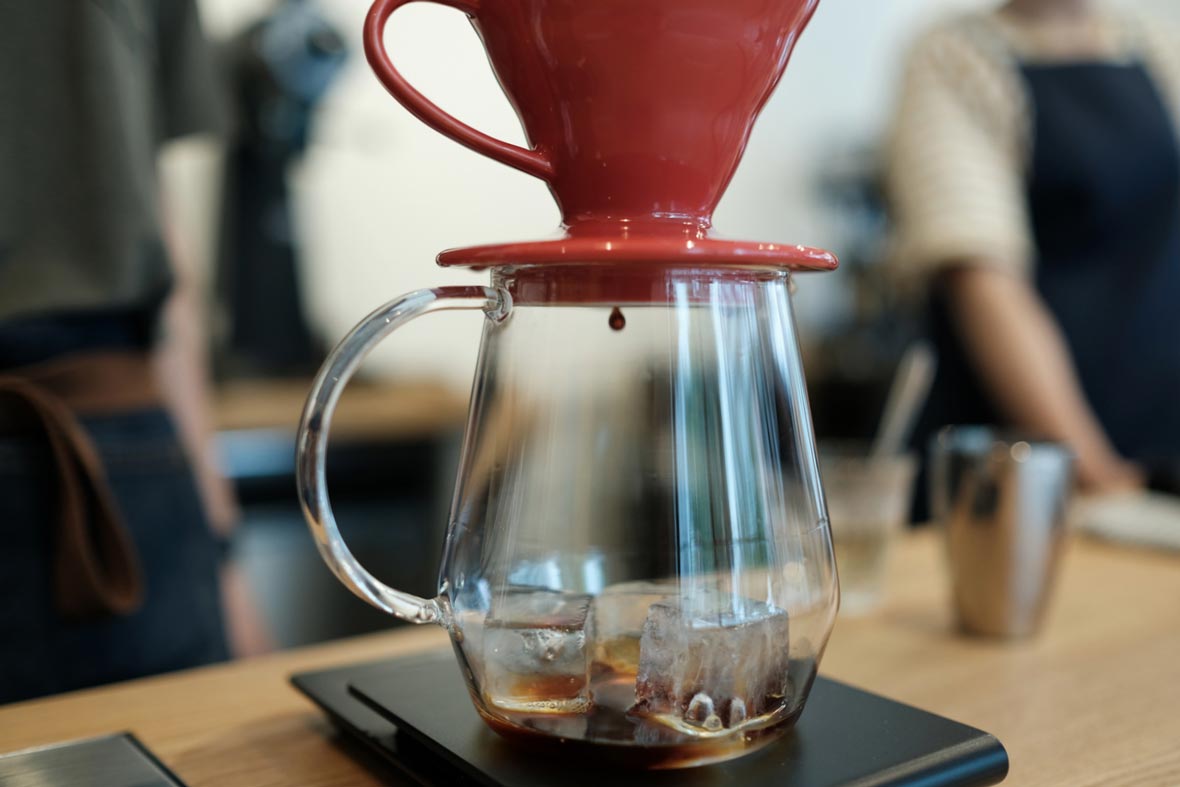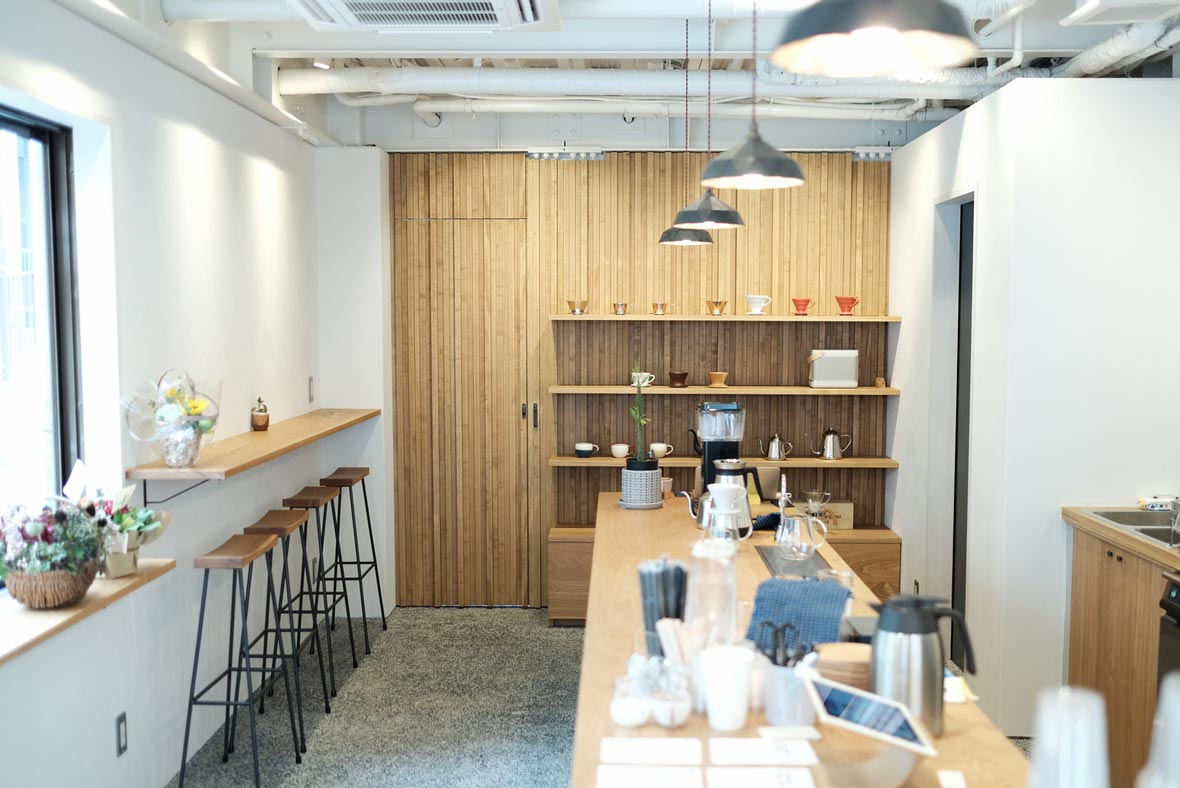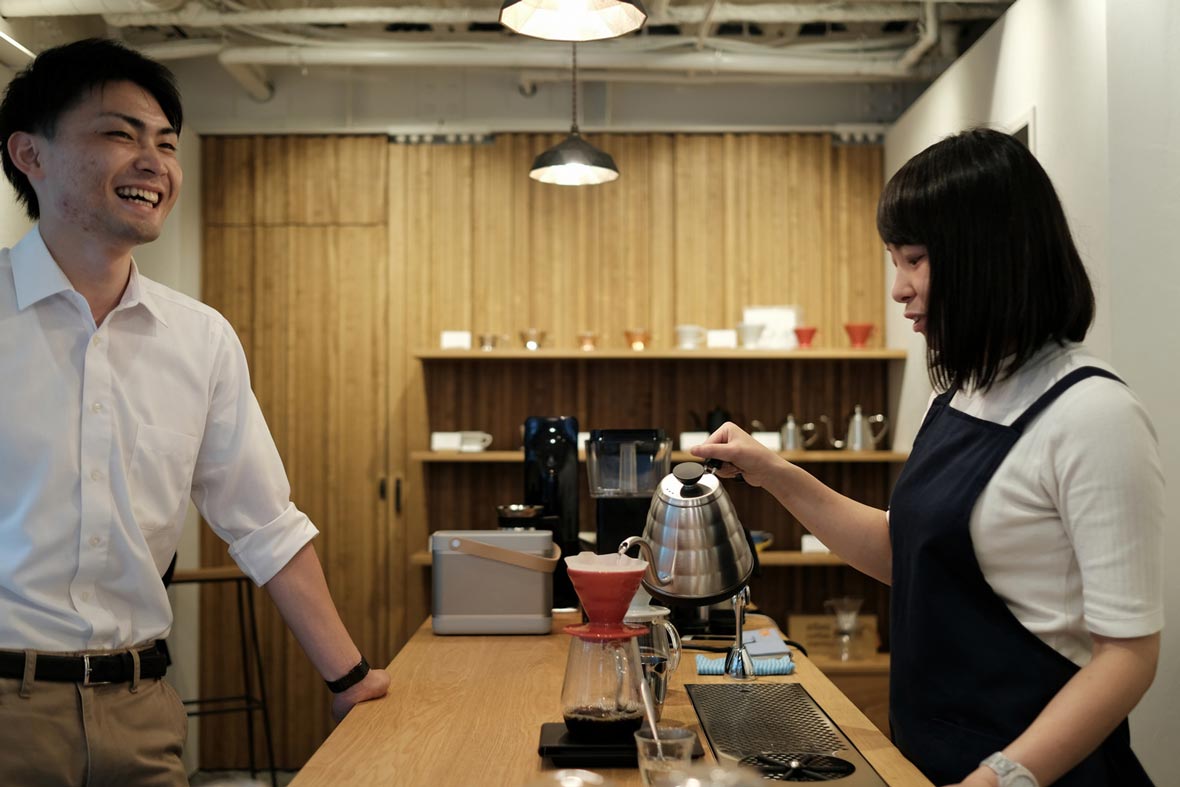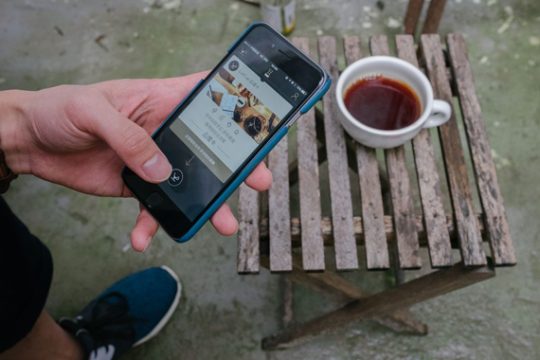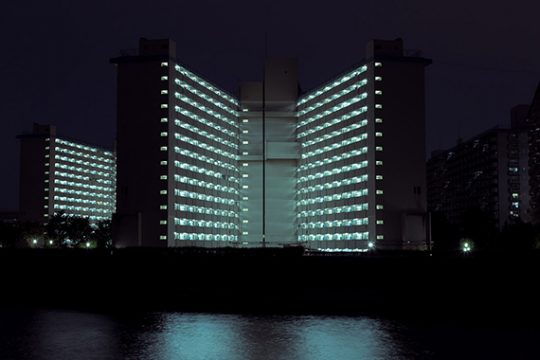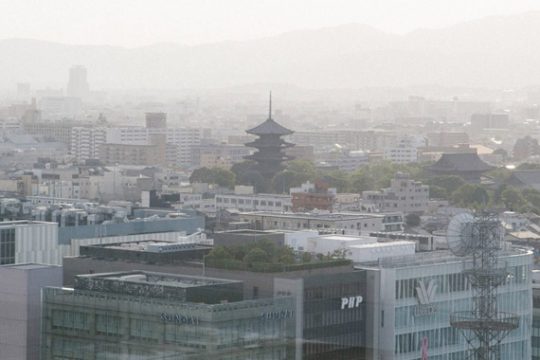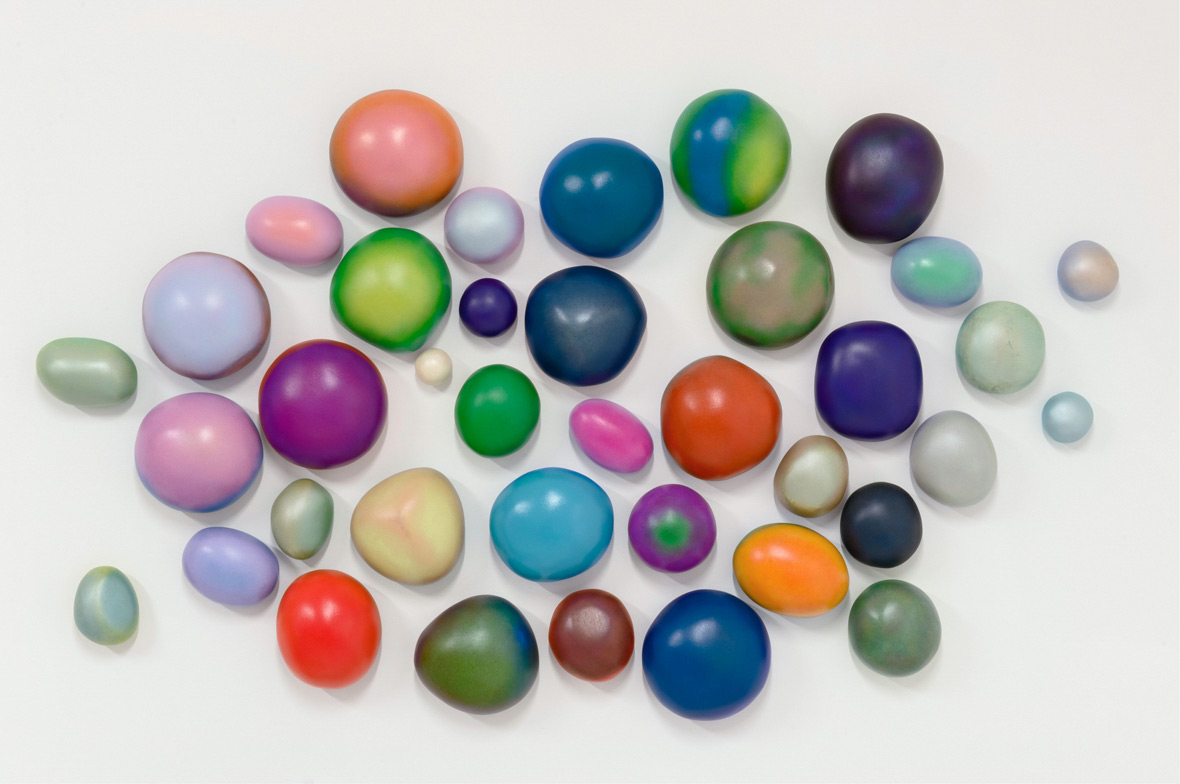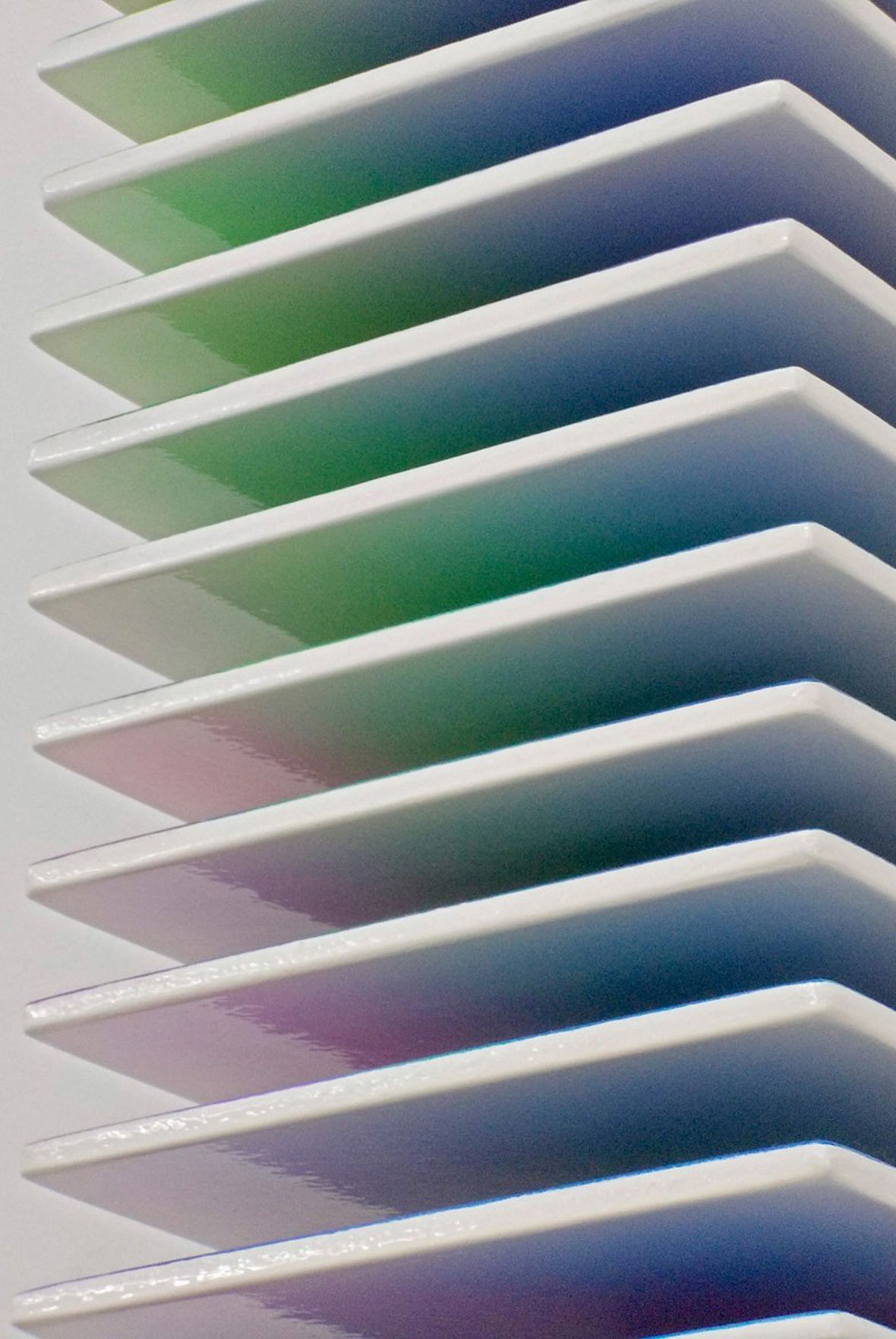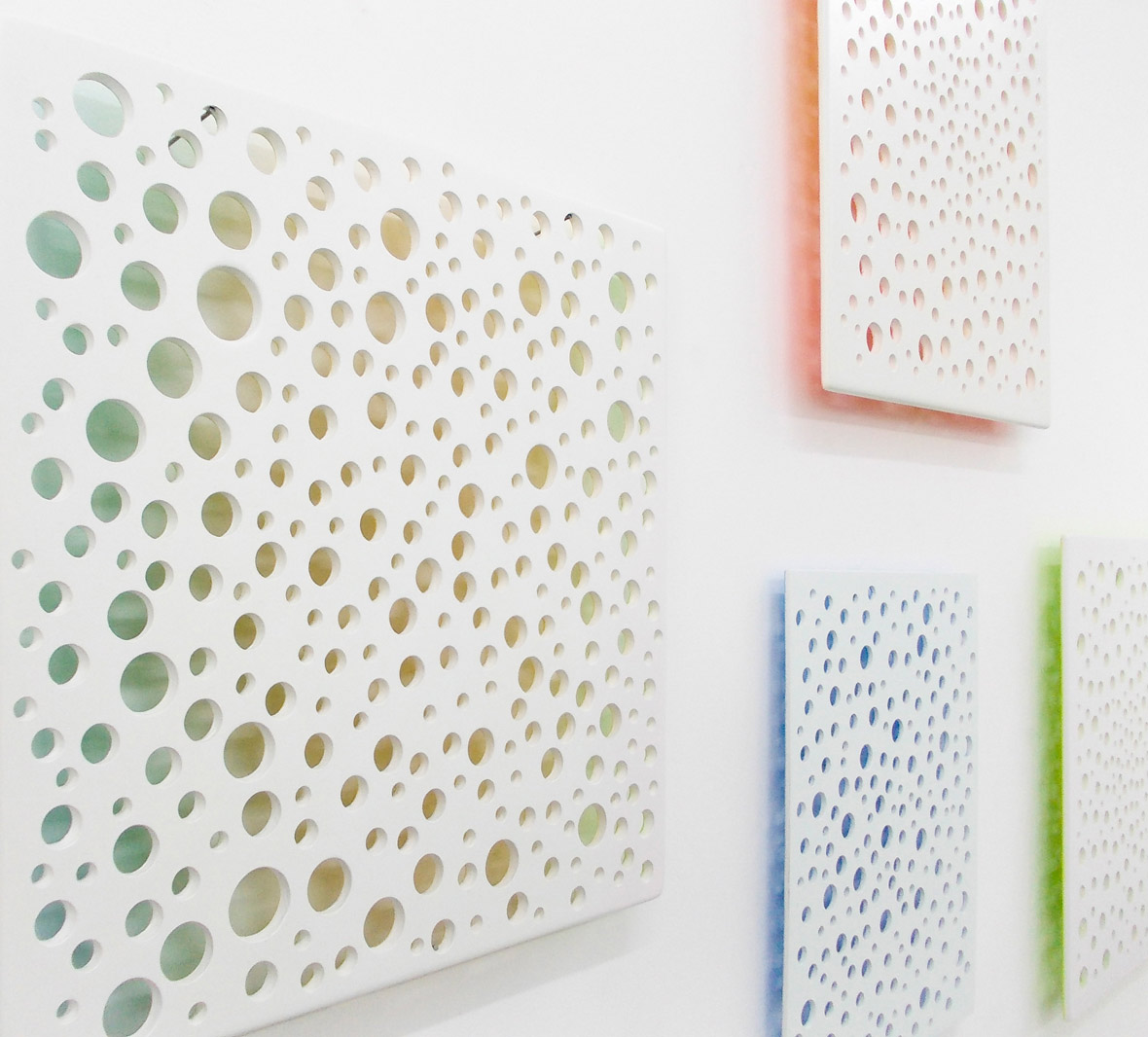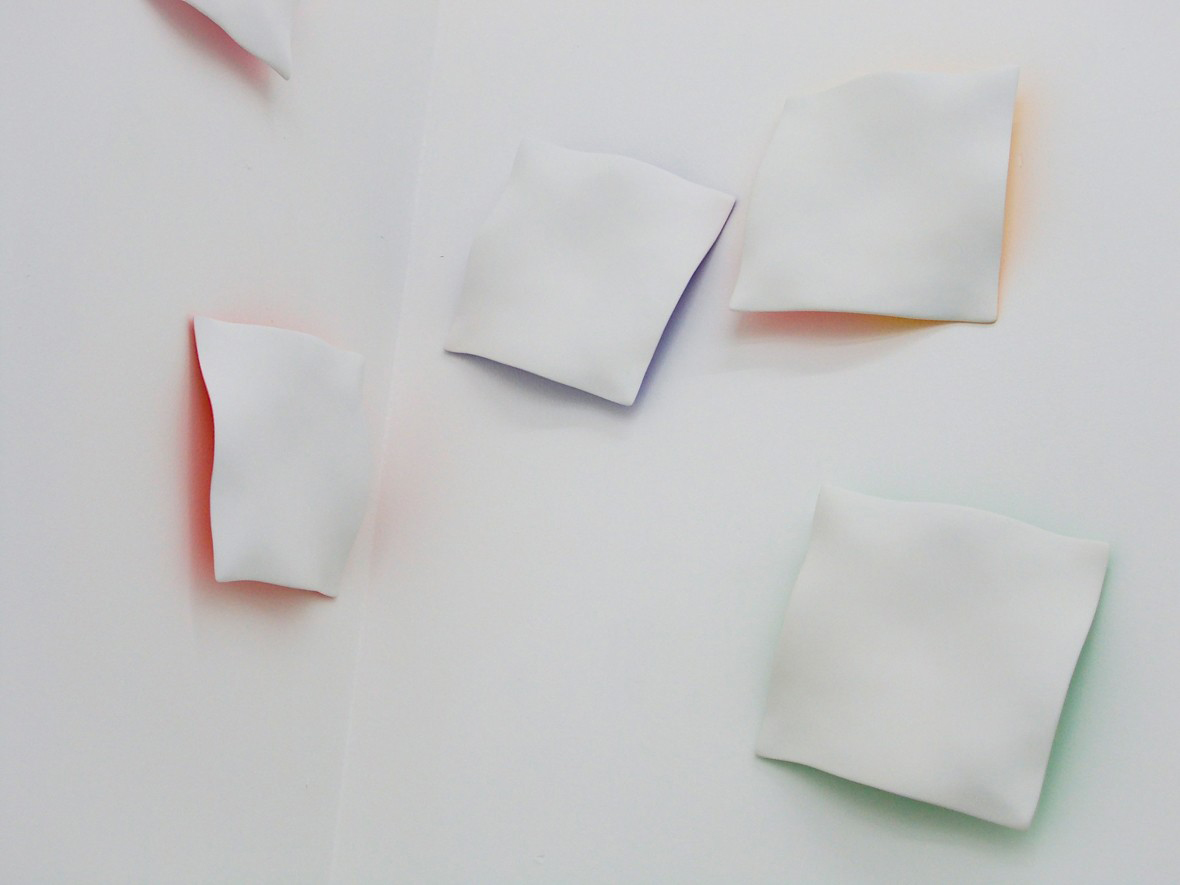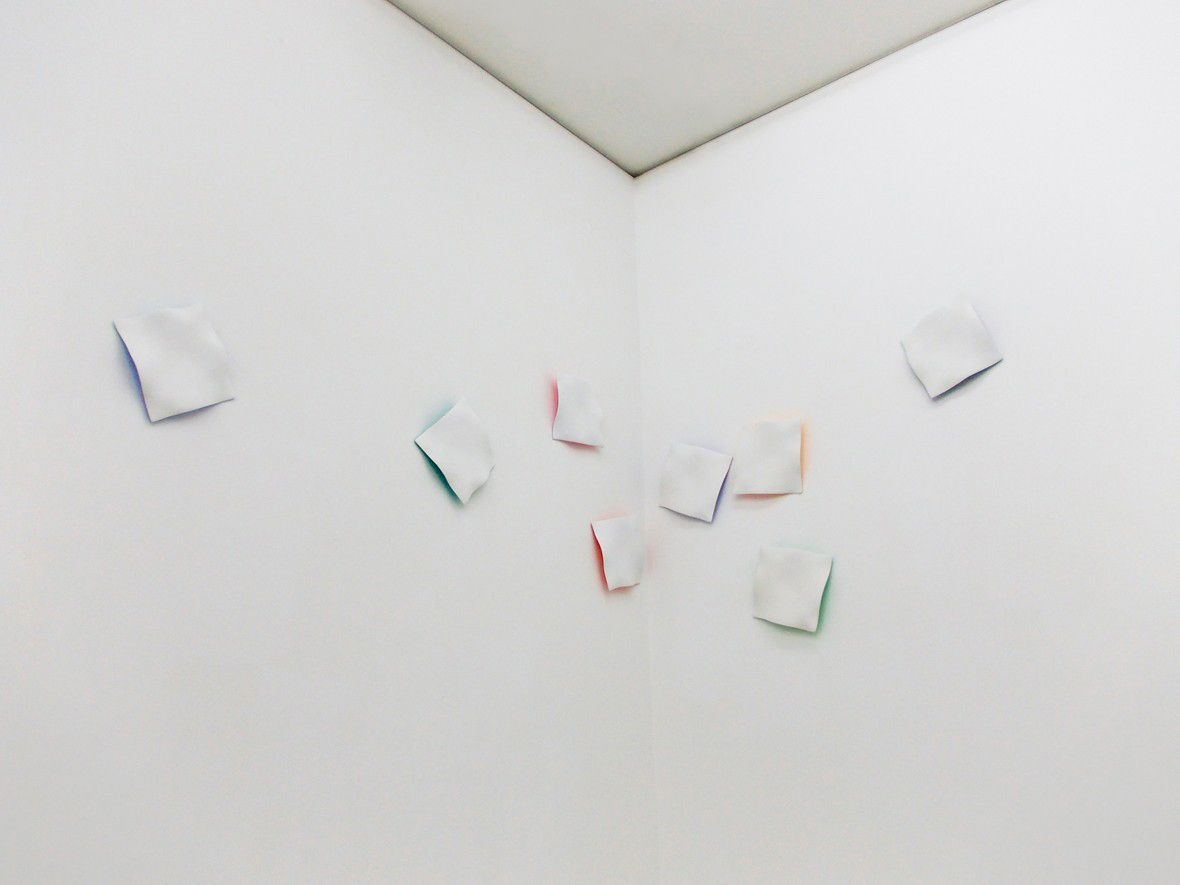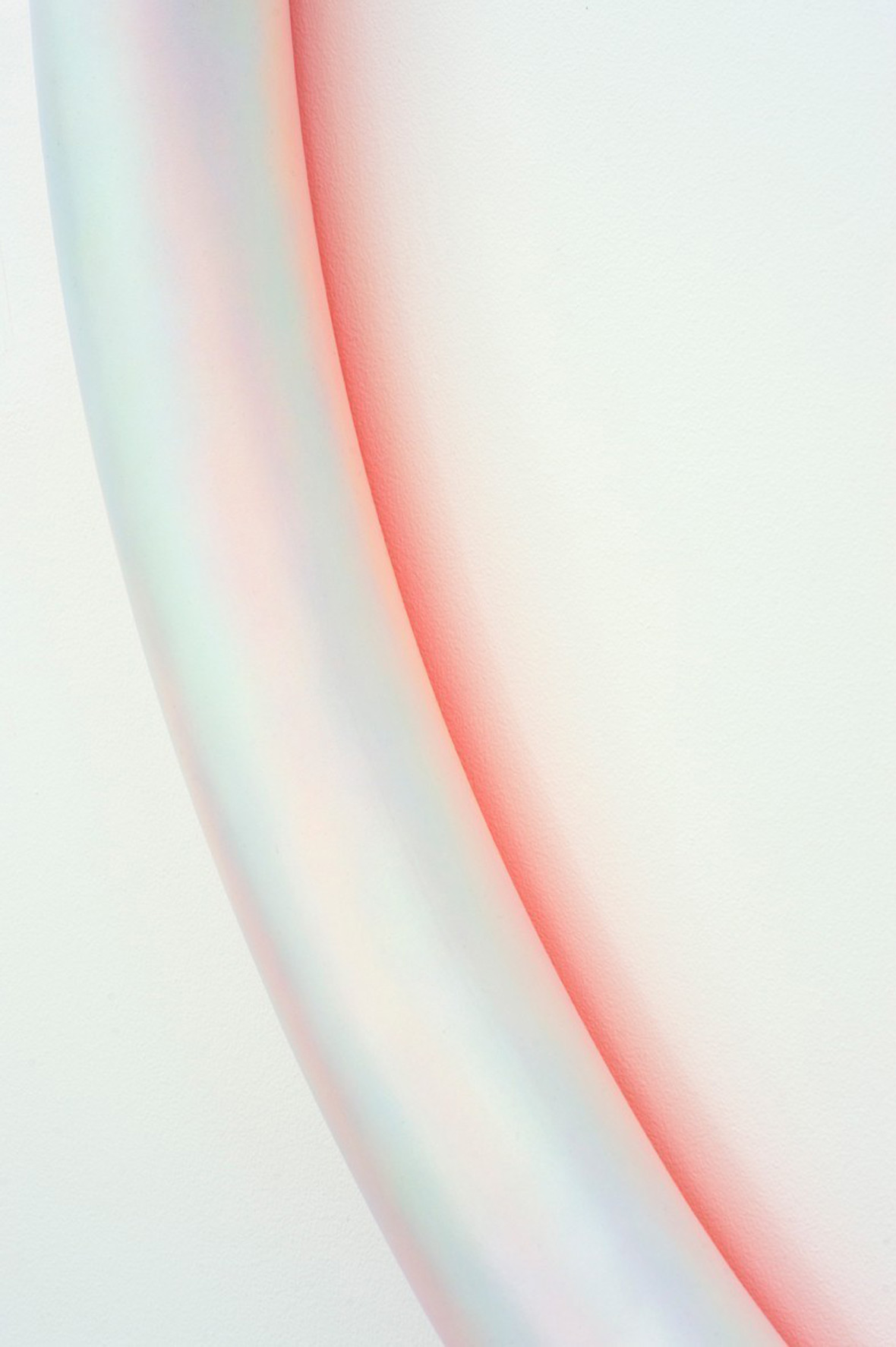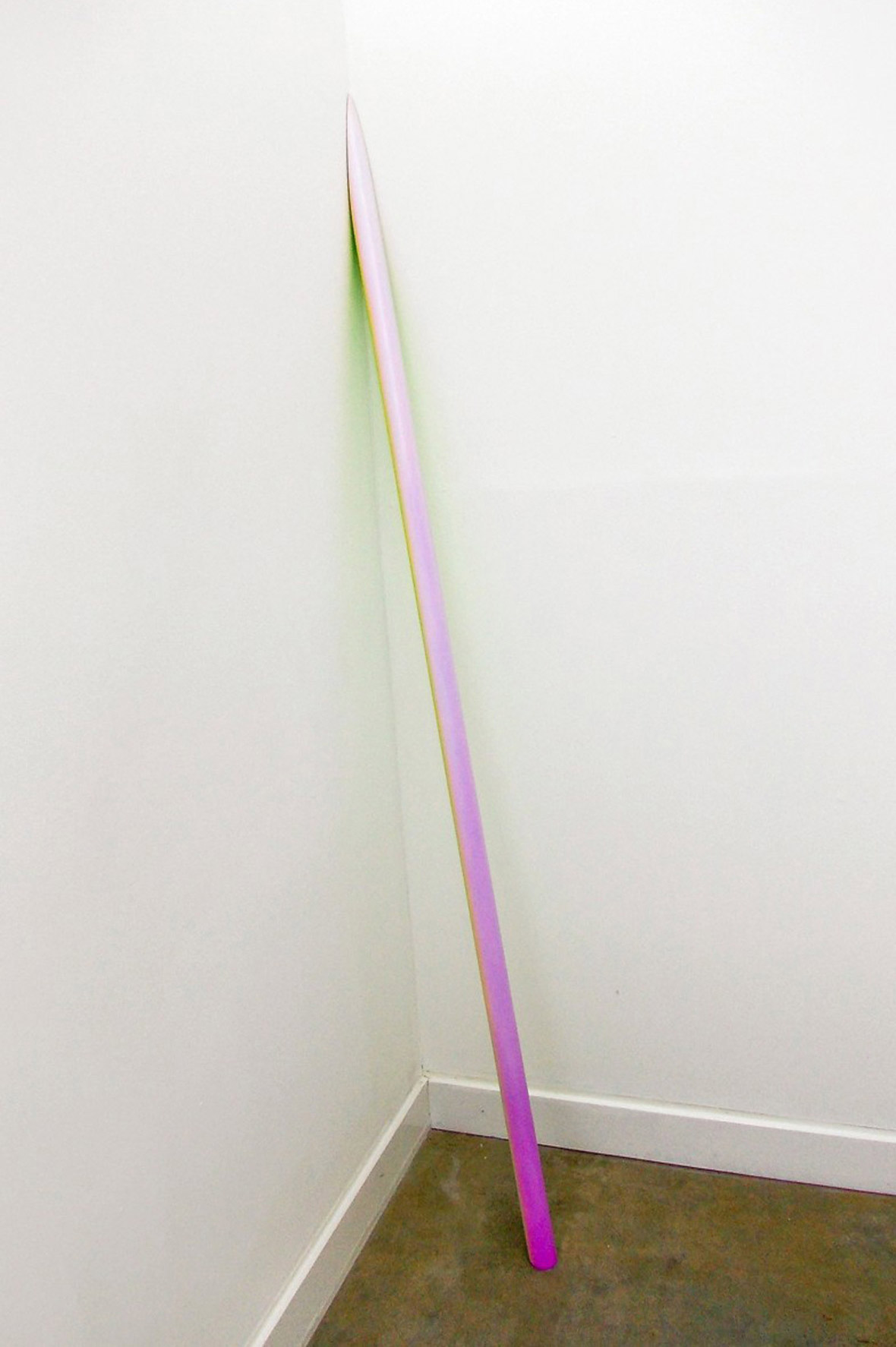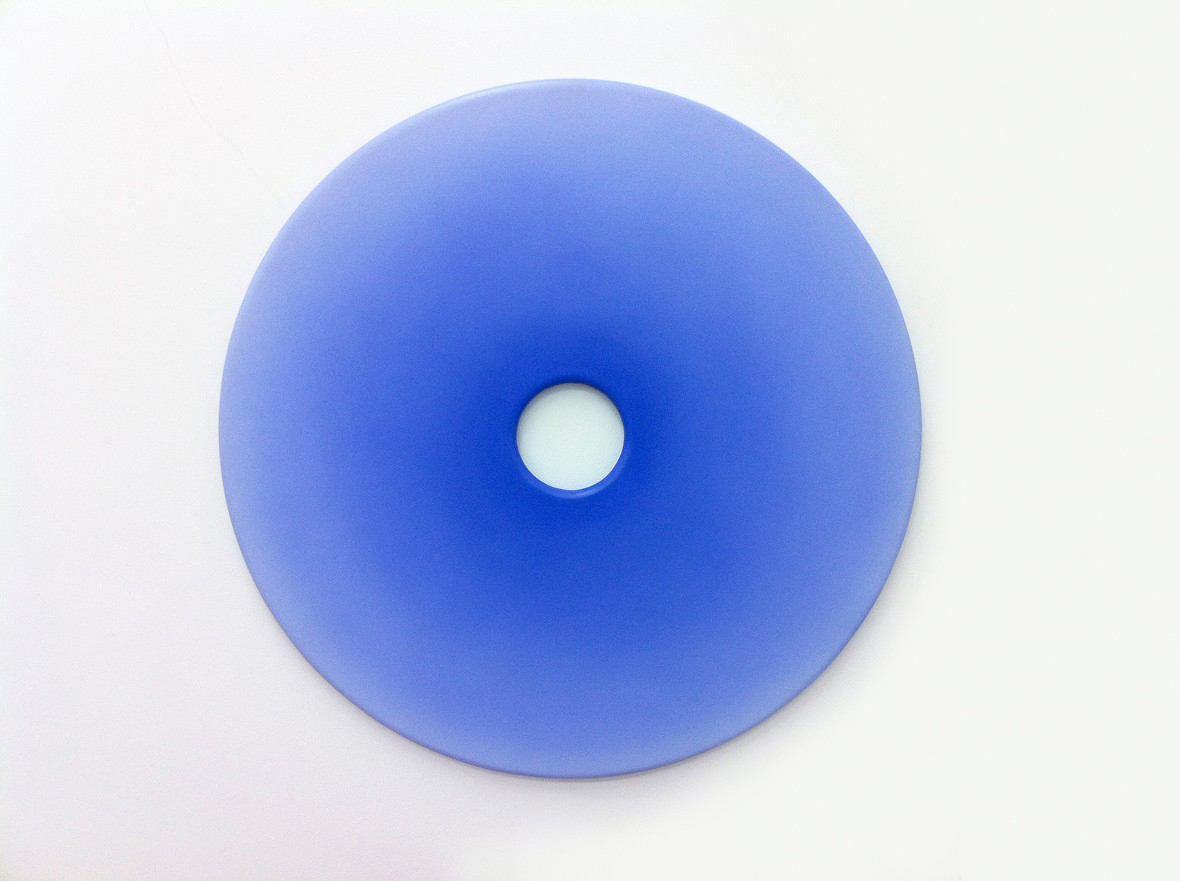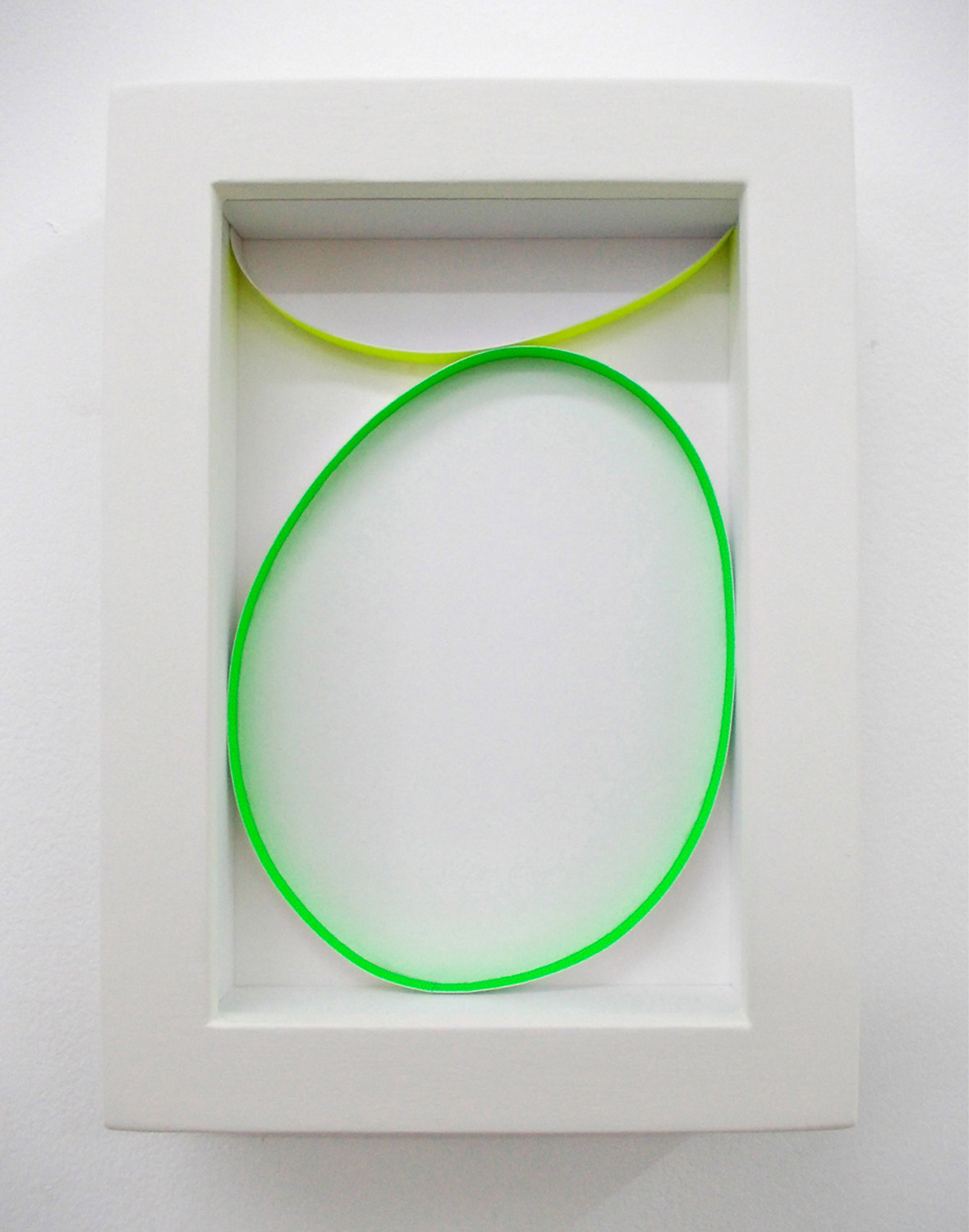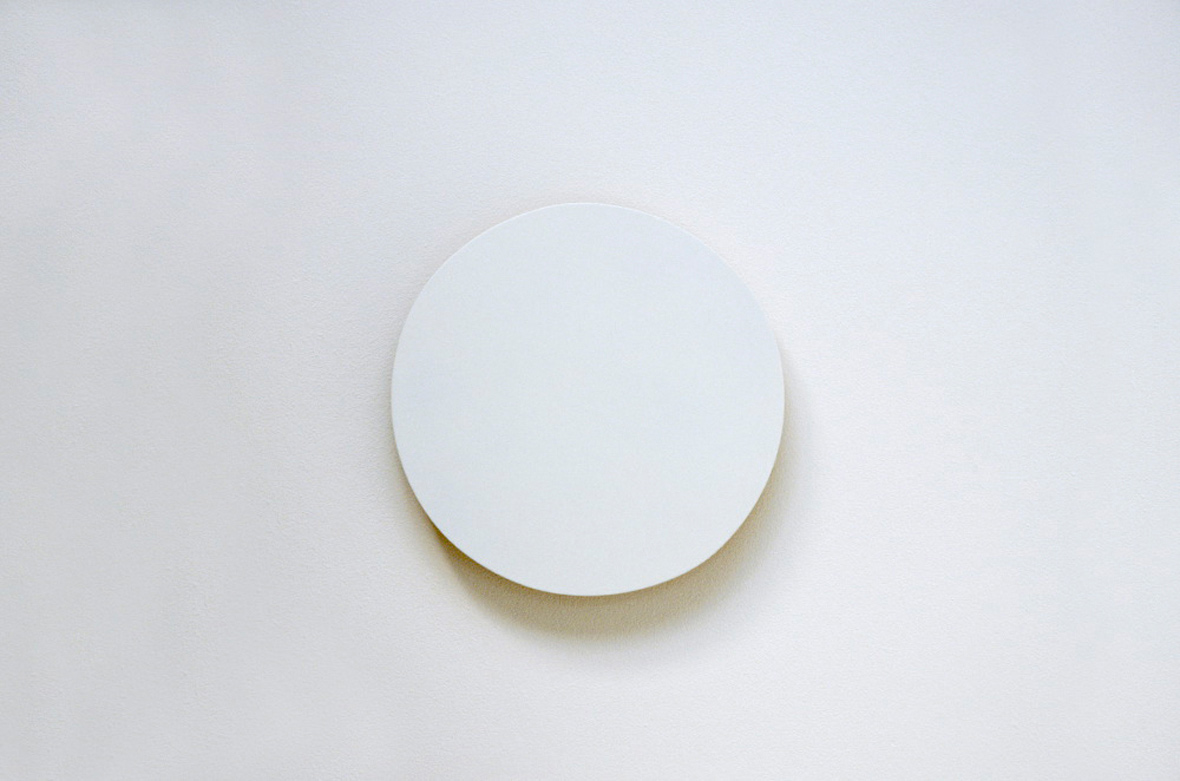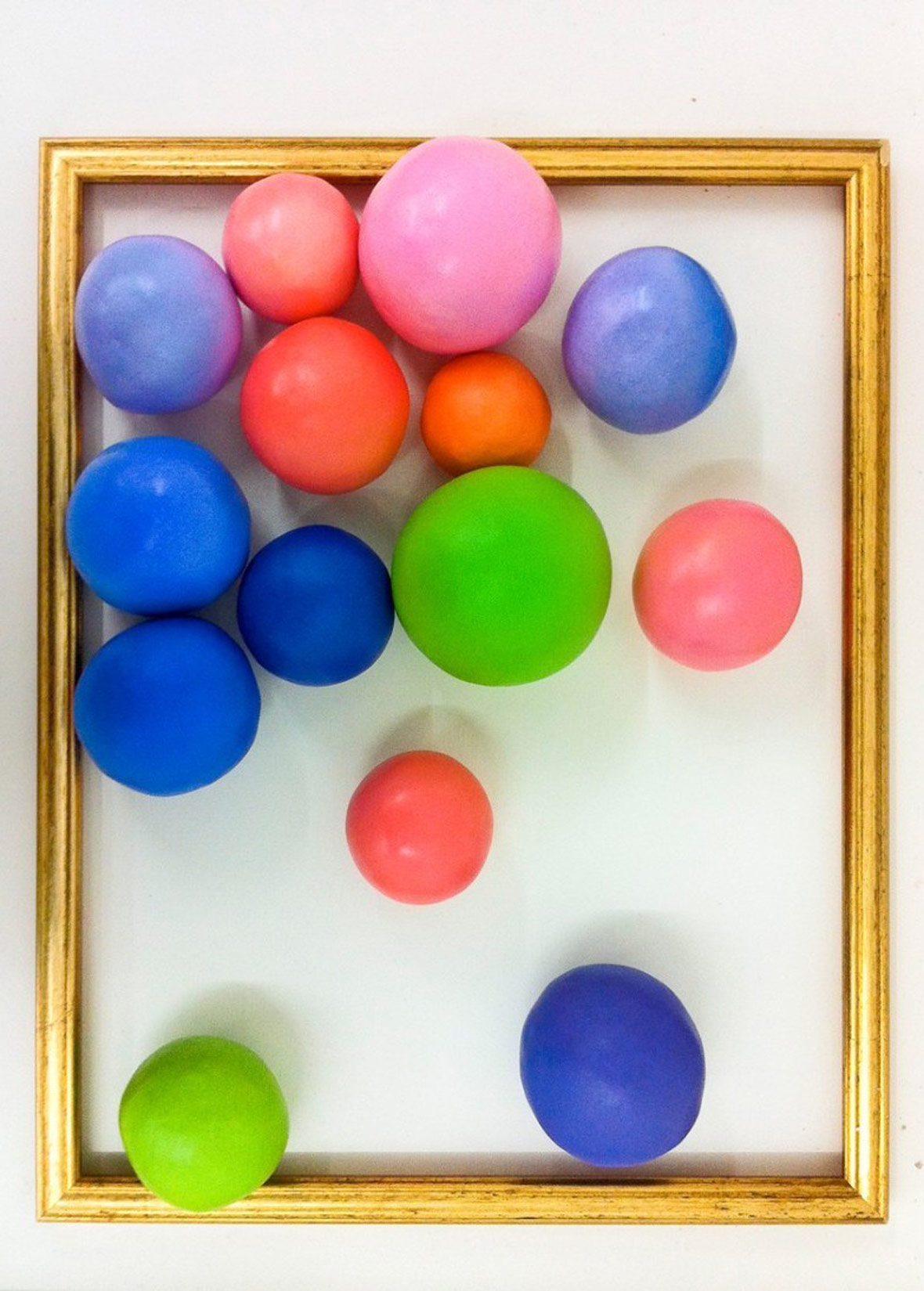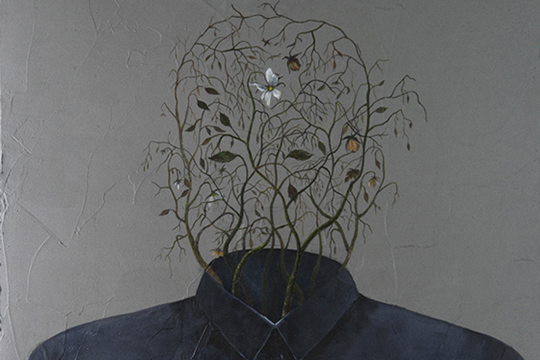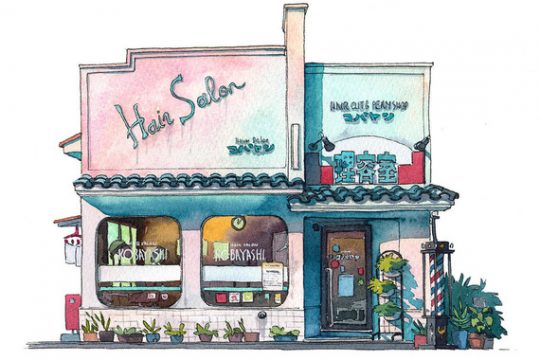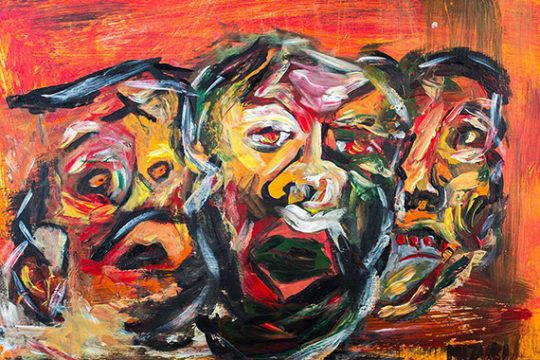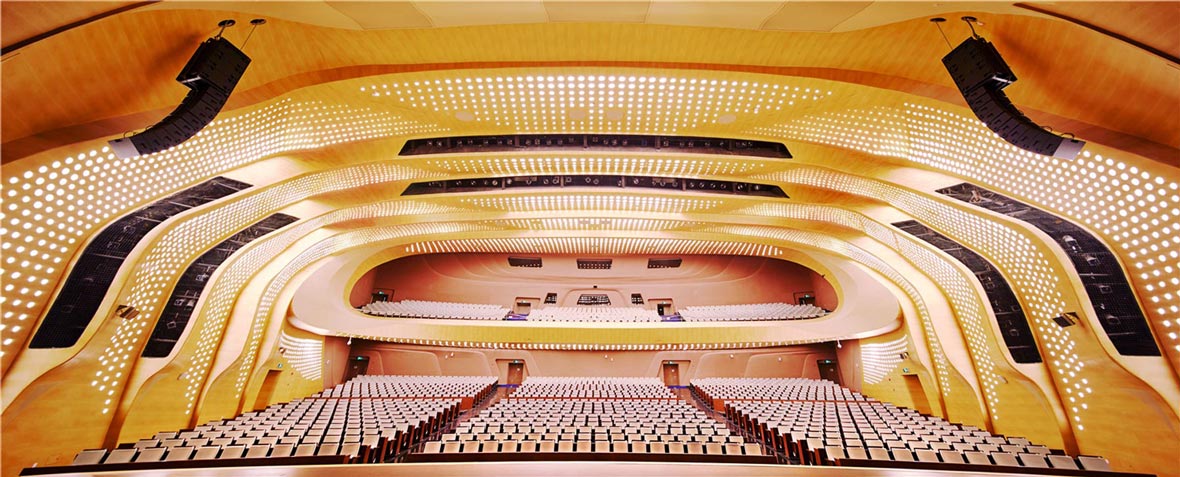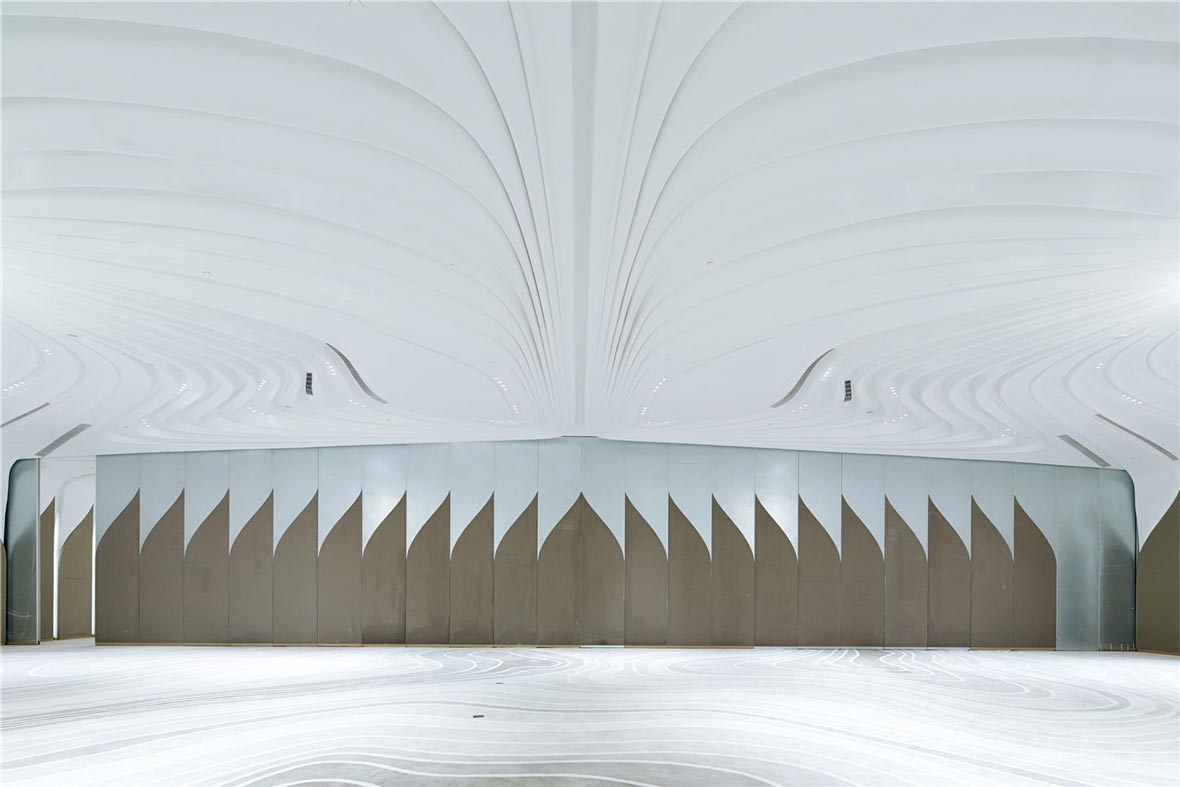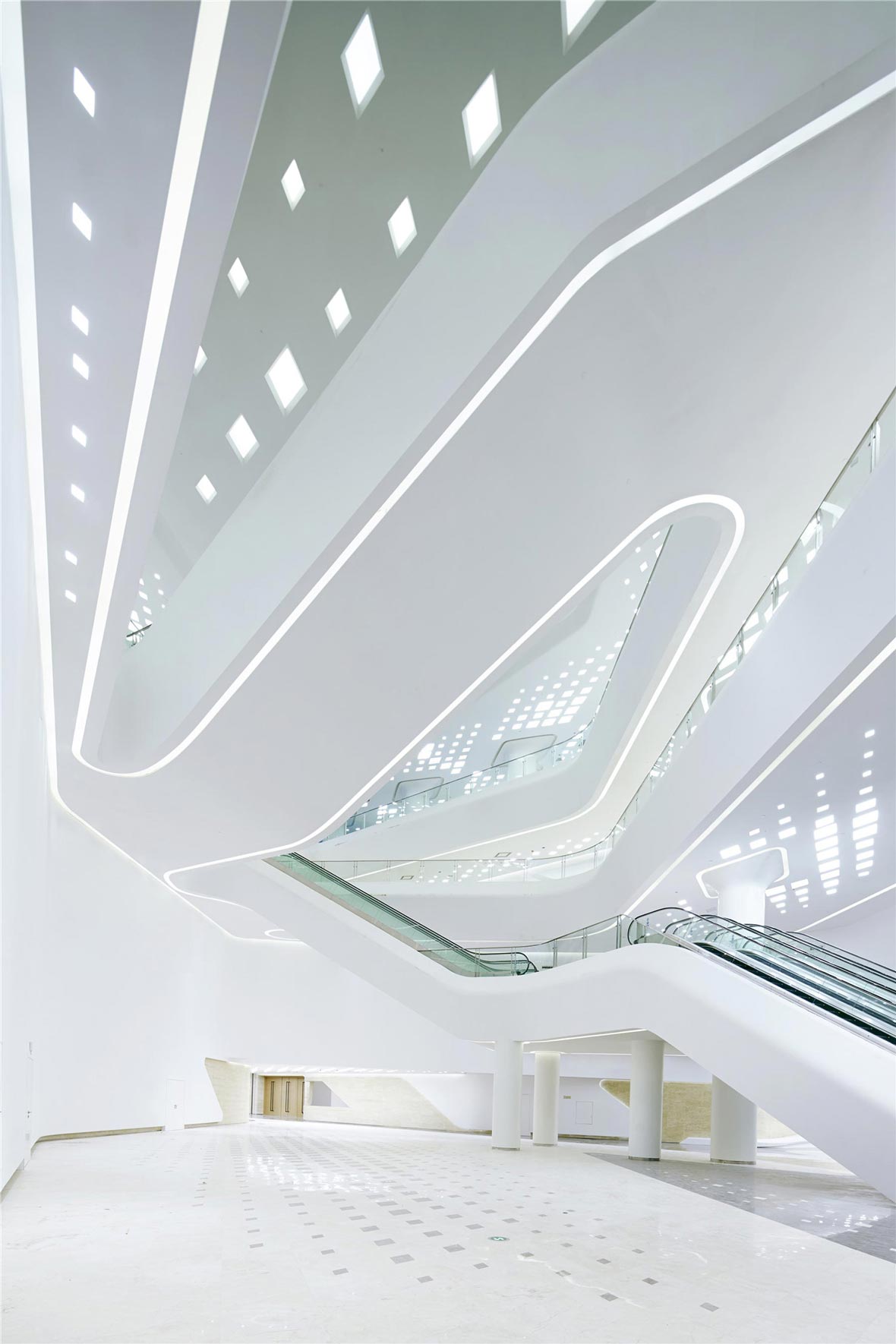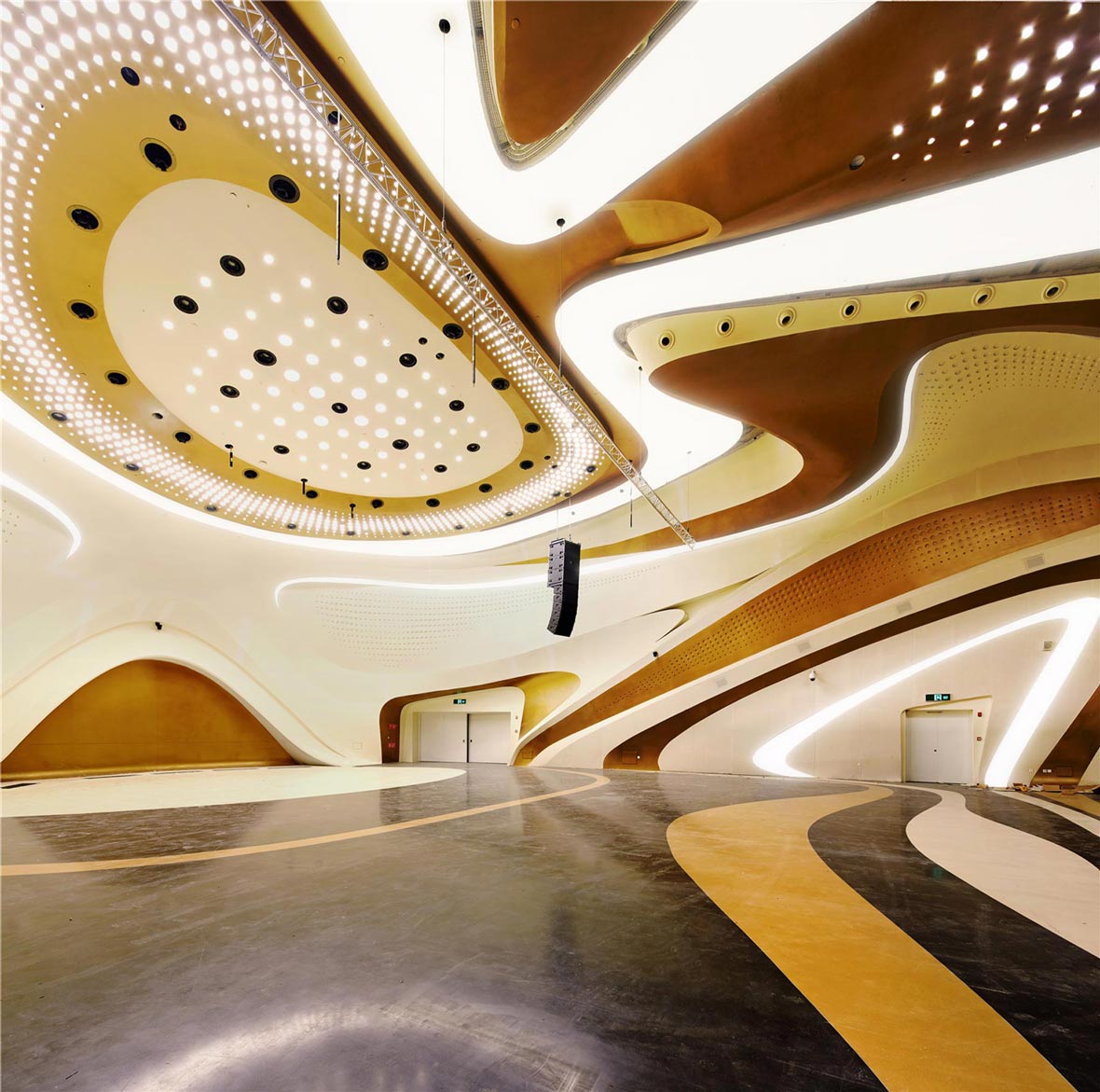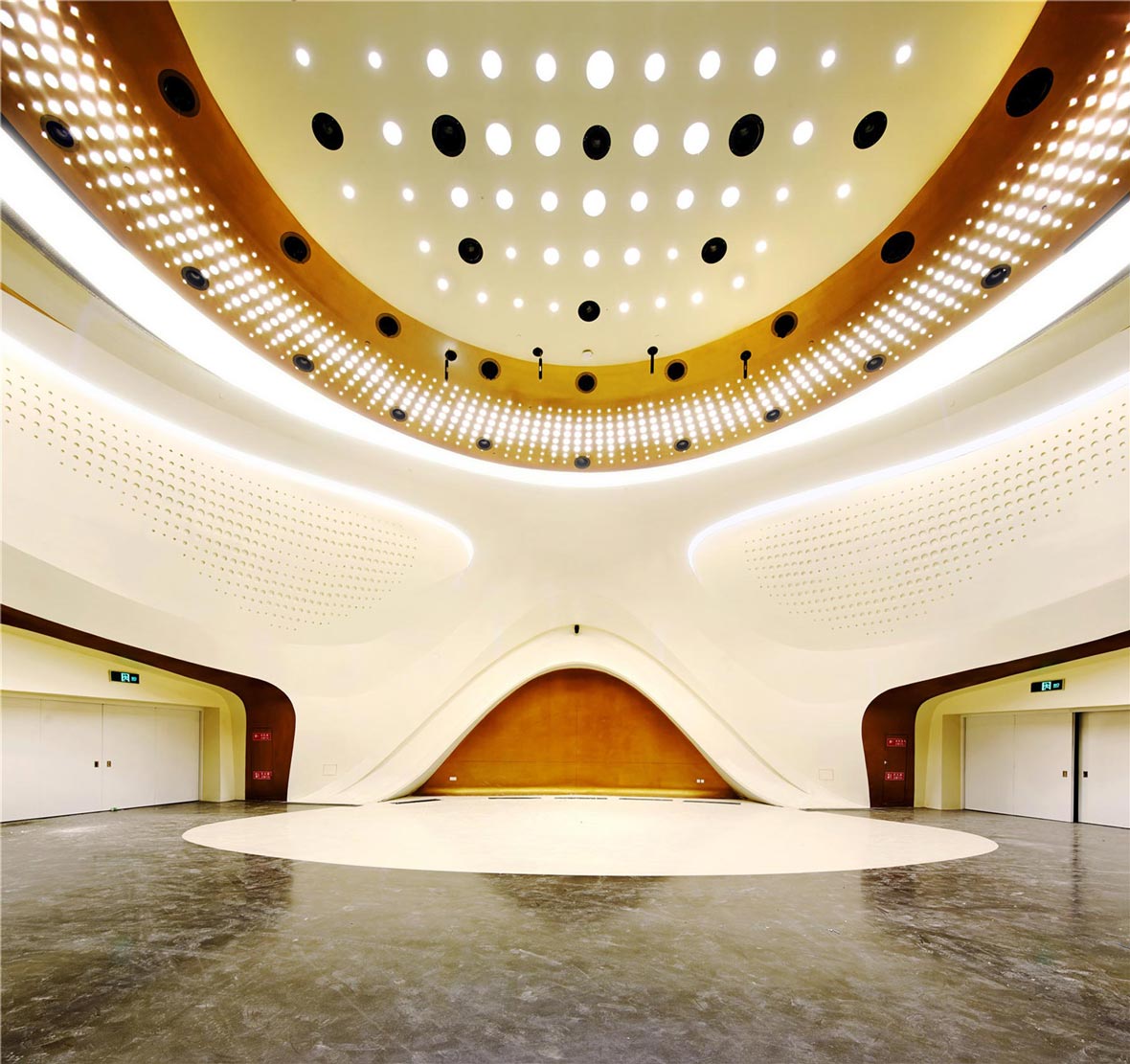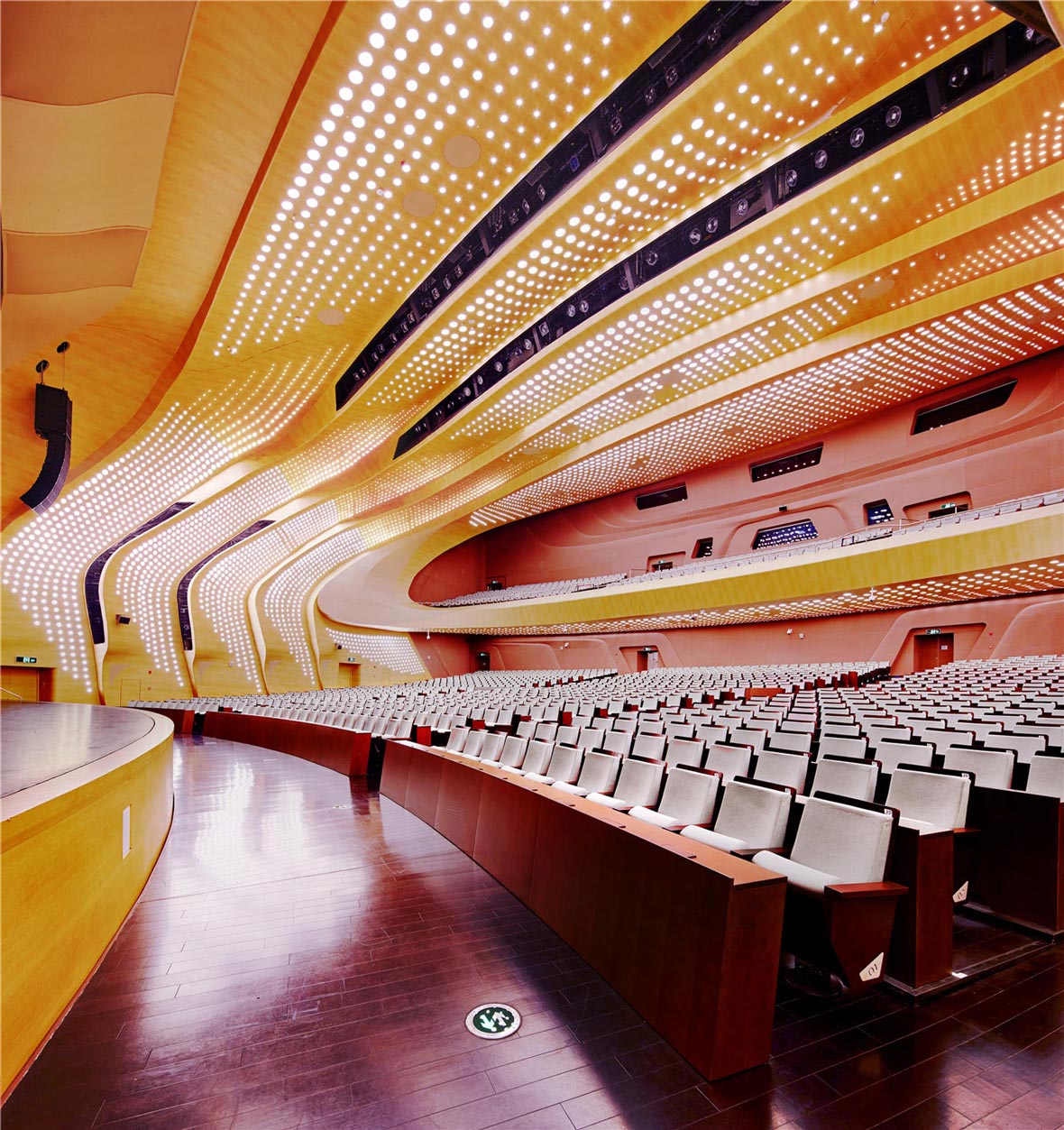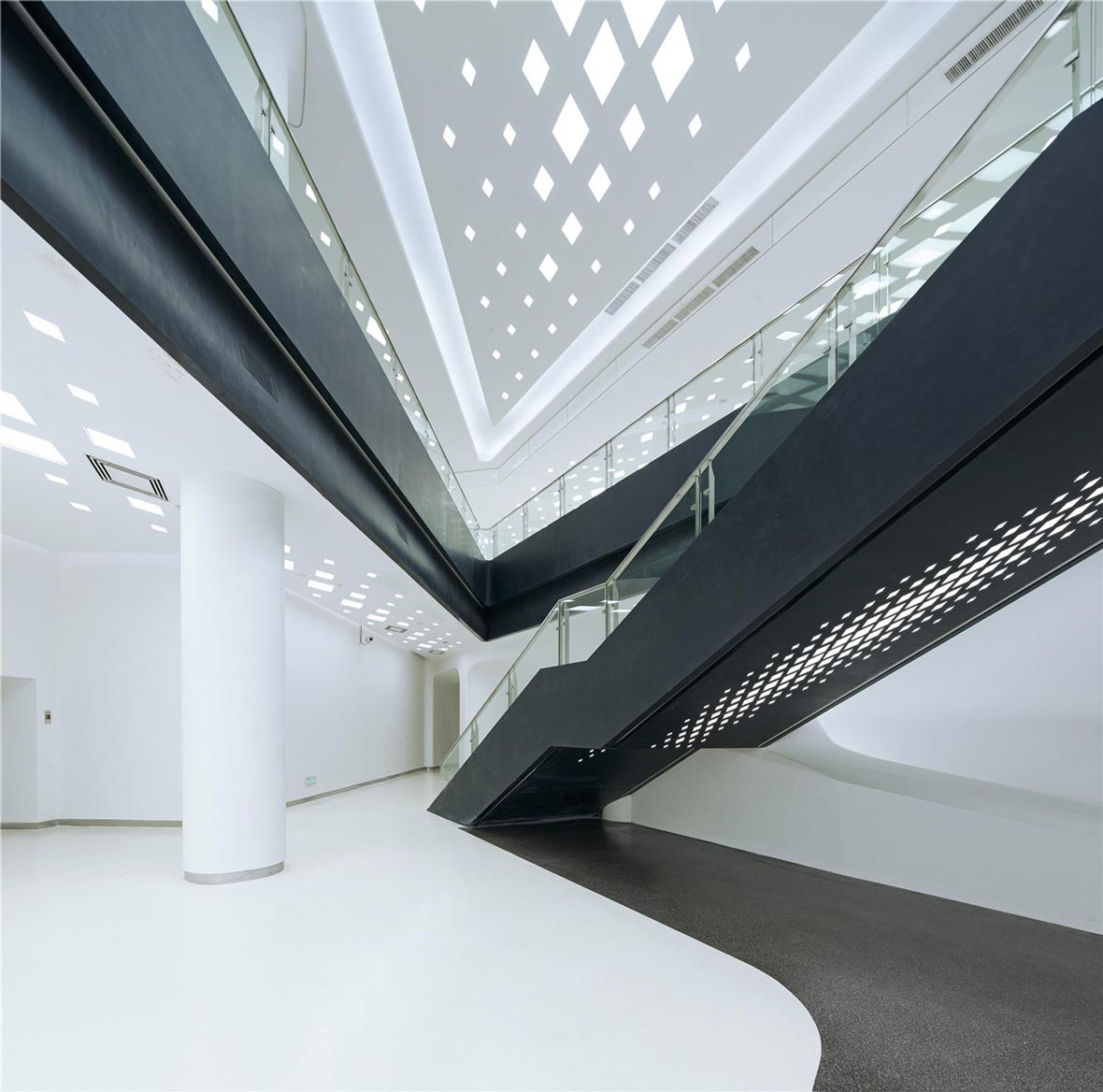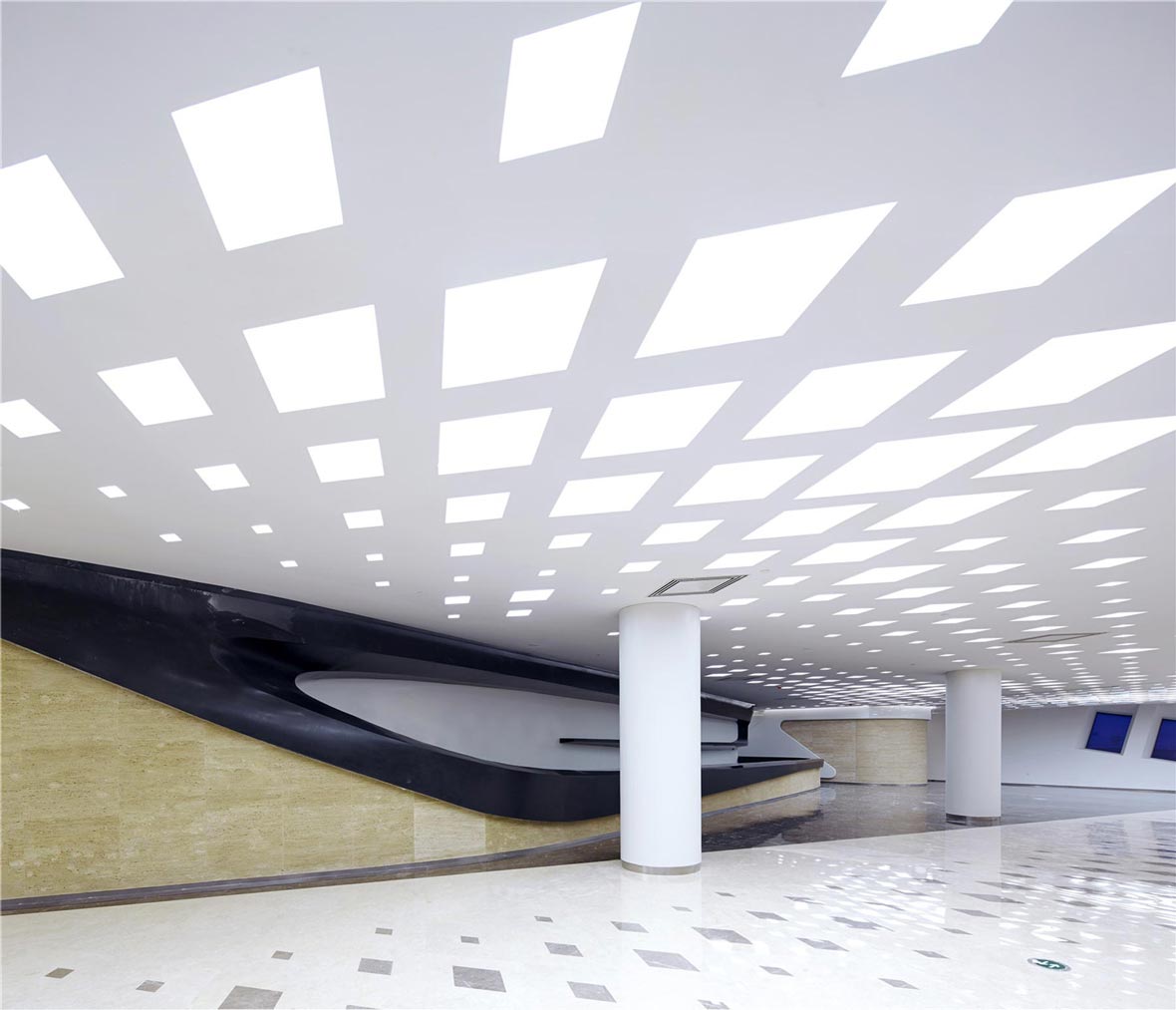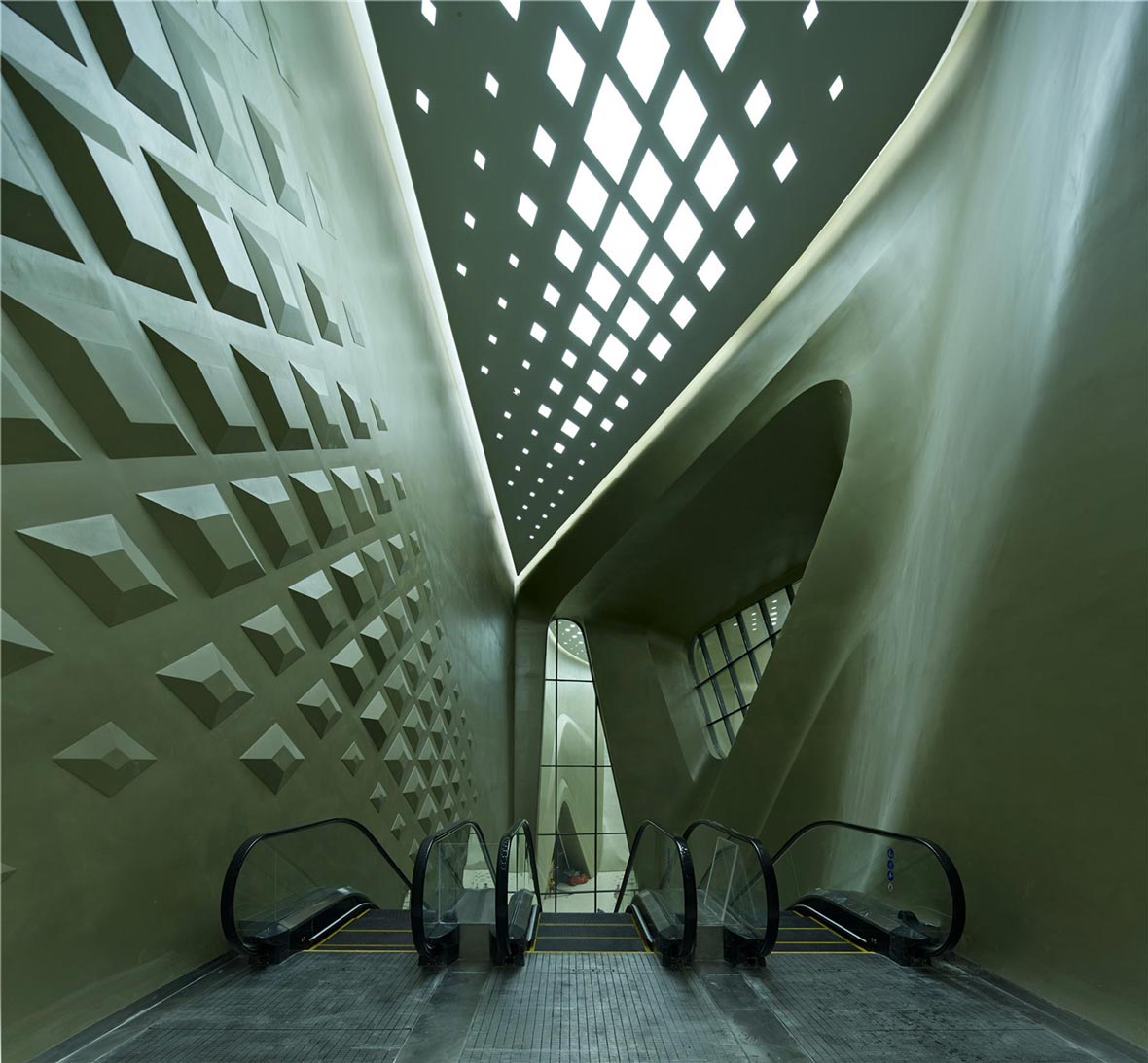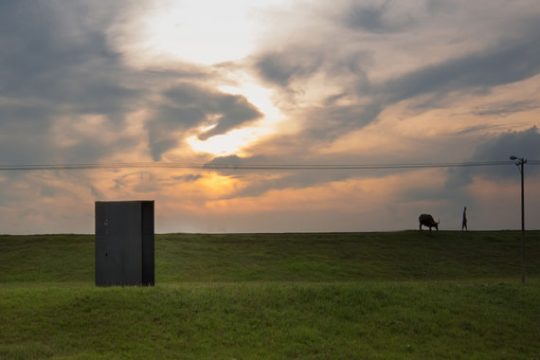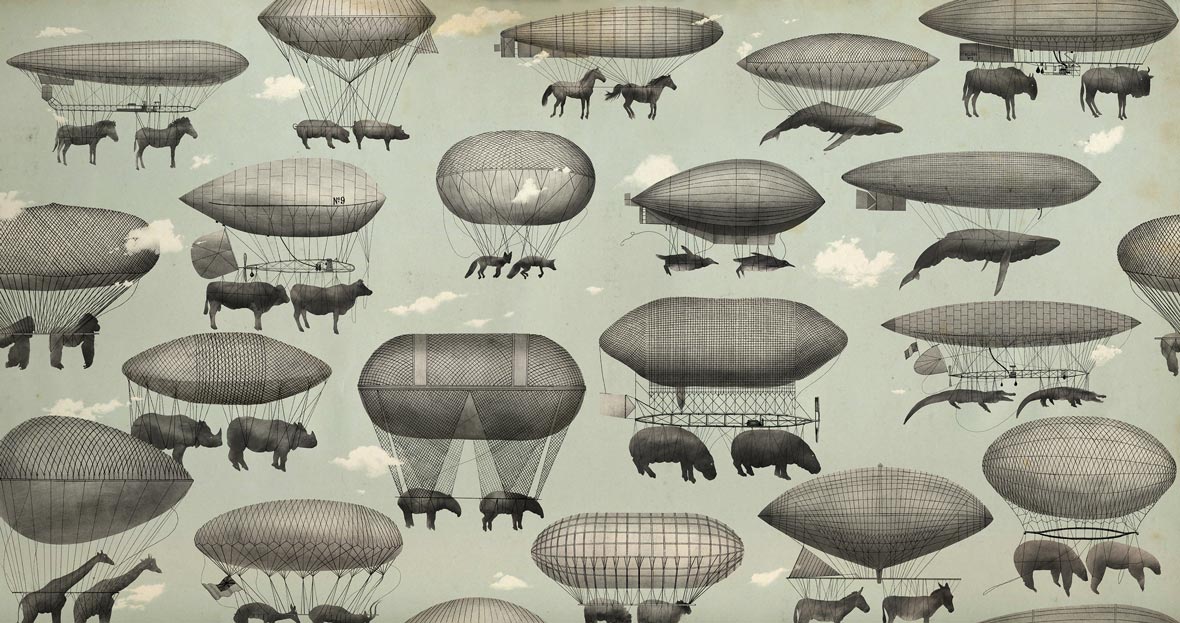
Page Tsou is a Taipei-based, award-winning visual artist, and is the founder of AUSPICIOUS design studio. His work is self-described as retrofuturistic art that still retains a contemporary aesthetic. With a background that consists of both Eastern and Western influences, the surreal worlds he creates are ever-changing and filled with a myriad of imaginative imagery, from fishes wearing top hats to a steampunk version of Noah’s Ark where animals are carried away via huge blimps. More than just aesthetically pleasing, his personal body of work is compelling and narrative-driven, putting various overlooked societal issues under the microscope. Through his storyteller’s approach, Page’s intention is to generate much-needed empathy through his art. We recently had the chance to talk to Page about his inspirations and his thoughts on Taiwan’s creative scene.
鄒駿昇是屢獲大獎的台灣視覺藝術家,也是AUSPICIOUS設計工作室的創始人。他描述自己的作品是具有當代美學的復古未來感藝術。他的創作背景来自于東、西方双重文化的影響,在他創作的不斷變化且神秘又富有想象力的超現實的世界里,從戴着著高禮帽的魚,到被充滿蒸汽朋克風格的諾亞方舟飛艇吊起的動物們。不僅是視覺上富有美感,他的作品也有著極強的故事性,用顯微鏡觀察著各種不同被人們忽視的社會問題。通過講故事的形式,鄒駿昇用他的作品有意識地去製造著現當今社會普遍所缺少的同理心。我們最近有機會和鄒駿昇聊了他的創作靈感和對台灣創新產業的看法。
Neocha: When would you say your interest in visual arts began?
Page: I was about seven years old when I started to fall in love with drawing. At the time, I didn’t really feel like I existed at school, because my grades weren’t very good, and the teachers didn’t pay any attention to me. But painting was my way to get acknowledgement, and it made me feel happy.
Neocha: 你對視覺藝術的興趣是從何時開始的?
Page: 大約七歲的時候開始喜歡畫畫,在那時期,除了畫圖,我在學校的存在感很薄弱,因為學科成績不太出色,老師從來沒注意過我,畫畫使我被肯定,也讓我感到快樂。
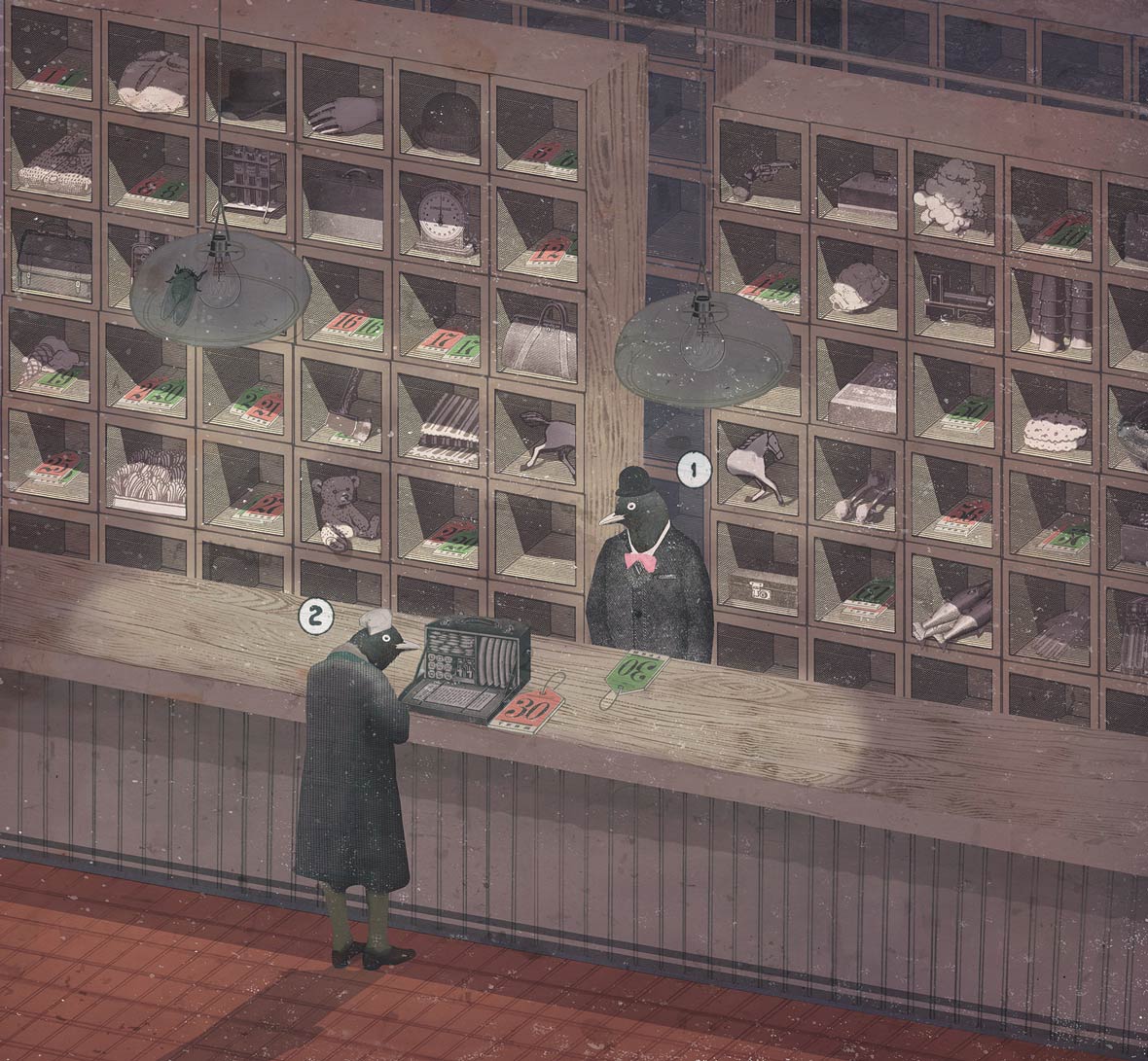
Neocha: How have the cities where you’ve lived influenced your work?
Page: I grew up in the suburbs of Fengyuan, near Taichung. The desolation of the semi-industrial landscape there is actually what fueled my desire to make beautiful things. I then spent my high school and college years in the countryside where I practiced traditional ink painting for seven years. Afterwards, I started becoming interested in graphic design. Then, in London, I came to realize that the overall atmosphere of an environment is the key to shaping a beautiful aesthetic. I particularly like the clashing contrasts between the new and the old, and I started paying more attention to details, gaining a more objective understanding of my own culture by observing it from a distance. I came to realize that delivering a message to the audience is much more important than just painting a beautiful painting, and as a result, I gained a more overarching insight into creativity.
Neocha: 你所居住過的城市為你的作品帶來什麼樣的影響?
Page: 我在台中豐原郊區成長,那個半工業地帶的蕭條環境讓我對美好事物更加渴望。後來高中和大學在鄉下度過,畫了七年傳統水墨之後開始對平面設計感到興趣。在倫敦我理解到大環境的整體氛圍才是形塑美感的關鍵,我喜歡新舊混合和衝突與對比,對細節更講究,從遠方觀看自己的文化特質也客觀許多。並且理解到傳達訊息比只是把圖畫漂亮重要,對創意有了更宏觀的包容性。
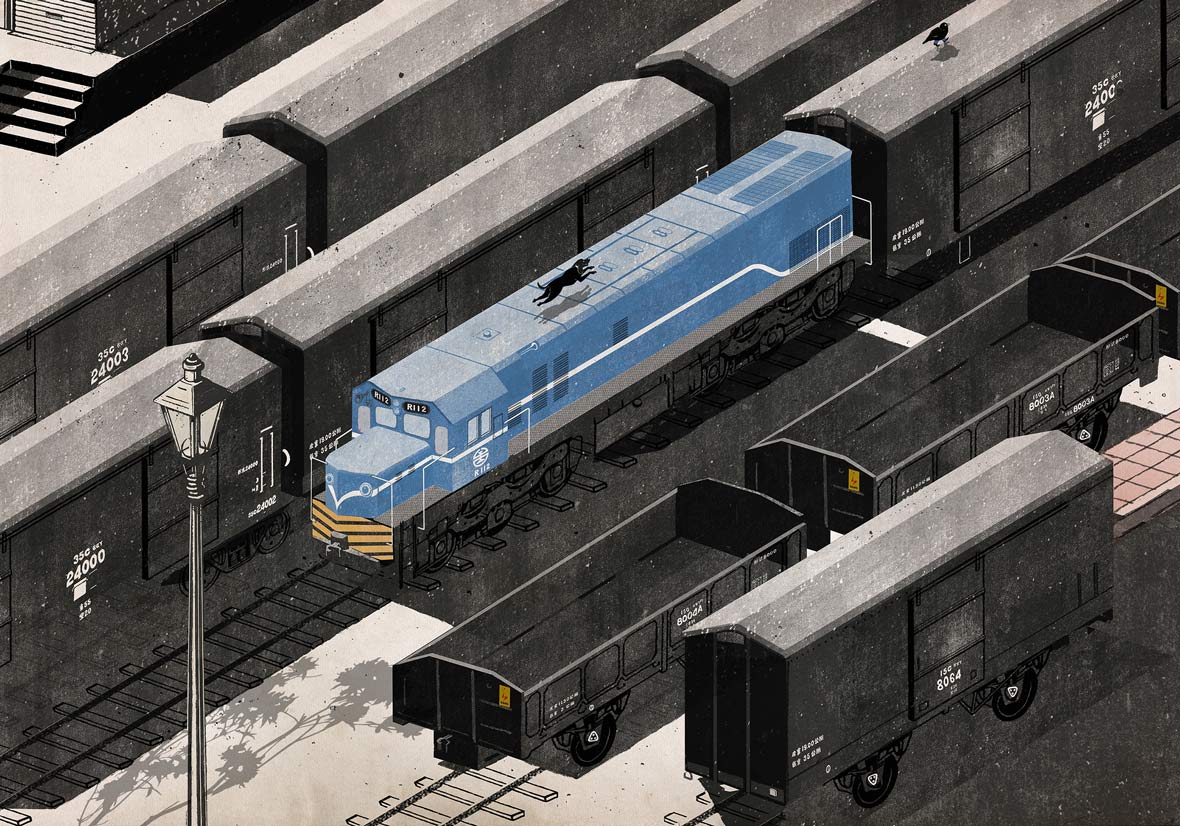
Neocha: Where do you draw your inspiration from? How do you feel like these inspirations have shaped your unique aesthetic?
Page: I am influenced by all aspects of life. I like to learn about different narrative techniques from movies, and I pay close attention to how the director controls the atmosphere and transitions between scenes. I appreciate Andy Warhol’s sense of modernity, the serenity of Edward Hopper’s work, the creativity of Damien Hirst, the non-conformity of Banksy, the aesthetic of Dieter Rams, the composition and colors of Wes Anderson’s work, Carlo Scarpa’s attentiveness to spatial details, and Le Corbusier’s scale of proportions. I could actually go on and on. In short, I take all of these artistic qualities that I like, and after internalizing them, it all eventually comes together to become my own personal aesthetic.
Neocha: 哪些事物會為你帶來影響?(書籍、電影、某位藝術家….等)而這些又如何塑造出你獨特的美學?
Page: 影響我的事物是很全面的,我喜歡從電影裡學習各種敘事的方式,我會特別注意氣氛的掌握和轉場之間的安排。我欣賞Andy Warhol的時代性,Edward Hopper的寧靜,Damien Herst的創意,Banksy的體制之外,Dieter Rams的美感,Wes Anderson的構圖與色彩,Carlo Scarpa的空間細節,Le Corbusier的比例感。其實也講不完,總之就是集結各種喜好與特質,內化之後,就變成屬於自己的美學。
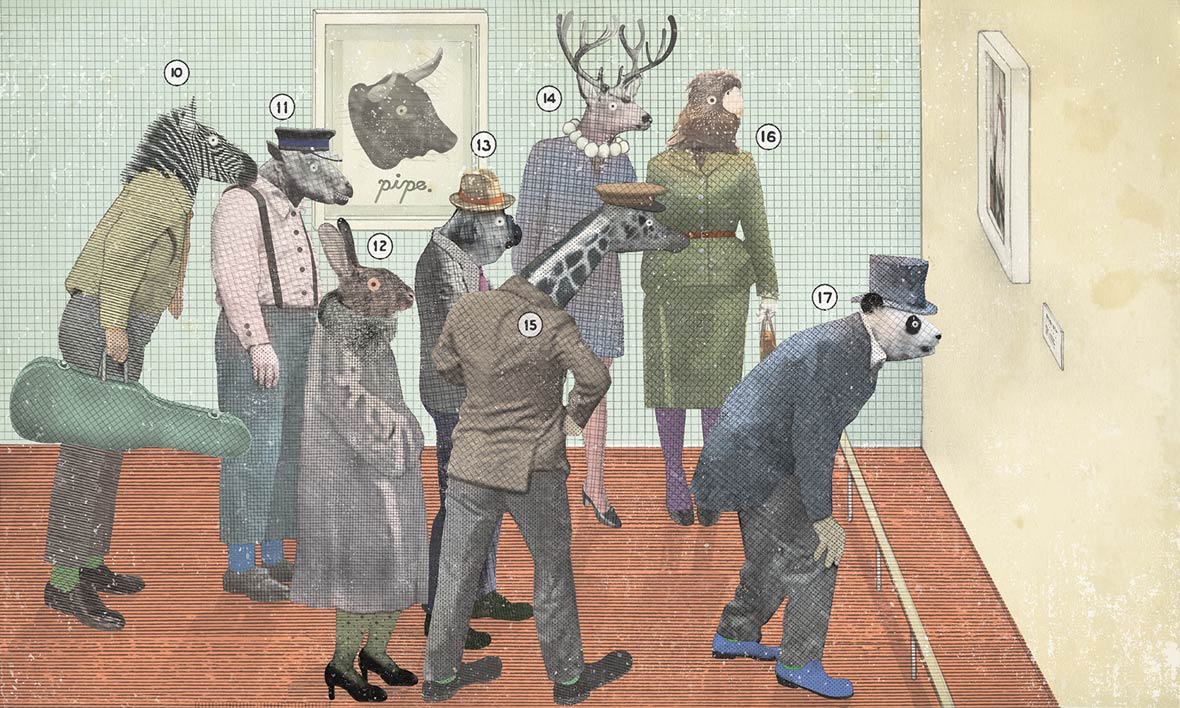
Neocha: What challenges do you feel Taiwanese creatives face in today’s market? Do you currently face or have you faced similar hardships in the past? If so, what advice would you give to these up-and-coming creatives?
Page: It’s hard for a normal Taiwanese person to appreciate the invisible and intangible value of creativity and art. Professional designers and artists often face disrespectful attitudes about their work, and business owners can find it quite hard to communicate with creatives. I consider it a problem of the whole environment. Taiwan just needs more time. As long as creatives remain persistent and continue to create great work, things will eventually change for the better.
Neocha: 你認為台灣創意人才在現今市場上面臨什麼樣的挑戰?你目前或曾經是否有面臨相同困境?如果有的話,你會給予這些創意人才什麼樣的意見?
Page: 台灣普遍民眾對於看不到的價值比較難接受,常有對於專業不尊重事情發生,甚至許多業主並不清楚如何和創作人溝通。那是大環境的問題,需要給台灣多些時間,創意人只能繼續堅持做對的事情,把事情做到位,時間久了總會有轉機。
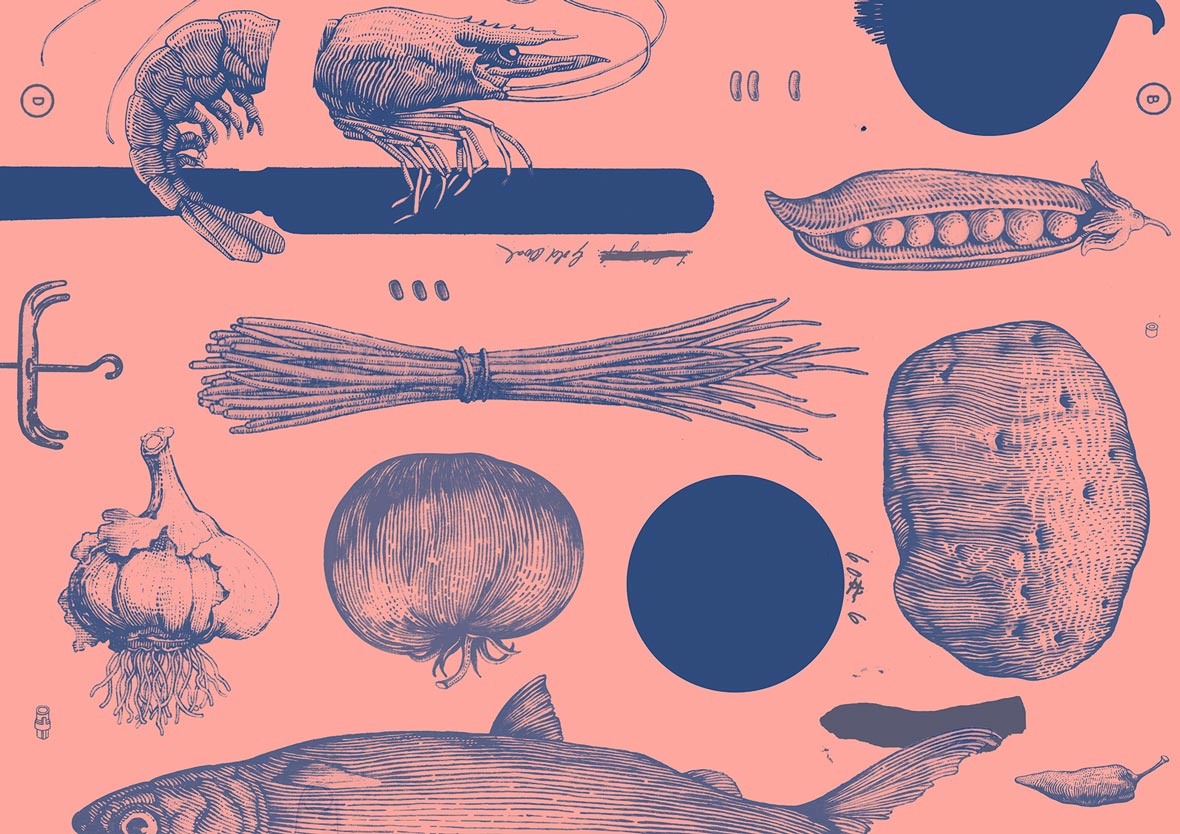
Neocha: What kind of effect do you think Taipei being chosen as the 2016 World Design Capital has on Taiwan? What do you think the future holds for Taiwan when it comes to the creative industry?
Page: With World Design Capital taking place in Taipei this year, there have been more design-focused events, which allow more people to participate and gain a deeper understanding of design. The government is gradually discovering the importance of the creative industry, which means that creatives will have more opportunities in the future. Nowadays, with the convenience of the internet, it’s easy for exceptional creatives to connect with the rest of the world.
Neocha: 你認為2016年臺北市被選為世界設計之都能夠帶給臺灣什麼樣的影響?你認為台灣創意人才具有什麼樣的未來?
Page: 都市裡多一點設計的活動發生,讓民眾多些機會參與設計並且認識設計。政府逐漸重視文創產業,創意人在未來將有更多機會。網路的便捷,創意人只要表現出色,很容易便能和外界合作。
Neocha: What would you say the most difficult part of doing a commercial project versus a personal project is? From your experience, do you feel like working for Taiwanese brands and international brands are different?
Page: There are more conditions and requirements when it comes to creative work in commercial projects. It’s more restricting because you have to meet the needs of the client while also thinking about the market. It takes time and perseverance to create personal projects. I think that as long as you can maintain a relationship of trust and respect with the client, you can have a degree of freedom, no matter whether it’s an international or a domestic project. The first prerequisite is to be demanding of yourself and make high-quality work. Only then can you start to talk about freedom.
Neocha: 對你來說,進行商業創作及個人創作之間最困難的部分是?依你的經驗,台灣品牌及國際商業活動給予藝術家的創作自由是否有任何差異?
Page: 商業案是個條件式的創作,要能夠達到業主需求,同時也要考慮市場性,限制比較多。個人創作需要時間跟執行的毅力。我覺得只要業主對你的專業保有信任度和尊重的時候,無論國內或國際都可以獲得某種程度的創作自由。先決條件是,你自己要先對自己有要求,作品水平夠了,才有條件談自由。
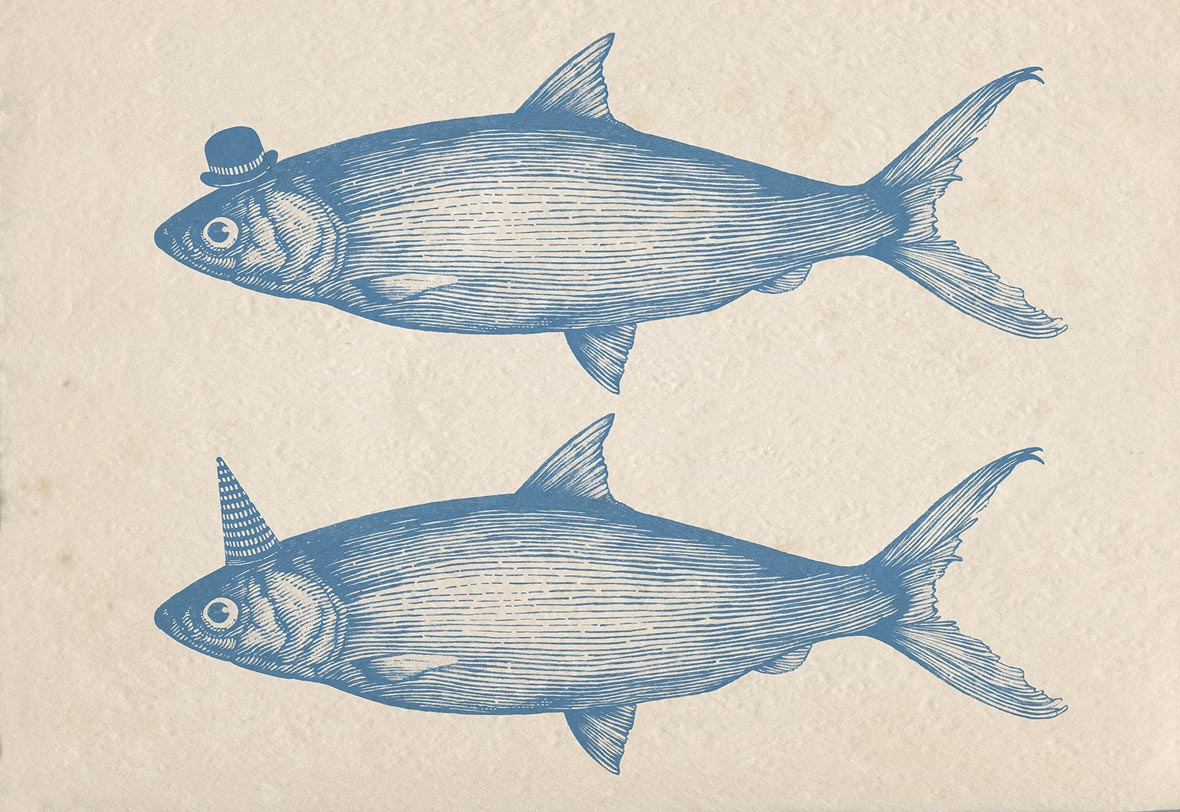
From October 13th to 30th, Visual Taipei, a collaborative exhibition curated by Page Tsou is happening at the Songshan Cultural and Creative Park. The exhibition features artists from around the world and aims to showcase Taipei in a new way through international perspectives.
从十月13号到30号,Visual Taipei,鄒駿昇策展的合作展会在松山文化创意园区展出。汇集艺术家来自世界各地。目标通过国际视角用新的方式展示台北。
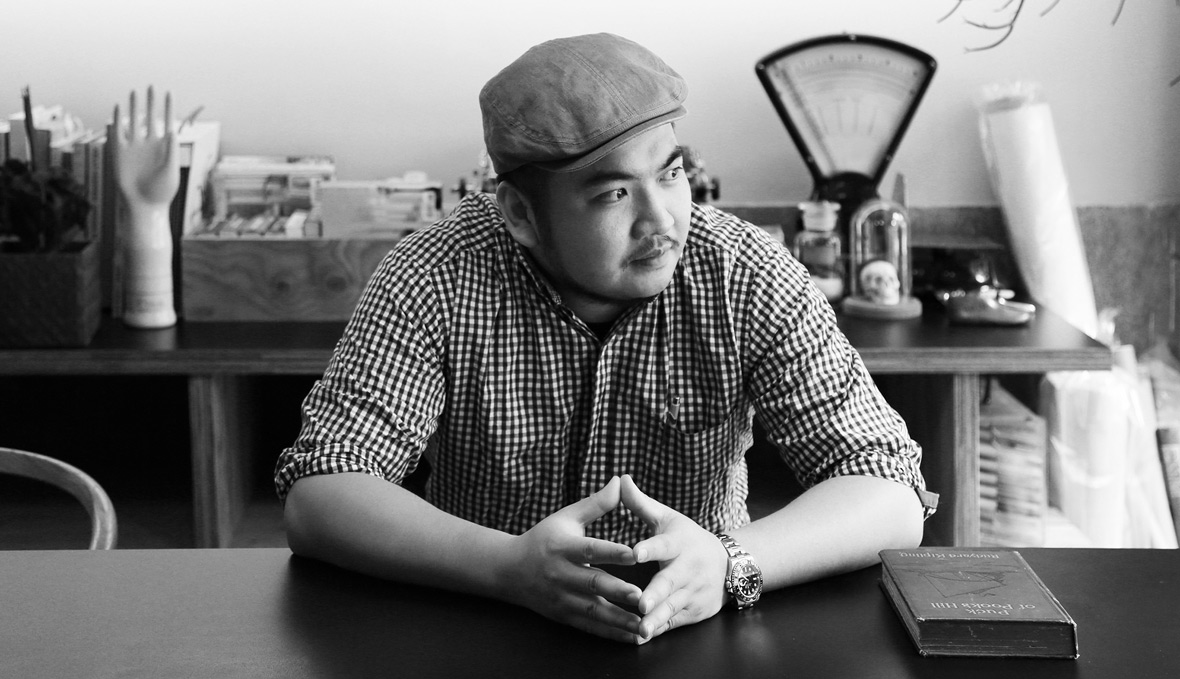
This story is part of a content partnership and media exchange between Neocha and World Design Capital Taipei 2016.
本篇文章來自內容合作夥伴Neocha和2016臺北設計之都的媒體交換。

